Navigation auf uzh.ch
Navigation auf uzh.ch
Archive |
| Overview of all news entries |
| |
| |
| a |
| Email Author |
| a |
| a |
| 2023-03-28, Archive |
Women in Science campaign 2023 |
| Women pioneers in research yesterday and today |
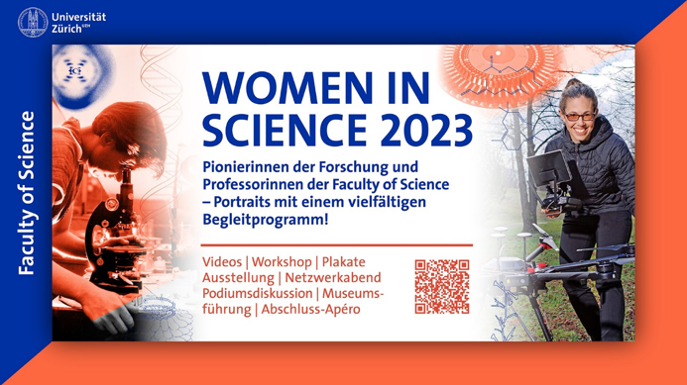 |
| From February to June 2023, we will present one of our current women professors and one international pioneer of the research field - because women in science need to be seen. With this initiative and its diverse program, we want to bring science closer to EVERYONE and inspire the next generation in particular. MNF's Women in Science campaign with Prof. Meredith (Merry) Christine Schuman - Prof. Corinna Ulcigrai - Prof. Alexandria (Ali) Liang - Prof. Ravit Helled - Prof. Catalina Pimiento Hernandez. |
| Korinna Esfeld, Dr. |
| Email Author |
| 2023-02-27, News |
Less fake news but increasing polarization on Twitter |
| Social media is transforming political communication dynamics. Together with an international team of researchers, Alexandre Bovet want to better understand the role of these new dynamics in politics. |
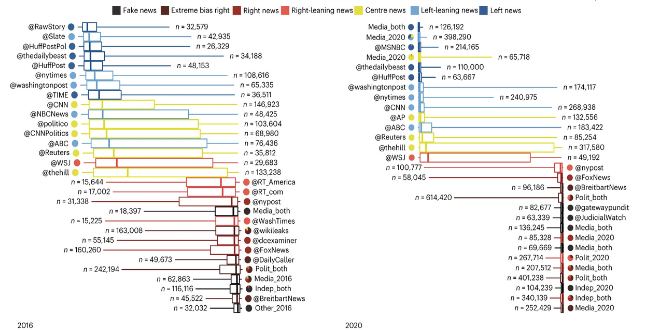 |
| Social media has been transforming political communication dynamics for over a decade. Any social media user has the potential to directly reach millions of users, in a few minutes, and influence political campaigns. Such control over political discussions used to be the privilege of just a few persons, principally journalists. On social media, they now have to compete directly with politicians, users spreading fake news, and members of the public for our attention. To better understand the role of these new dynamics in politics, together with an international team of researchers, Alexandre Bovet, Assistant Professor in Quantitative Network Science at the Department of Mathematics and the Digital Society Initiative, analyzed nearly a billion tweets sent during the 2016 and 2020 US presidential elections. The team measured the volume of politically biased content and the number of users propagating such information. By reconstructing the networks of news diffusion they were able to identify news influencers, i.e. the users with the greatest ability to spread news in the Twitter network. Collecting data from two subsequent elections enabled the team to see trends in participation, polarization, and stability of different kinds of influencers. In a broader sense, it revealed the role that the social media platform played in the elections. On the positive side, they measured a decrease in the number of tweets and users propagating fake and extremely biased news in 2020 compared to 2016, probably due to the measures put in place by Twitter to tackle such content. But they also revealed an increase in polarization, at the level of the top influencers and of the average users, in 2020, i.e. users were less likely to share information from other users with opposite political ideologies. This indicates increasing echo chambers for users with a lack of contrary views. They also observed interesting changes in the top news influencers. Between 2016 and 2020, for influencers with center and right-leaning political ideologies, the number of influencers affiliated with media organizations (journalists and accounts belonging to news outlets) declined by 10%, replaced mostly by politicians. On the other hand, influencers spreading fake news, who were largely comprised of users not affiliated with political or media organizations in 2016, have been replaced in good part by new users affiliated with media organizations that emerged between 2016 and 2020. This change in the news media landscape on Twitter indicates a shift in the relative influence of journalists and political organizations as well as a professionalization of the disinformation industry. This research reveals the quickly changing dynamics of social media platforms. It also asks the question of how platforms should be designed and regulated in order to control the increase of polarization and echo chambers. Alexandre Bovet was joined in the research by Boleslaw Szymanski, James Flamino, and Brendan Cross from the Rensselaer Polytechnic Institute, Alessandro Galeazzi of the University of Brescia and Ca’ Foscari University of Venice, Stuart Feldman of Schmidt Futures, Michael W. Macy of Cornell University, Zhenkun Zhou of the Capital University of Economics and Business in Beijing, Hernán A. Makse and Matteo Serafino of the City College of New York.
Top, the latent ideology of the top five influencers of each category is shown as a box plot representing the distribution of the ideology of the users who retweeted them. Bottom, the distributions for the users are shown in green and the distributions for the top 100 influencers of each news media category (computed as the median of the ideology of their retweeters) are displayed in purple. Box plots indicate the median and the 25th and 75th percentiles of the distributions with whiskers indicating the 5th and 95th percentiles. The sample size used for the computation of each box plot is reported to their side. Pie charts next to the influencers’ names represent the news categories to which they belong (weighted by their respective CI ranks in each category). (link to figure: https://www.nature.com/articles/s41562-023-01550-8/figures/6) 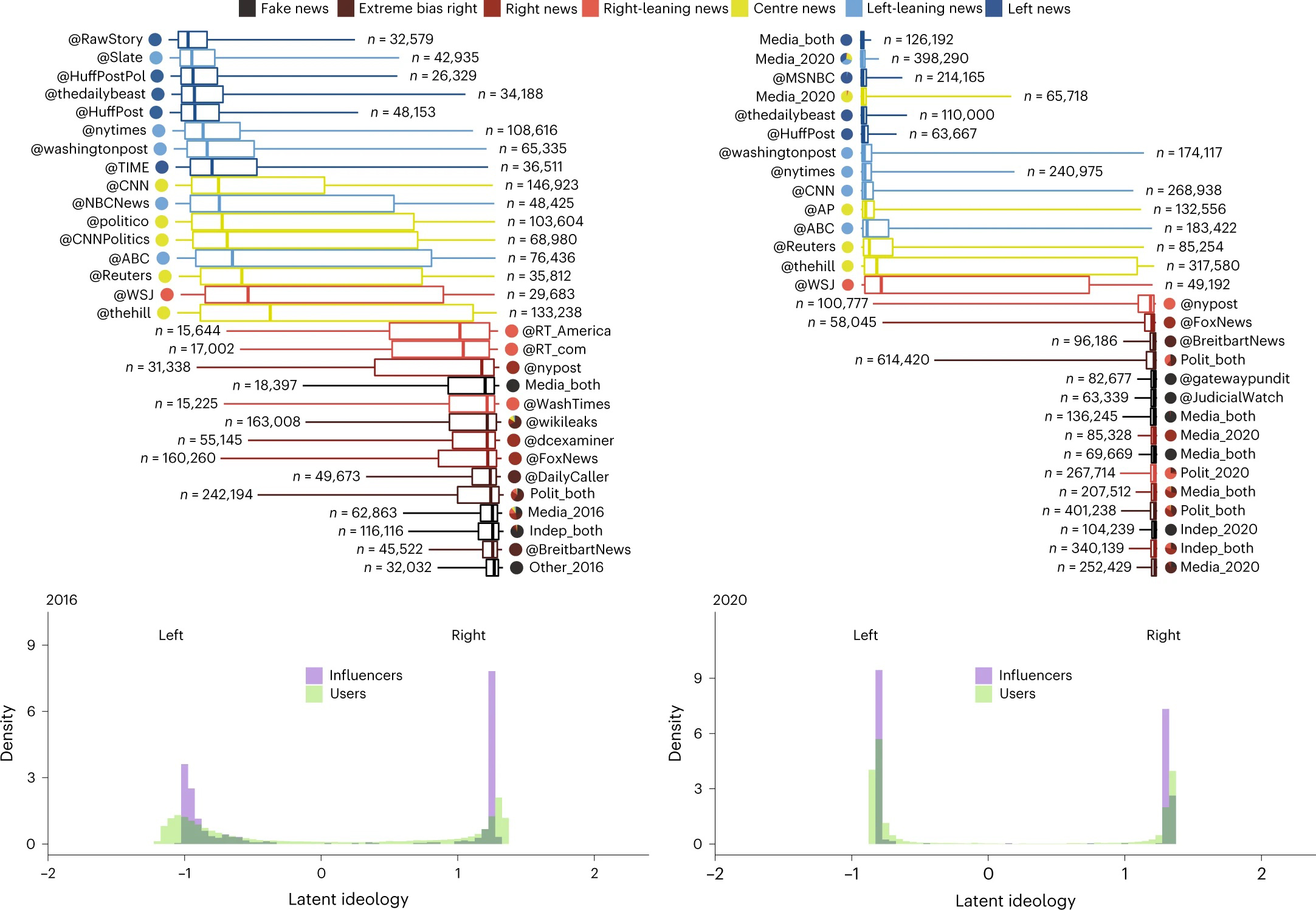 |
| Alexandre Bovet |
| Email Author |
| 2023-06-27, Sci. Publication |
Arthropods in species-rich forests contribute to improved productivity |
| An international team of Chinese, German and Swiss researchers has shown that forests with higher tree species richness tend to have a greater diversity of arthropods. In addition, the study shows that higher tree diversity promotes productivity, due to the suppression of herbivores by enemy arthropods. The results have recently been published in the journal Nature Ecology & Evolution. |
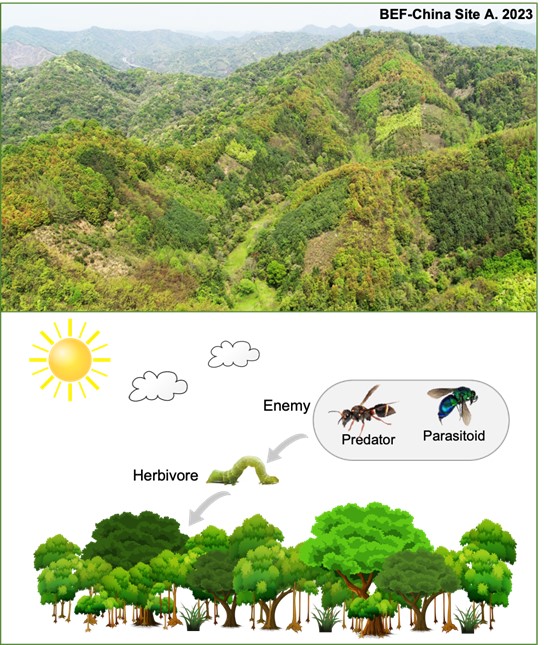 |
| An international team of Chinese, German and Swiss researchers has shown that forests with higher tree species richness tend to have a greater diversity of arthropods. In addition, the study shows that higher tree diversity promotes productivity, due to the suppression of herbivores by enemy arthropods. The results have recently been published in the journal Nature Ecology & Evolution. These findings underscore the importance of arthropod diversity as a mediator of tree diversity effects on forest productivity. The work suggests that managing forests for increased productivity will require both increased tree diversity and multitrophic diversity. Forests are home to 80% of terrestrial plant and animal diversity, making them a crucial component of global biodiversity conservation. However, biodiversity in forests is under serious threat from anthropogenic disturbance and climate change. Species-rich groups, such as arthropods, are declining dramatically due to the degradation of forests and loss of plant diversity. Most studies on biodiversity–ecosystem functioning (BEF) relationships have focused solely on plant diversity, neglecting the impact of the diversity of other trophic groups. In consequence, it remains unclear how the diversity of herbivores and their enemies affects ecosystem functions. Given the importance of forests to providing essential ecosystem services and global biodiversity, it is vital to understand these interconnections and take action to protect them. Using five years of data on aboveground herbivorous, predatory, and parasitoid arthropods along with tree growth data within a large-scale forest biodiversity experiment in southeast China (BEF-China), the authors reveal that the effects of increased tree species richness were consistently positive for species richness and abundance of herbivores, predators, and parasitoids. This finding is consistent with a previous study from another large grassland biodiversity experiment (Jena Experiment) and reinforces the importance of conserving plant diversity for preserving arthropod diversity. However, in contrast to the bottom-up control of arthropod diversity by plant diversity in the grassland study from central Europe, the new study in the species-rich forests of south-east China reveals that higher tree diversity can enhance the top-down control of enemies over herbivores, thereby contributing to increased productivity. An earlier study conducted at the same sites demonstrated that increasing plant diversity can promote forest productivity directly. The new study further shows that increasing plant diversity can also indirectly increase forest productivity by promoting arthropod diversity and trophic interactions. Prof. Xiaojuan Liu, a former postdoc at UZH and last author of the study, says, “this underscores the critical role of conservation efforts aimed at preserving biodiversity in forests.” Overall, although several recent studies have documented declines in terrestrial arthropod biodiversity, few have explored the consequences for ecosystems. “This work closes this gap by revealing the important role of arthropod diversity in BEF relationships”, says Prof. Bernhard Schmid, one of the senior authors of the study.
Article: Yi Li, Bernhard Schmid, Andreas Schuldt, Shan Li, Ming-Qiang Wang, Felix Fornoff, Michael Staab, Peng-Fei Guo, Perttu Anttonen, Douglas Chesters, Helge Bruelheide, Chao-Dong Zhu, Keping Ma, Xiaojuan Liu. Multitrophic arthropod diversity mediates tree diversity effects on primary productivity. Nature Ecology & Evolution. 2023. Article link: https://www.nature.com/articles/s41559-023-02049-1
|
| Bernhard Schmid |
| Email Author |
| 2023-06-27, Sci. Publication |
1 million from the Werner Siemens Foundation for project idea |
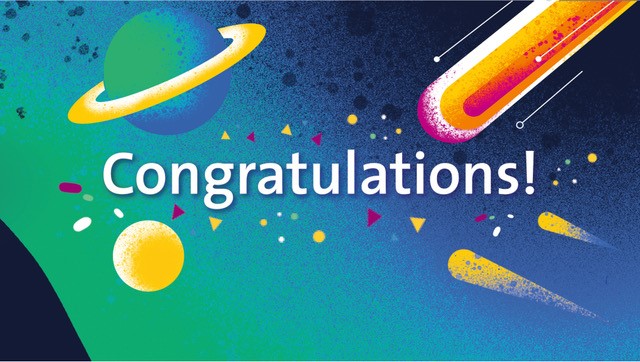 |
| With their project on the development of green hydrogen, Greta Patzke and David Tilley are among six project groups to receive 1 million Swiss francs from the Werner Siemens Foundation (WSS). On the occasion of its 100th anniversary, the WWS had announced an ideas competition for a WSS research center "Technologies for Sustainability". In doing so, they are funding a WSS research center that will research and develop technologies for sustainable resource use. The center will be endowed with a total of 100 million Swiss francs for a funding period of ten years. This decision will be taken in December 2023. |
| KE |
| Email Author |
| https://www.news.uzh.ch/en/articles/news/2023/wss_million_chemistry.html |
| 2023-05-04, Awards and Honors |
The countdown is on! - Titan arum flowers in Botanical Garden UZH! |
| After four years, the time has come again, the Titan arum (Amorphophallus titanum, arum) begins to unfold its inflorescence. It will only take a few more days until the huge flower is fully open and emits its special scent - carrion smell. When it does, the plant will bloom for only 48 hrs. |
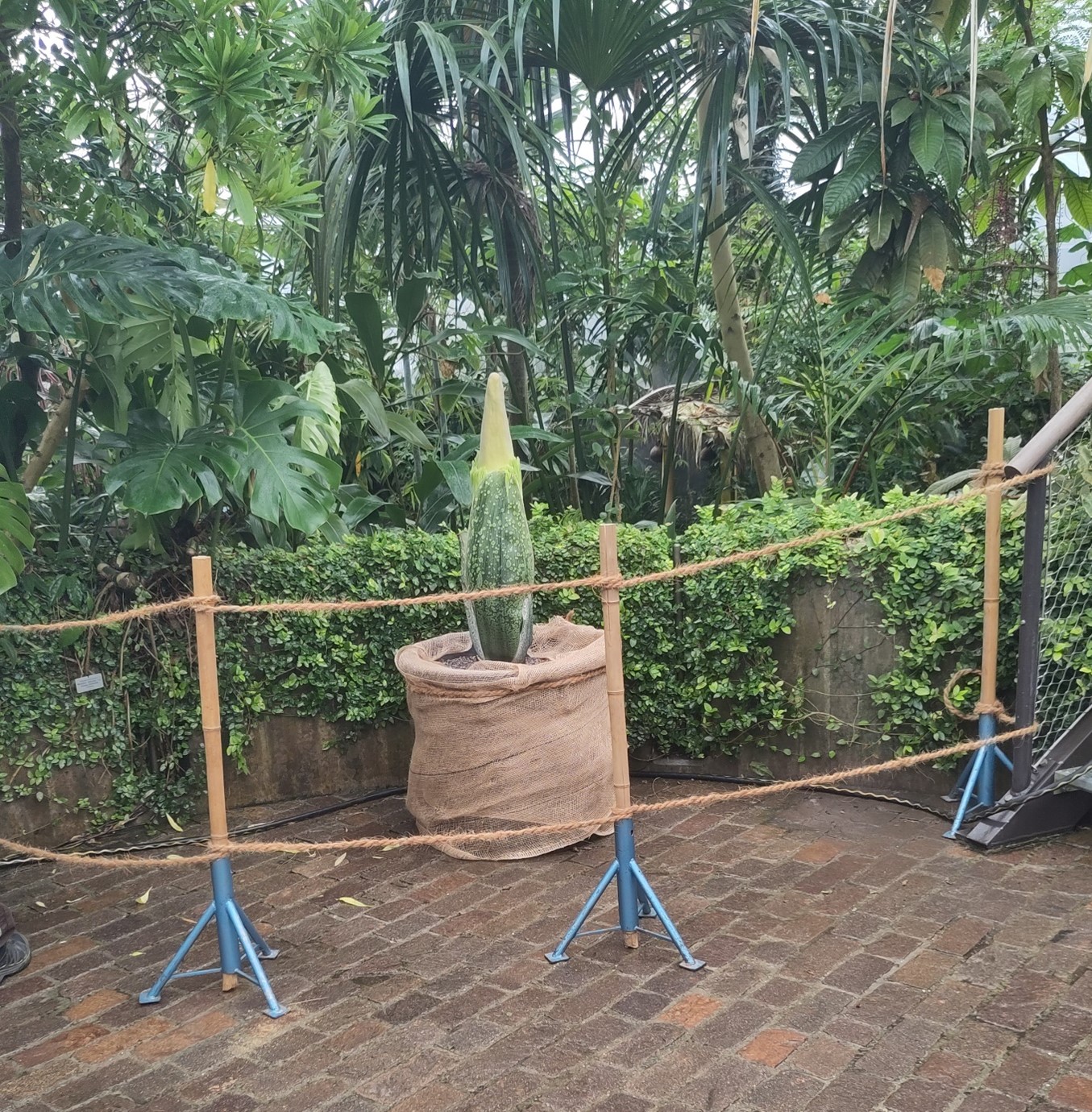 |
| After four years, the time has come again, the Titan arum (Amorphophallus titanum, arum) begins to unfold its inflorescence. It will only take a few more days until the huge flower is fully open and emits its special scent - carrion smell. When it does, the plant will bloom for only 48 hrs. When exactly this will be the case, we do not know yet. Perhaps over ascension? On the website of the Botanical Garden you can see the current state of development of the inflorescence. Once the flower is open, the tropical house will remain open in the evening until 9 pm.
A few more facts?
The larger the underground corm, the larger the inflorescence. In its native Sumatra, with a corm of about 100 kg, the inflorescence can grow up to 3 meters high and wide. In our case, the corm weighs 12 kg and the inflorescence will be correspondingly smaller - it will grow about 1 meter high.
The spectacle lasts only two days: a large spathe with a spadix in the middle unfolds and fills the tropical house with the smell of carrion. In its native habitat, the plant uses this to attract carrion beetles, which drop into the spathe and pollinate the many small flowers in the lower half of the spadix.
This is followed by a dormant period of several months, after which a leaf is produced that can grow up to 5 meters high. This allows the plant to photosynthesize to regenerate the corm. It can take years before the plant blooms the next time. 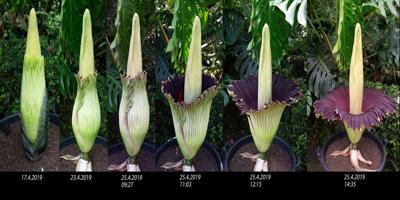 |
| Botanischer Garten der Universität Zürich, Caroline S. Weckerle |
| Email Author |
| Instagram: https://www.instagram.com/botanischer_garten_zurich/ Facebook: https://www.facebook.com/bg.uzh.ch
|
| 2023-05-21, Event |
"frighteningly beautiful pictures" – facts&forecasts on climate change |
| From June 1 to July 2, 2023, "erschreckend schöne Bilder" will be on display at Photobastei Zurich. They stage facts and forecasts about the climate crisis in an impressive and striking form. The exhibition is organized by the Fachklasse Grafik Luzern and the Department of Geography of the University of Zurich. |
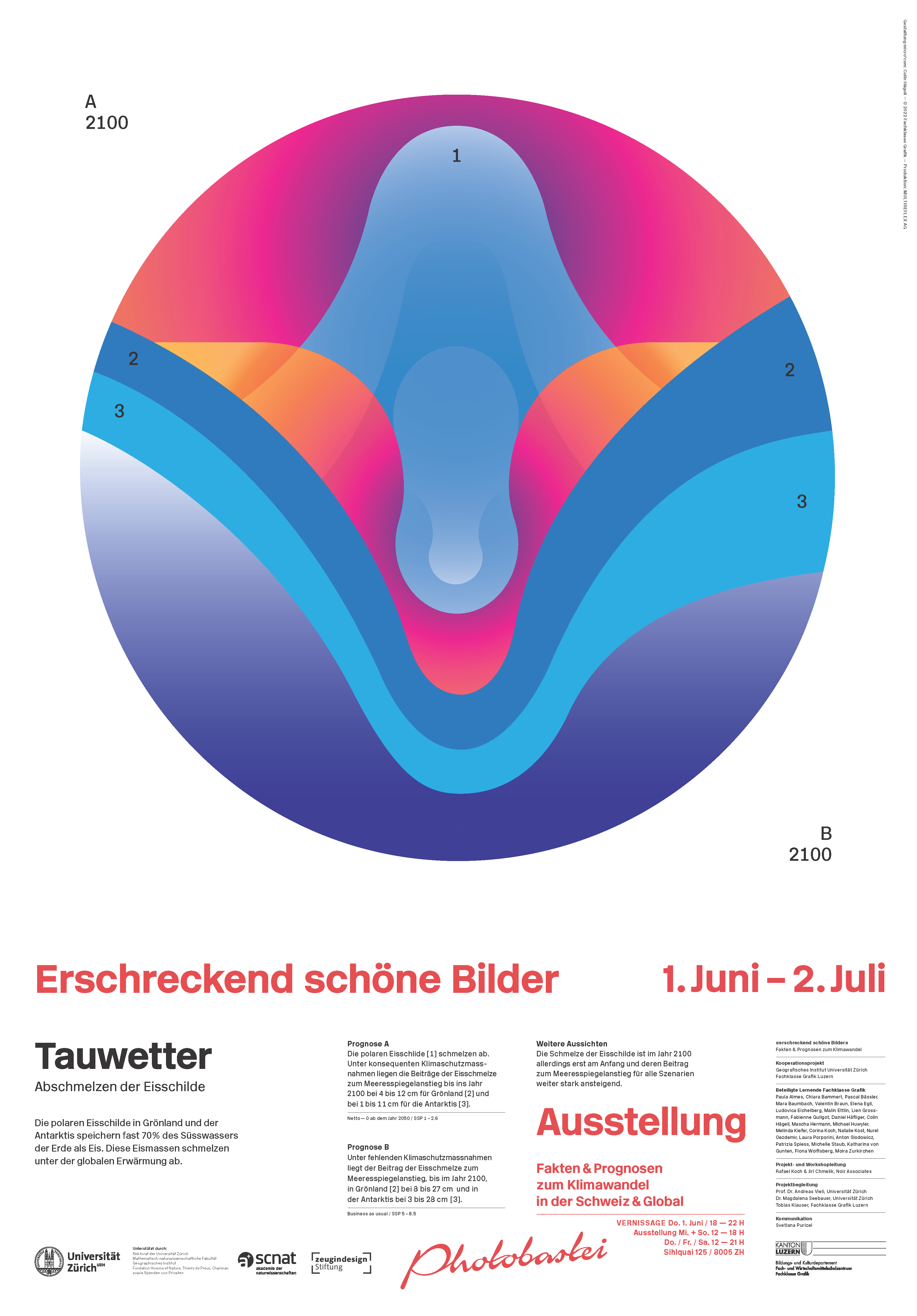 |
| For decades, scientists have been warning about the influence of humans on the Earth's climate system. But it takes a lot of persuasion to get an entire society to rethink and act. Which innovative forms of communication are suitable to make scientific facts vivid and to reach and touch people outside the scientific community? In a cooperative project with the Department of Geography at the University of Zurich, students from the Lucerne Graphic Design class presented facts and forecasts about climate change in a striking way. The aim was to provide food for thought in the current debate by illustrating the dramatic dimensions of climate change in a surprising way. Within this framework, 36 "frighteningly beautiful pictures" were created - between 2019 and 2022, in two workshops, with 25 students. The images are based on reports by the Federal Office of Meteorology and Climatology MeteoSwiss, the Federal Office for the Environment FOEN, the National Centre for Climate Services NCCS, as well as reports by the Intergovernmental Panel on Climate Change (IPCC, "Intergovernmental Panel on Climate Change"), to which researchers from the University of Zurich have contributed significantly. |
| Magdalena Seebauer |
| Email Author |
| https://www.photobastei.ch/exhibition/exhibition-details?id=109 |
| https://www.geo.uzh.ch/de/events/erschreckend-schoene-bilder.html |
| 2023-06-01, Event |
Honorary doctorate for Maude Barlow |
| On the occasion of UZH's Dies Academicus on 29 April 2023, Maude Barlow was awarded an honorary doctorate by the Faculty of Mathematics and Natural Sciences. The faculty thereby honors Maude Barlow's commitment to the recognition of the fundamental human right to water. She is also a founding member of the Blue Community, which UZH joined in May 2022. |
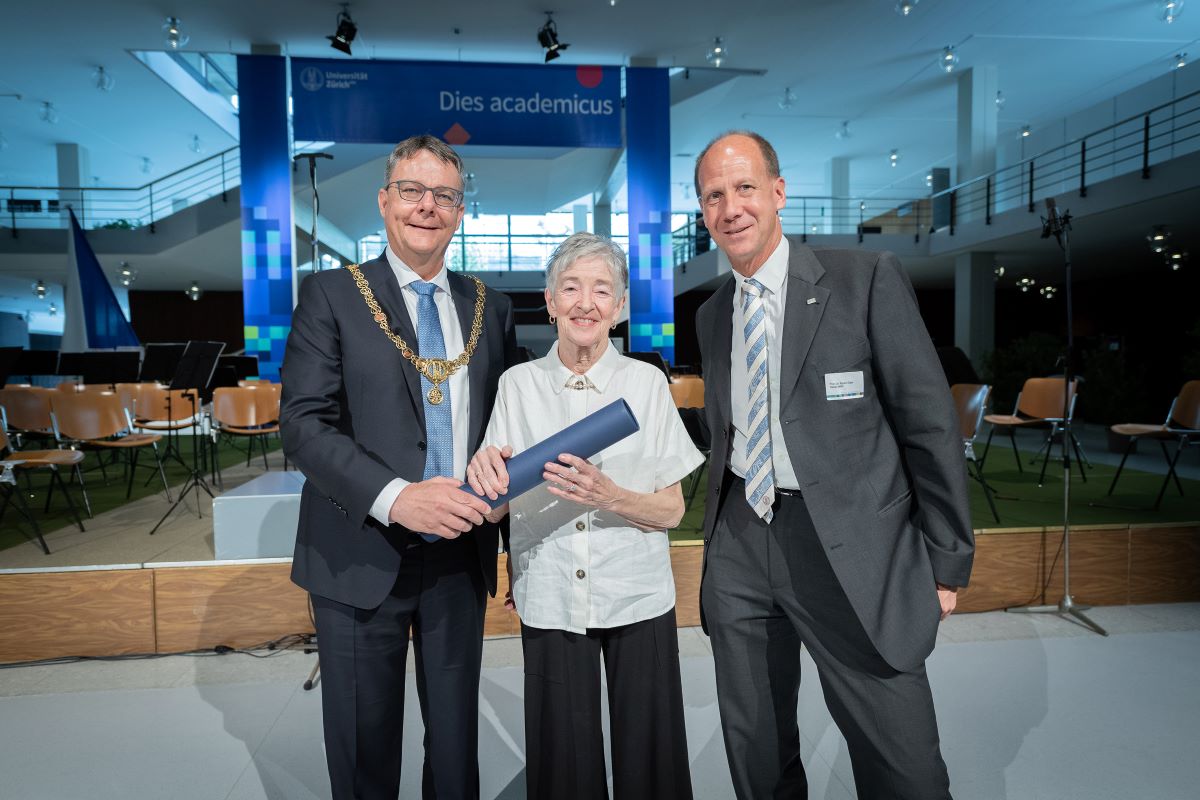 |
| On the occasion of UZH's Dies Academicus on 29 April 2023, Maude Barlow was awarded an honorary doctorate by the Faculty of Mathematics and Natural Sciences. The faculty thereby honors Maude Barlow's commitment to the recognition of the fundamental human right to water. She is also a founding member of the Blue Community, which UZH joined in May 2022. |
| KE |
| Email Author |
| https://www.uzh.ch/cmsssl/de/explore/portrait/awards/hc/2023/mnf.html |
| Dekanat |
| 2023-05-05, Event |
Integrating Diverse Forms of Knowledge in Health Care Research |
| Dr. Chloe Pasin, fellow at the Collegium Helveticum, is organising a workshop on Tuesday June 20: Integrating Diverse Forms of Knowledge in Health Care Research. How can interdisciplinary studies in health help bridge between the biomedical field and other academic fields as well as non-academic settings to expand our global understanding of health and address health inequalities? |
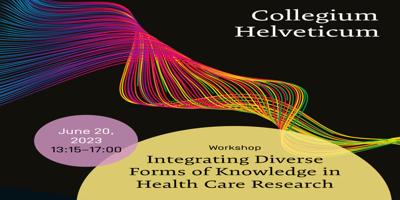 |
| Dr. Chloe Pasin, fellow at the Collegium Helveticum, is organising a workshop on Tuesday June 20: Integrating Diverse Forms of Knowledge in Health Care Research. How can interdisciplinary studies in health help bridge between the biomedical field and other academic fields as well as non-academic settings to expand our global understanding of health and address health inequalities? This is the main question, which this workshop wants to discuss. Structured around two panels, the workshop seeks to bring experts from various fields into dialog with each other. |
| Chloé Pasin |
| Email Author |
| https://collegium.ethz.ch/veranstaltungen/?event=13031&cat=upcoming |
| Collegium Helveticum |
| 2023-06-02, Event |
3-2-1 Go Euclid! |
| What is dark matter? What drives the accelerating expansion of our Universe? These and more questions could be answered by Euclid, the European Space Agency (ESA) space mission which is set to launch in July 2023. Several UZH researchers are actively involved in the project and will tell us more in the Space Café. Join us on June 16, 2023, at Irchel Campus (room Y16-G-15). |
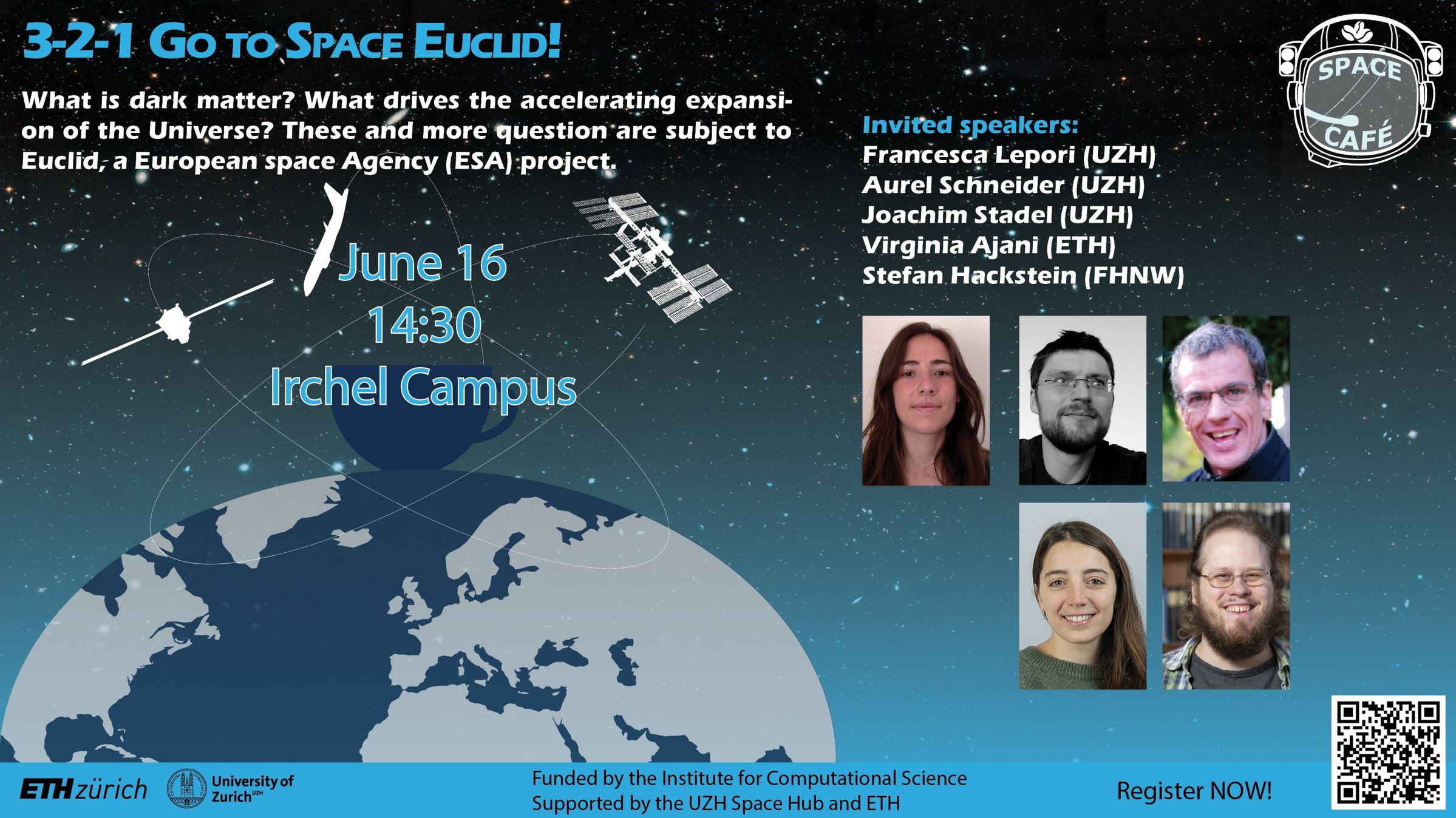 |
| The UZH Space Hub, in collaboration with the Euclid members at Institute for Computational Science , will be organizing a special Space Cafe event dedicated to Euclid next month. Euclid is an ESA mission designed to map the large-scale structure of the Universe with unprecedented accuracy. It aims to tackle the most pressing open questions in Cosmology, including the nature of dark matter and dark energy. As the launch of Euclid is scheduled for the first half of July, we would like to take this opportunity to share with you the objectives of the Euclid mission and what we expect to discover over the next decade. Moreover, this event will serve as a celebration of the imminent launch, and we would be delighted to have you join us. The event will take place on June 16th at the Irchel Campus, starting at 2:30 pm. It will feature short presentations from the Euclid members, followed by an Apero commencing at approximately 4:30 pm. To view the full program, please visit the following link: https://www.spacehub.uzh.ch/en/events/SpaceCafe/Euclid.html. We kindly request that you register via the webpage, as it will assist us in planning the catering. However, spontaneous participation is also welcomed. We hope to see many of you there, as your presence will make the event even more enjoyable. |
| Francesca Lepori |
| Email Author |
| 2023-06-07, Event |
Why become an astrophysicist? |
| In a talk followed by an Apéro, Prof. Ravit Helled will talk about her career in science, the fascination of astrophysics, the importance of participating in space missions, and the qualities required to become an astrophysicist. |
 |
| |
| KE |
| Email Author |
| https://www.ema.uzh.ch/de/register/why-become-an-astrophysicist.html |
| 2023-06-08, Event |
Life Science Core Facility Day |
| The UZH technology platforms support research with a wide range of services and promote know-how transfer and interdisciplinary cooperation. |
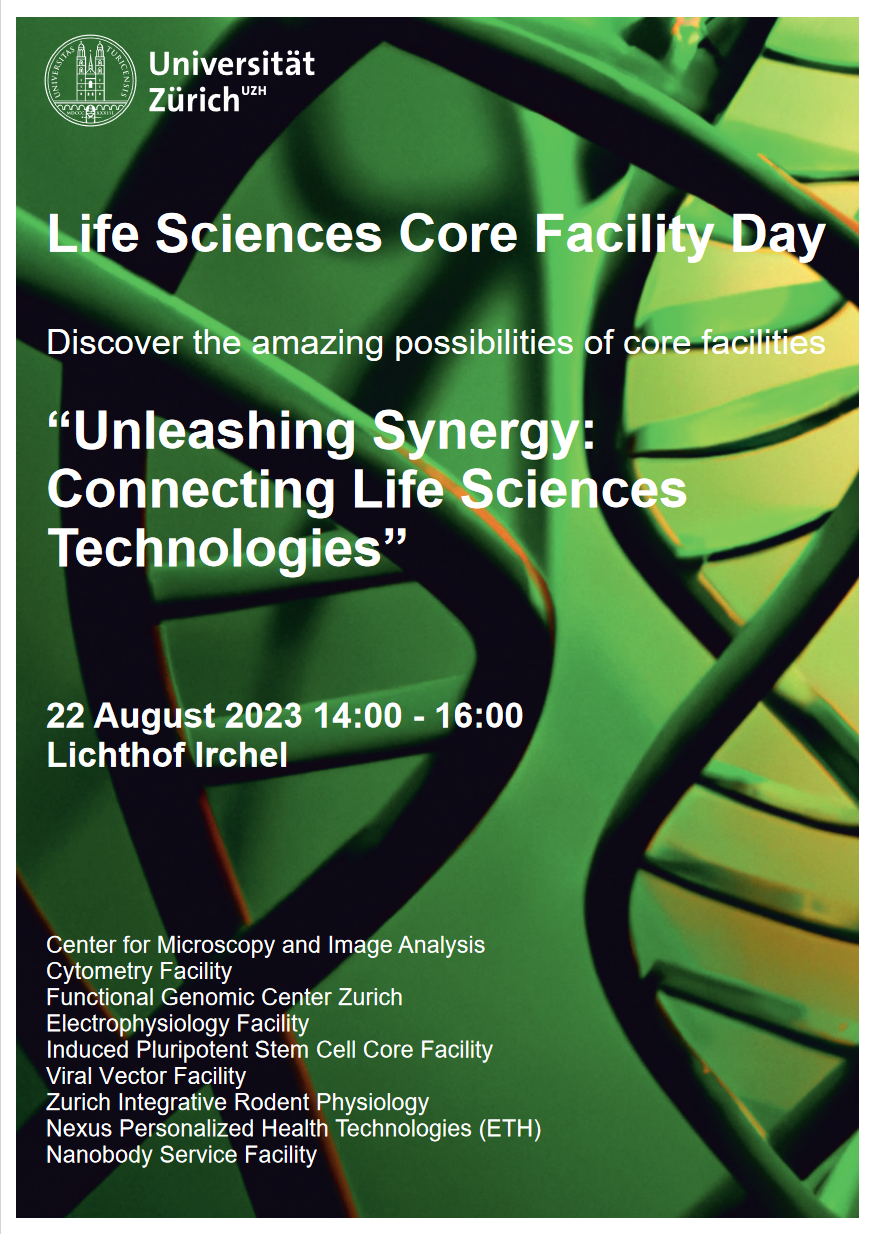 |
| The UZH technology platforms support research with a wide range of services and promote know-how transfer and interdisciplinary cooperation. They will present at the Life Science Core Facility Day at Irchel on 22nd August 2023 starting 2PM. Some examples will be presented of what they offer and how they can support you to get best results out of your research. No registration, no fees. |
| - |
| Email Author |
| https://www.research.uzh.ch/en/infrastructure/platforms.html |
| https://www.research.uzh.ch/en/infrastructure/platforms.html |
| 2023-07-26, Event |
Swiss 3Rs Day |
| The Swiss 3Rs Day is a full-day event featuring 13 speakers from industry, academia and animal welfare organisations. This year the keynote speech will be held by Hannah Harrison on In vitro modelling of breast cancer metastasis and niche priming (Manchester University). Topics covered will range from culture of care to digitalization of in vivo studies, |
 |
| The 2023 Swiss 3Rs Day will be taking place at USI, Lugano on September 19th. Registration is now open: https://www.eventbrite.ch/e/615686724567 The Swiss 3Rs Day is a full-day event featuring 13 speakers from industry, academia and animal welfare organisations. This year the keynote speech will be held by Hannah Harrison on In vitro modelling of breast cancer metastasis and niche priming (Manchester University). Topics covered will range from culture of care (Thomas Bertelsen, Novo Nordisk) to digitalization of in vivo studies (Eoin O' Connor, Roche), zebrafish welfare (Chloe Stevens, RSPCA) and many more exciting 3Rs-related topics. Stay tuned for the full speaker schedule and vendors. (1-day continuing education accreditation will be given for attendance).
Abstracts for Poster Submissions can be sent to info@swiss3rcc.org Regular abstracts should have max 250 words and preferred graphical abstracts a min 300 dpi. The deadline for abstract submissions for posters is August 19th.
|
| Paulin Jirkof |
| Email Author |
| 2023-07-26, Event |
feminno – female innovation and career development in Sciences |
| Are you a female scientist or alumna and interested in entrepreneurship training? Then apply for the feminno entrepreneurship program. |
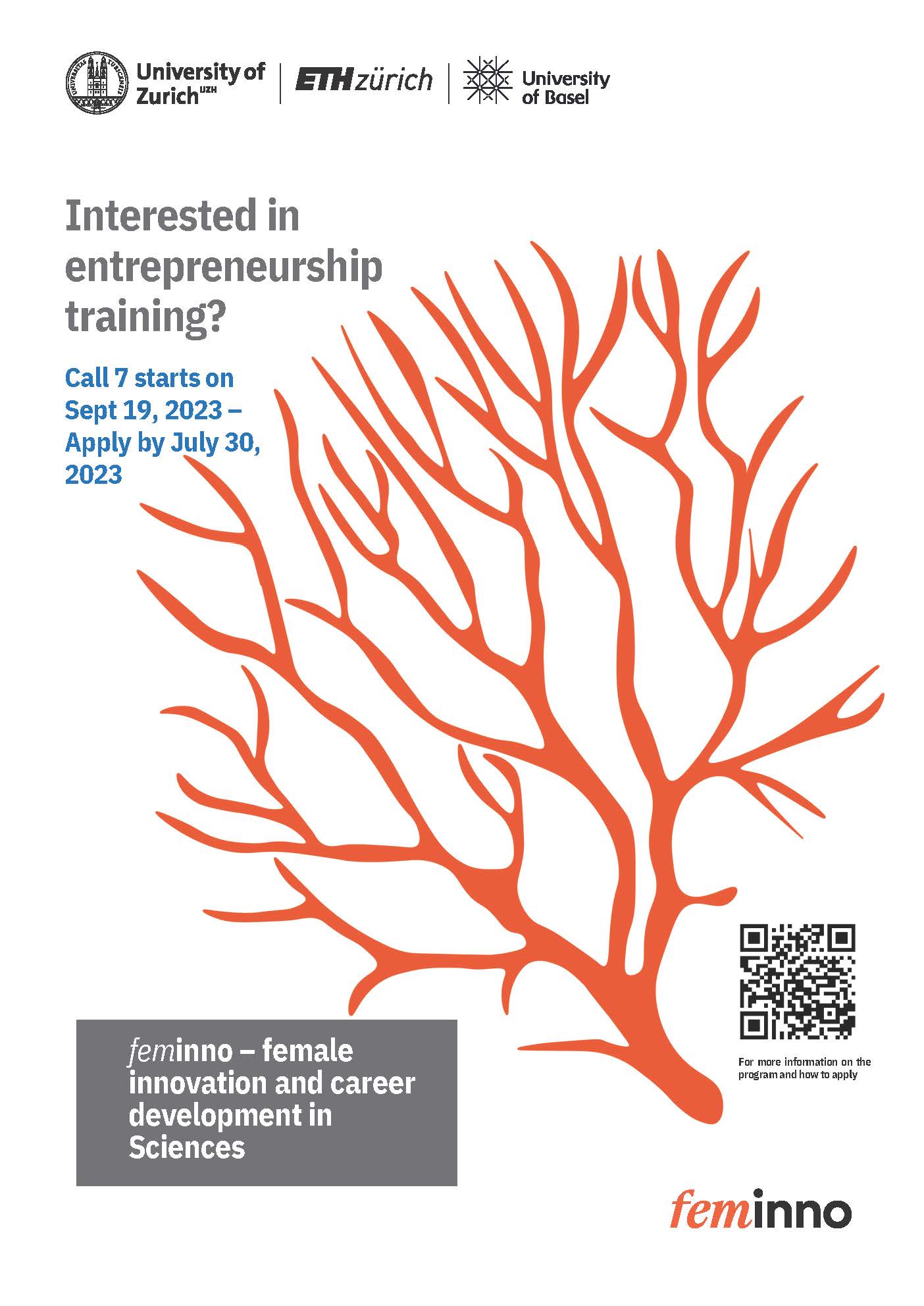 |
| Are you a female scientist or alumna and interested in entrepreneurship training? Then apply for the feminno entrepreneurship program. feminno offers mentoring and career development for female scientists interested in innovation and addresses female researchers from Life Sciences, Natural Sciences, Tech and Humanities. It is a program for aspiring female founders with lots of female coaches, mentors and role models from the industry and the start-up world. The program starts in September 2023 comprising a Career retreat, Innovation seminars, Trainings (Innovation Workshop, Negotiation skills for conflict situations, business deals), Company visits and exploratory workshops and the Closing event with the feminno community. More info on the program is found here: www.feminno.ch To apply use thus link: https://lnkd.in/eJvq4qGH (Deadline is July 30, 2023) |
| - |
| Email Author |
| - |
| 2023-07-26, Event |
Women in Herpetology |
| Gözde Cilingir, PostDoc in the Department of Evolutionary Biology and Environmental Studies, contributed to the book "Women in Herpetology: 50 Stories from Around the World". |
| |
| Gözde Cilingir, PostDoc in the Department of Evolutionary Biology and Environmental Studies, contributed to the book "Women in Herpetology: 50 Stories from Around the World". The project and book gathered 50 women from different cultures and backgrounds who shared their life, career and passion for amphibians and reptiles. In this way, they collectively put a spotlight on the diversity of women in the field of Herpetology. |
| Gözde Cilingir |
| Email Author |
| 2023-08-30, News |
Scientifica 2023 |
| The Scientifica is the science festival of the UZH and ETHZ. This year, researchers will again inspire young and old! This year's theme? "What holds the world together." |
 |
| Scientifica is the science festival of the UZH and ETHZ. This year, researchers will again inspire young and old! This year's theme? "What holds the world together." All information on the website: https://scientifica.ch/en/ |
| - |
| Email Author |
| - |
| 2023-08-27, Event |
FameLab Switzerland Final 2023 |
| Join us for an evening of captivating scientific presentations by young researchers from EPFL, ETHZ, University of Basel and University of Zurich. |
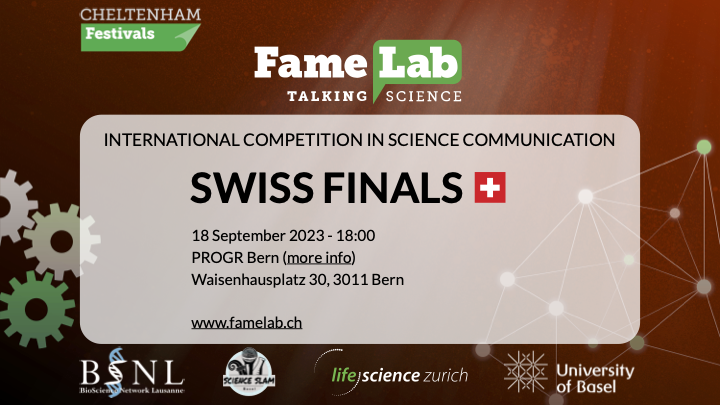 |
| Experience an evening of captivating scientific talks by young researchers from EPFL, ETHZ, University of Basel and University of Zurich. Ruchi Manglunia, Institute of Quantitative Biomedicine UZH, Michael Herzog, Institute of Microbiology ETH and Anish Kirtane, Institute of Biogeochemistry and Environmental Dynamics ETH from Zurich will participate in the national final. At FameLab young scientists have 3 minutes to inspire the audience with a scientific presentation. Free admission. No registration needed. More about FameLab her: www.famelab.ch
|
| Silvie Cuperus |
| Email Author |
| 2023-08-21, Event |
Future Plan(t)s - Art meets Science - 25 August to 10 September 2023 |
| An exhibition of 18 artists at the SAE Greenouse Art-Lab |
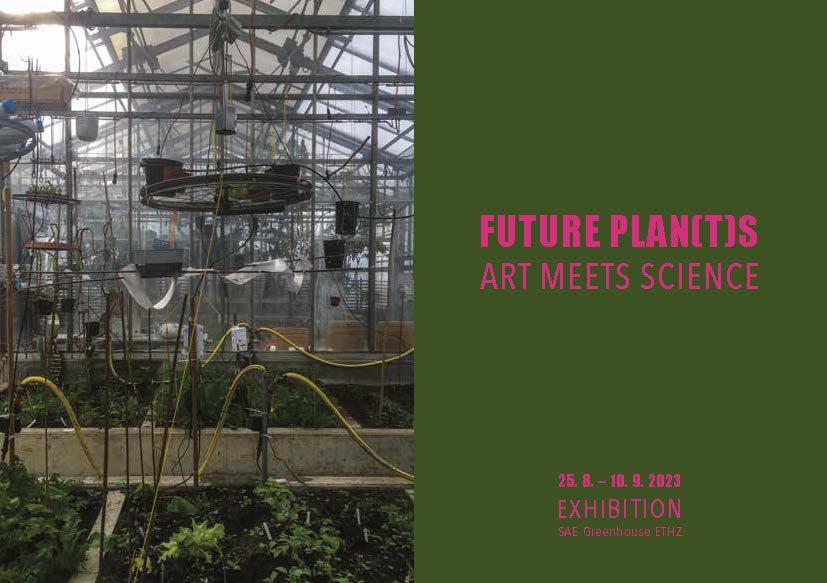 |
| The future of our plants is one of the greatest challenges that humanity is facing. How do 17 renowned artists respond to this current discourse and the future of plants? What is the future of plants and their interaction under the drought conditions of climate change? Should plants adapt or diversify to climate change? Will they lose their food base? Can our soil, seeds and water be conserved? In this exhibition the artists reflect on these questions in the Greenhouse Art-Lab of the SAE Sustainable Agroecosystem Group at ETH Zurich. The artworks, installations and performances will try to raise awareness about the future of plants, soil, food, food and water. These artistic contributions will be encouraged through a process of connecting with the research group to learn more about sustainable agroecosystems research. Location: SAE Greenouse Art-Lab, Häldeliweg 19, 8044 Zürich. Opening hours: Friday, 17:00 to 22:00, Saturday and Sundays, 10:00 to 18:00 |
| Silvie Cuperus |
| Email Author |
| 2023-08-27, Event |
Future Plan(t)s - exhibition side events: LASER TALK I |
| Future of Soil – Plant interactions: Tuesday, 29 August 2023, 18:30 to 22:00 Location: SAE Greenhouse Art Lab, Häldeliweg 19, 8044 Zürich |
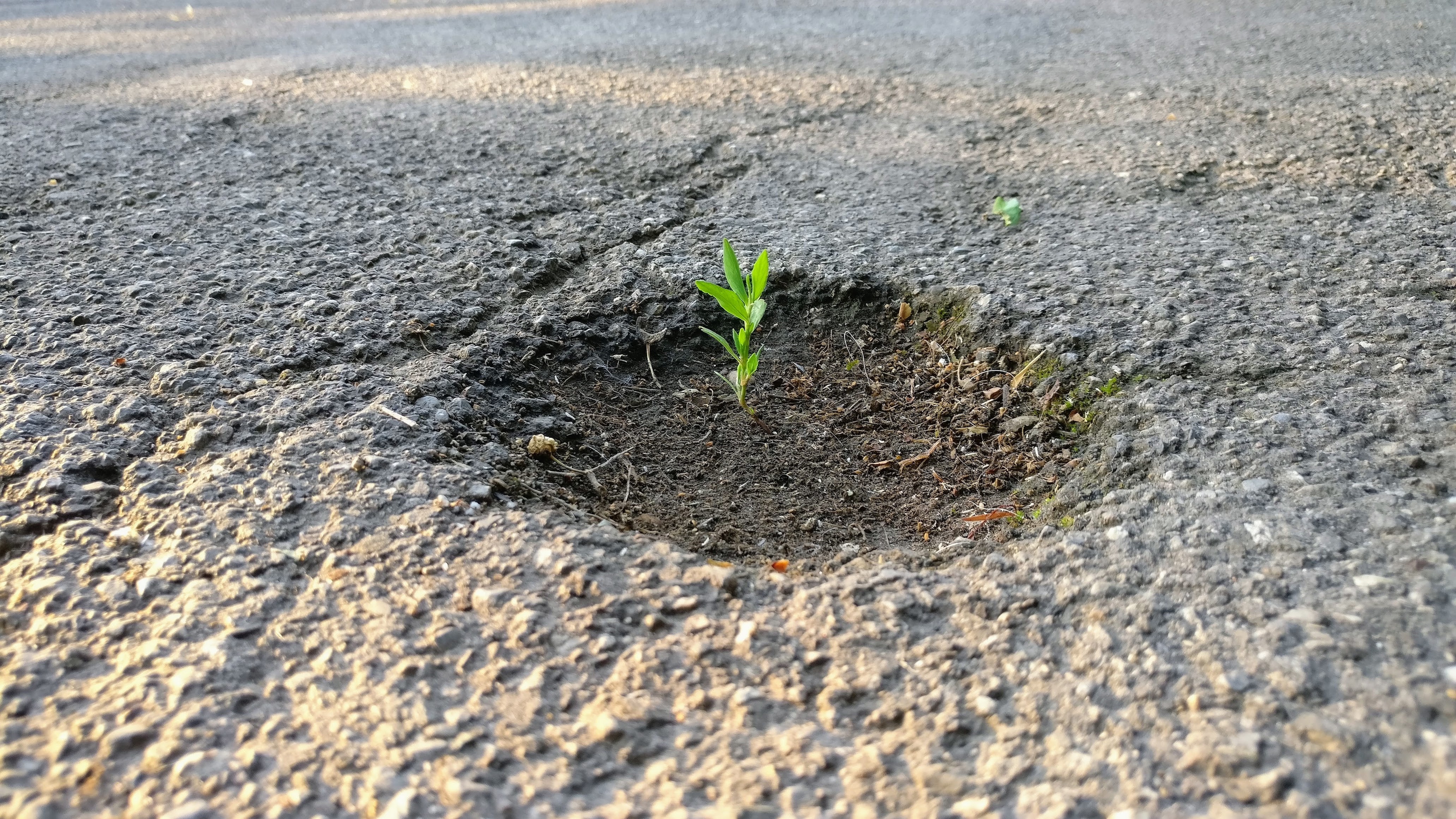 |
| In connection with the exhibition Future Plant(s) Life Science Zurich is hosting together with the SAE Sustainable Agroecosystems Group ETH two Laser Talks. Join us for these interesting talks in English with artists and scientists about "The Future of Soil - Plant Interactions" and "Resilience, Nutrition, Food Systems". For more information, please see our website. Register for the talk on 29 August here The talks will be in English. |
| Dr. Silvie Cuperus |
| Email Author |
| 2023-08-28, Event |
Future Plan(t)s - exhibition side events: LASER TALK II |
| Resilience, Nutrition, Food Systems, Tuesday, 5 September 2023, 18:30 to 22:00. Location: SAE Greenhouse Art Lab, Häldeliweg 19, 8044 Zürich |
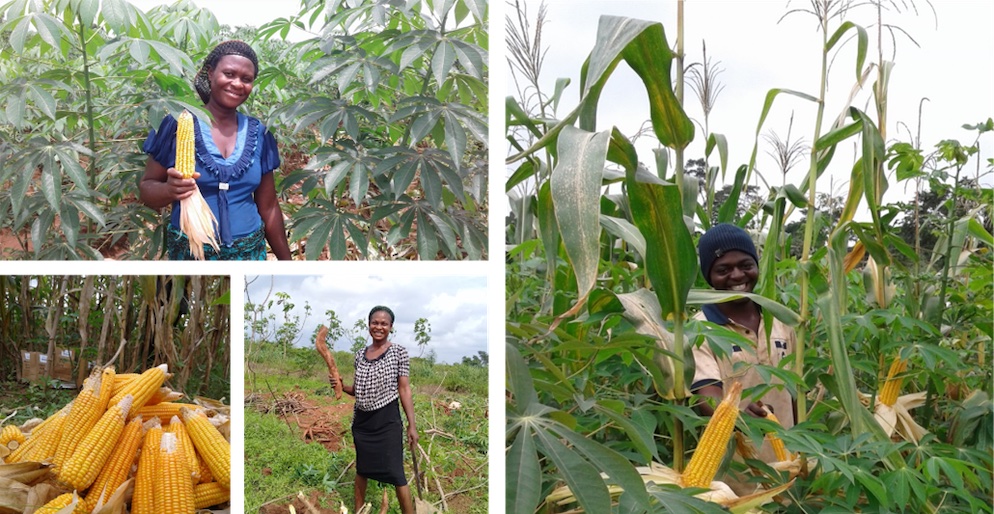 |
| In connection with the exhibition Future Plant(s) Life Science Zurich is hosting together with the SAE Sustainable Agroecosystems Group ETH two Laser Talks. Join us for these interesting talks in English with artists and scientists about "The Future of Soil - Plant Interactions" and "Resilience, Nutrition, Food Systems". The talk will be held in English. For more information, please see our website. Register for the talk here. |
| Dr. Silvie Cuperus |
| Email Author |
| 2023-08-28, Event |
ZEIT Podcast climate policy |
| In a podcast for the German ZEIT, Prof. Kai Niebert explains what works to stop the climate crisis, what role education (does not) have, why the actions of the "Last Generation" are a dead end and also what the Friday for Future achieved. |
 |
| In a podcast for the German ZEIT with political editor Petra Pinzler and science editor Stefan Schmitt, Prof. Kai Niebert discusses the research and the work of the research team. It's about what works to stop the climate crisis, what role education (doesn't) have, why the actions of the Last Generation are a dead end and also what the Fridays for Future have achieved. https://www.zeit.de/gesellschaft/2023-08/kai-niebert-klimapolitik-protest-krisenpodcast |
| Kai Niebert |
| Email Author |
| 2023-08-25, News |
Symposium to Commemorate Nobel Prize-Winning Physicist K. Alex Müller |
| On 21 September 2023, a symposium will be held in the UZH auditorium to commemorate Nobel Prize-Winning Physicist K. Alex Müller |
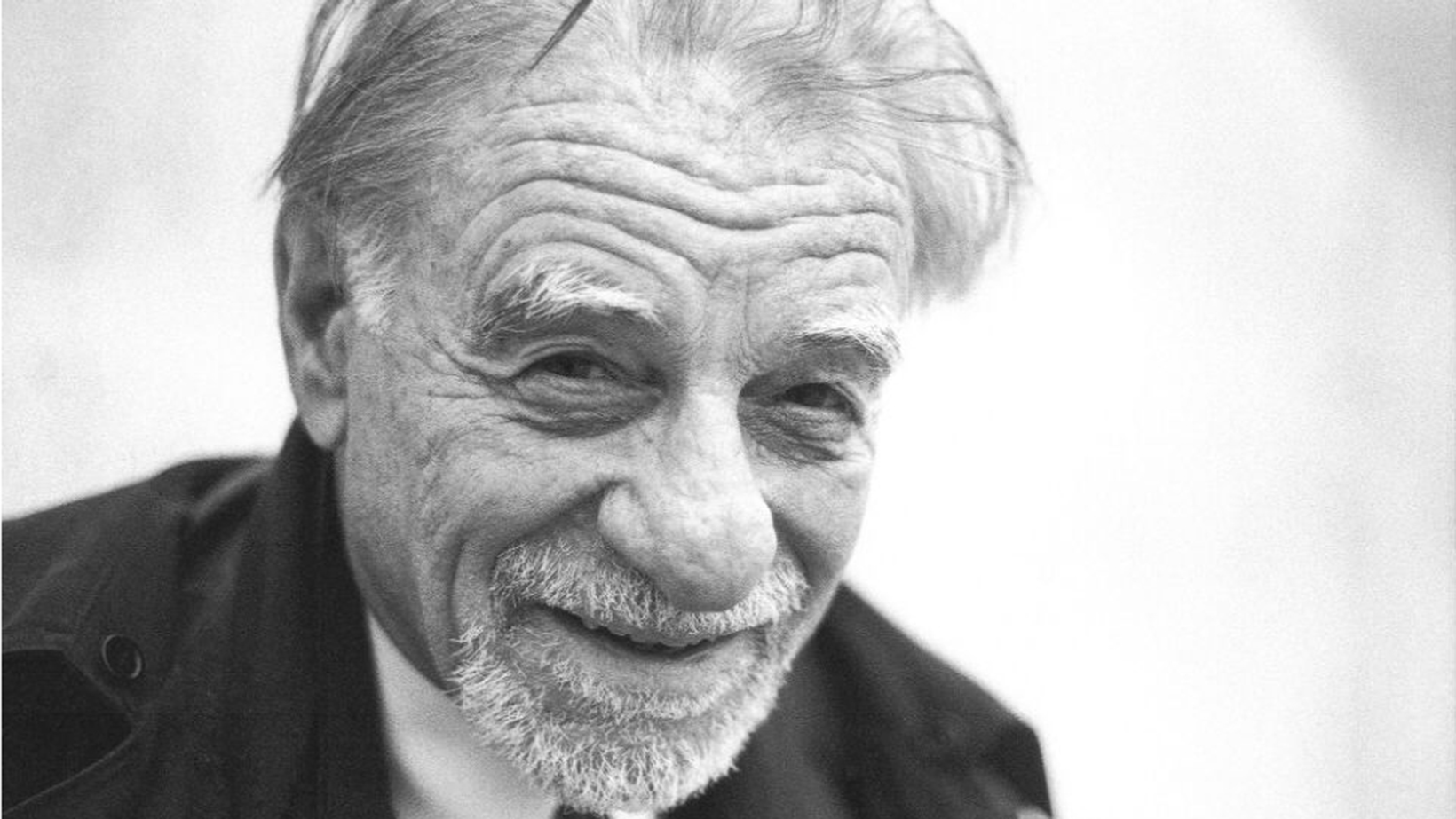 |
| High-temperature superconductivity is as fascinating as it is promising – for basic research and when it comes to developing novel technologies for use in power stations, medical technology, traffic engineering or computer technology. 21 September 2023, Aula (KOL-G-201), Rämistrasse 71, 8006 Zurich Registration required: UZH Event Portal
|
| UZH Kommunikation |
| Email Author |
| Dekanat |
| 2023-08-25, Event |
Lecture «What’s in a name? Bias in peer review» |
| On 25 September 2023 the Gender Equality and Diversity UZH organizes in collaboration with the URPP Equality of Opportunity the lecture «What’s in a name? Bias in peer review». |
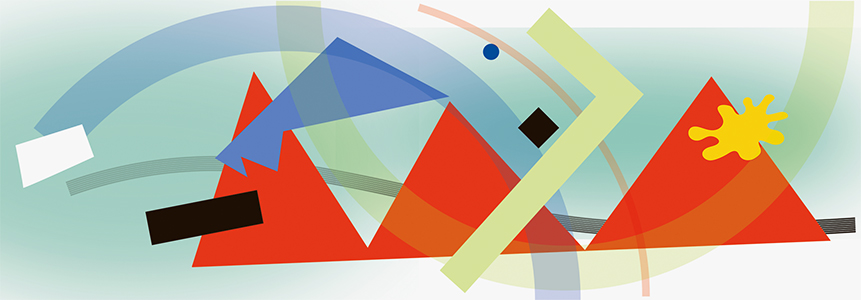 |
| On 25 September 2023 UZH Gender Equality and Diversity organizes in collaboration with the URPP Equality of Opportunity the lecture «What’s in a name? Bias in peer review». The lecture is given by Prof. Stefan Palan, University of Graz. His research focuses on human behavior in general and on human behavior in a financial context in particular. He has recently also focused more and more time on studying and speaking about the peer review and scientific publication process and how to make it more equitable and fair. |
| UZH Gleichstellung und Diversität |
| Email Author |
| 2023-08-25, Event |
Exhibition to Commemorate K. Alex Müller |
| An exhibition in the Lichthof Irchel will provide insights into the outstanding research and life of K. Alex Müller. |
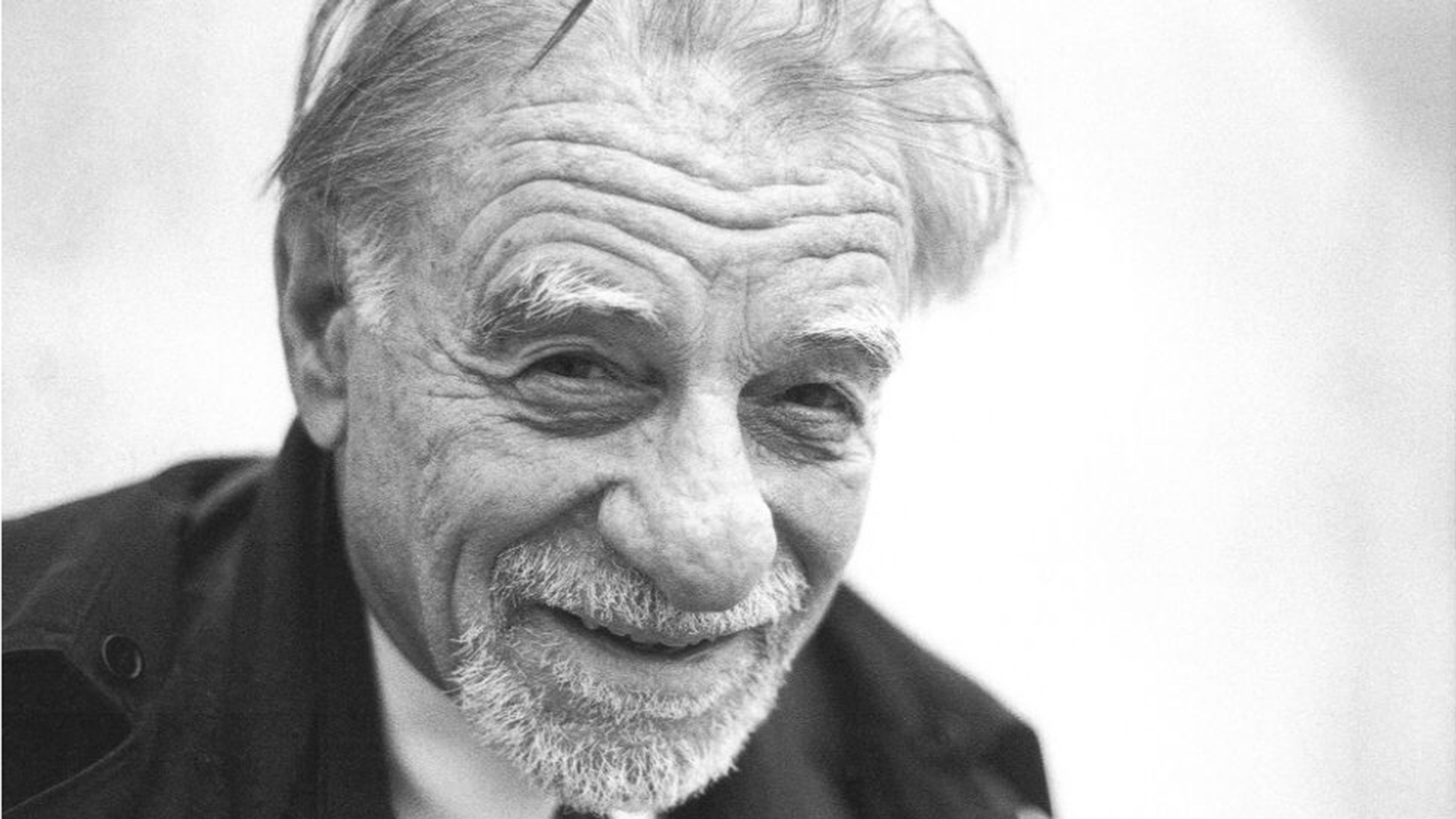 |
| From 19 September (opening event at 4:00pm) to 14 October, an exhibition in the Lichthof Irchel will provide insights into the outstanding research and life of K. Alex Müller. The exhibition describes the phenomenon of superconductivity, in particular high-temperature superconductivity, and shows where superconductivity is used in technical applications in everyday life. |
| Katharina Müller |
| Email Author |
| 2023-08-30, Event |
Appointment symposium OHI |
| The APTT Appointment symposium for the newly founded One Health Institute of the UZH on September 21st with presentations by the candidates. |
 |
| You are cordially invited to the appointment symposium related to the APTTs “One Health with focus Epidemiology” and “One Health with focus Evolution” of the One Health Institute.
08:30 am – 05:00 pm University of Zurich, Campus Irchel Nord (Tierspital) TFA 00.44 |
| OHI |
| Email Author |
| 2023-09-07, Event |
Wissen to go – abends im Zoologischen Museum UZH |
| Ab September 2023 ist das Zoologische Museum am Donnerstagabend von 17:30 bis 20:00 Uhr geöffnet. |
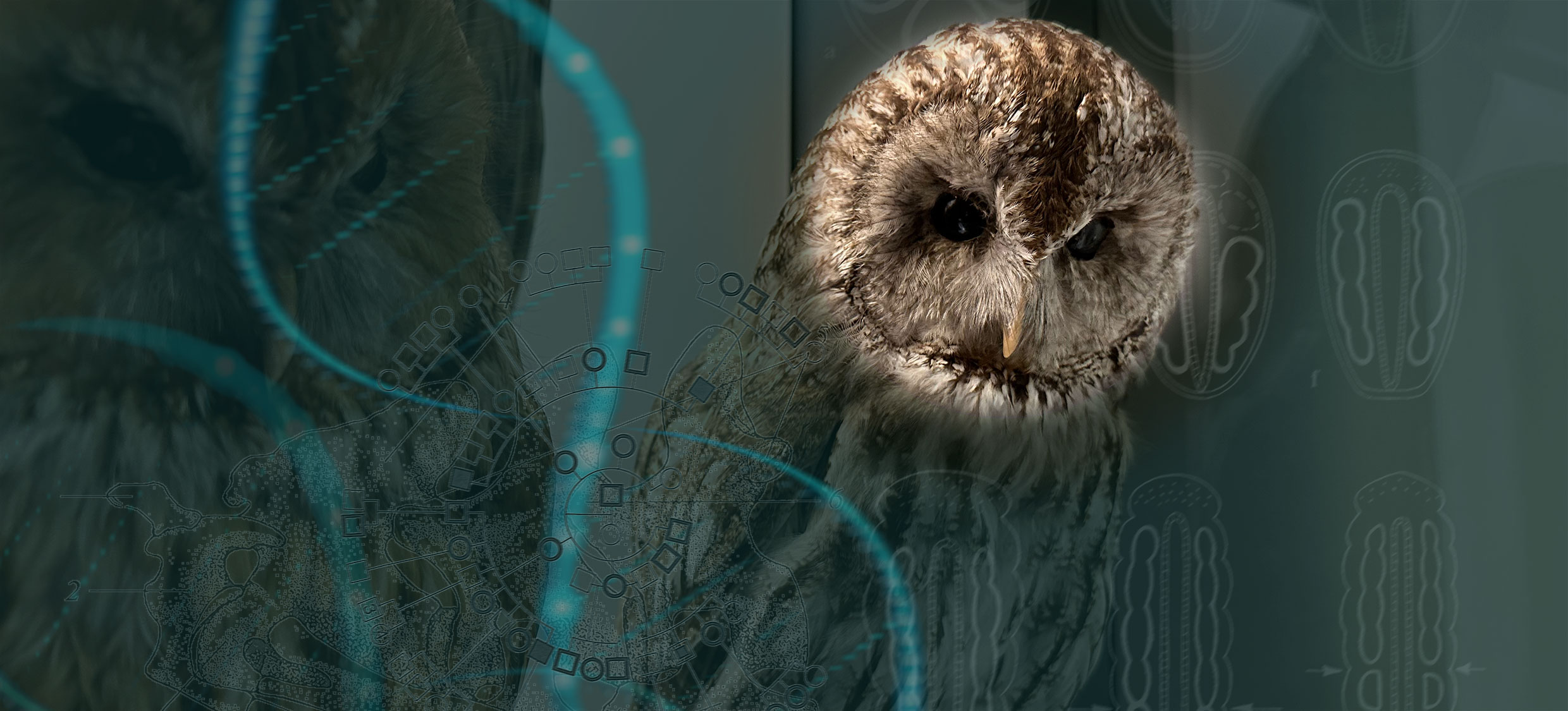 |
| Ab September 2023 ist das Zoologische Museum am Donnerstagabend von 17:30 bis 20:00 Uhr geöffnet. Nehmen Sie um 18 Uhr an einer halbstündigen Führung teil, diskutieren Sie mit Naturfilmern oder eignen Sie sich an einem Kurzvortrag neues Wissen an! Das Angebot richtet sich an Erwachsene, ist kostenlos und kann ohne Anmeldung genutzt werden.
Oktober 2023 November 2023 Dezember 2023 *eine Zusammenarbeit mit der Zoologischen Gesellschaft Zürich |
| Zoologisches Museum der Universität Zürich |
| Email Author |
| 2023-09-07, Event |
Annual Open Innovation in Life Sciences 2023 Conference |
| Registrations Open for the Annual Open Innovation in Life Sciences 2023 Conference (Hybrid edition: virtual conference + in-person networking apéro) | 26th - 27th Oct |
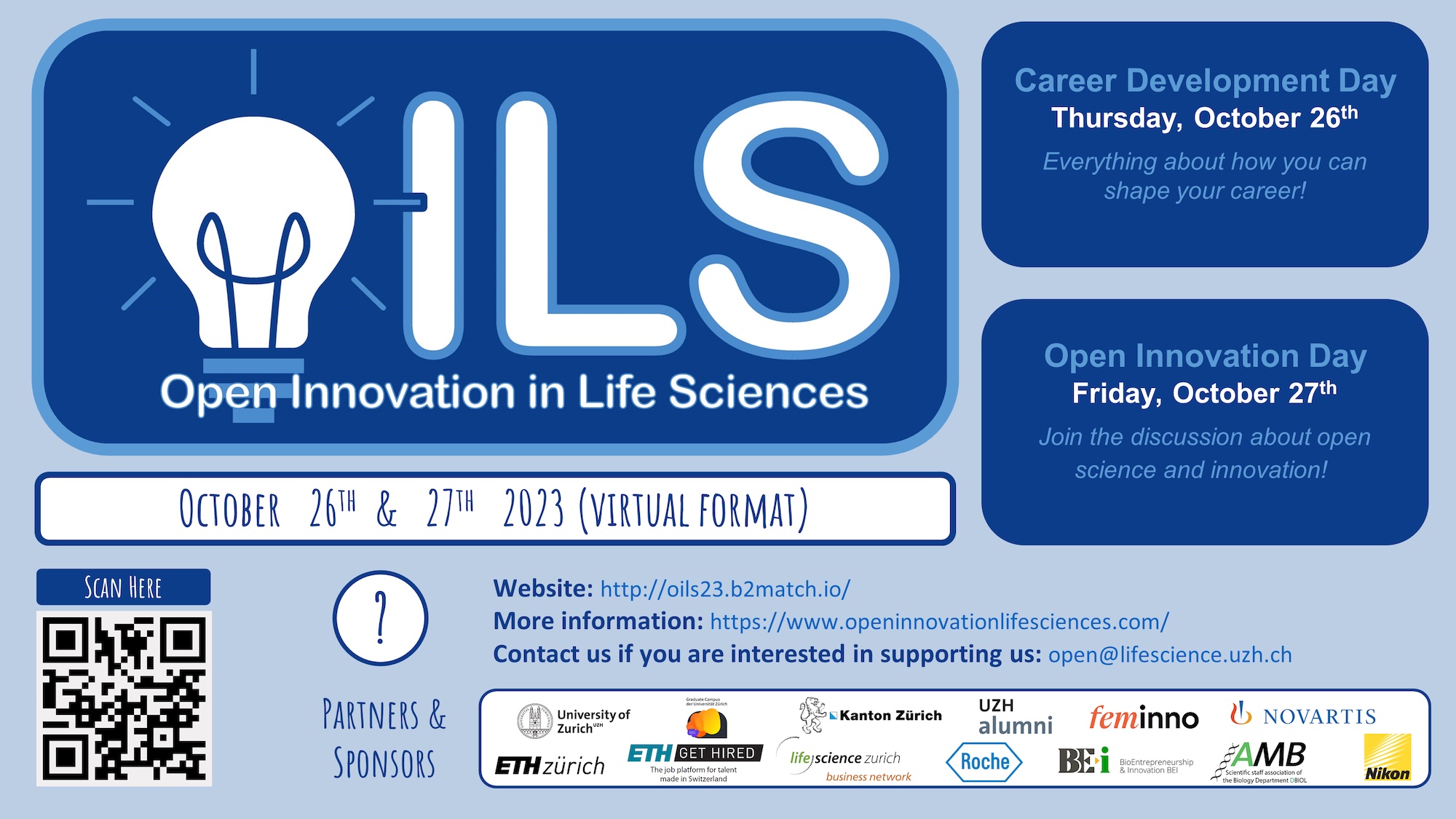 |
| Registrations are now open for the 6th Annual Open Innovation in Life Sciences conference (#OILS23), taking place this year on 26th - 27th October 2023. Register now to delve into the world of open science and its challenges and success stories on the Innovation Day, plus a program tailored to enhance your professional journey on Career Day. The virtual event spans across two thrilling days, packed with: Riveting Panel Discussions on topics, such as patient-oriented research and Science communication in the age of social media While the content is virtual, the #OILS23 conference will host a Networking Evening Apéro at Lichthof UZH Irchel (26th Oct) to connect with other scientists and science enthusiasts. Master students can attend the virtual conference entirely for free! Just provide the student details during the registration and join the discussion on open science and innovation. Check out the #OILS23 conference website for the complete agenda! |
| helen.stauffer@lifescience.uzh.ch |
| Email Author |
| 2023-09-13, Event |
Mastering iPSC: Insights from iPSZürich & STEMCELL Technologies |
| SAVE THE DATE! On November 7th the iPSZürich committee in collaboration with STEMCELL Technologies will present a special day, fully dedicated to iPSC research. Whether you are an expert, a beginner or even just considering working with iPSC, this day will have something to offer! |
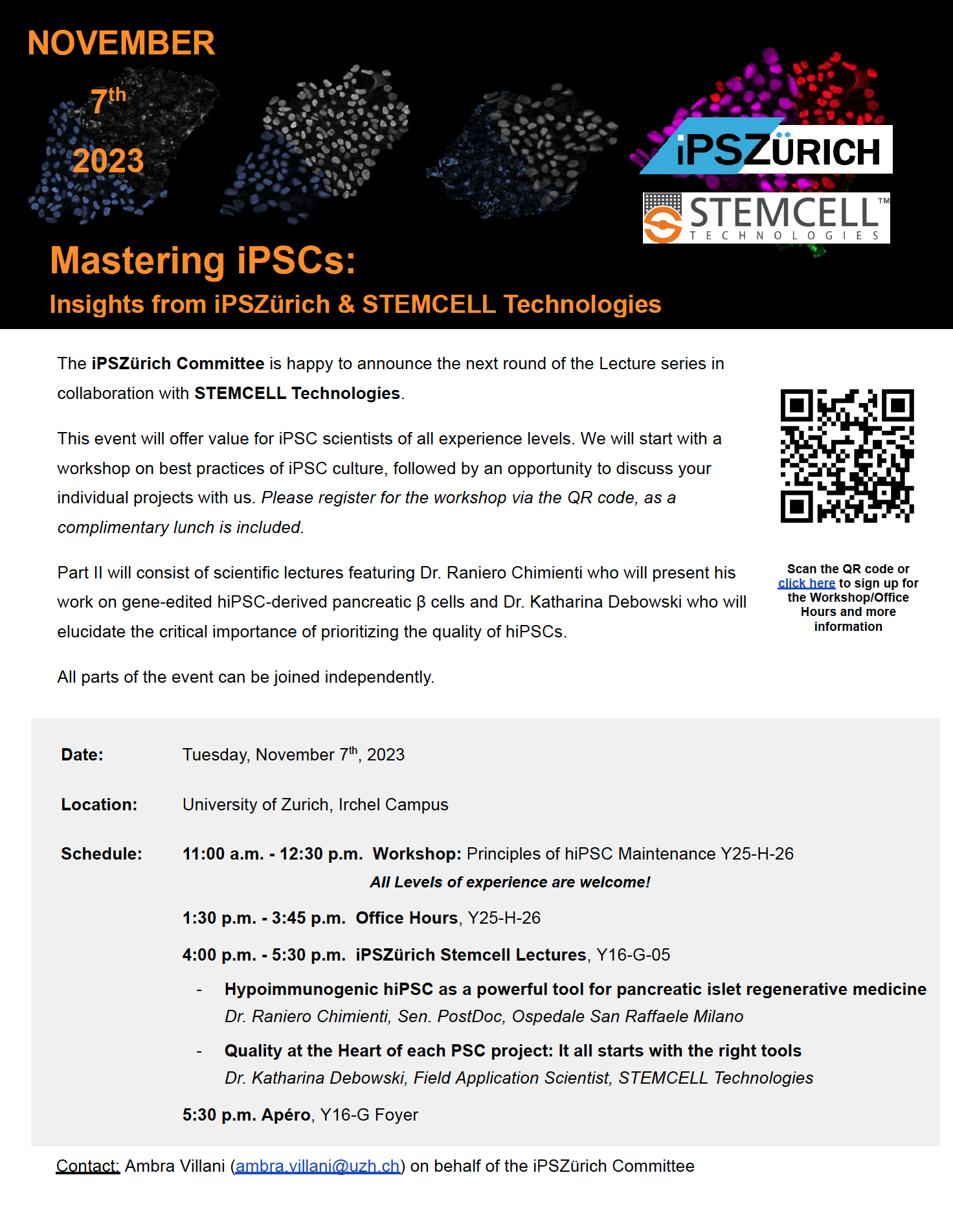 |
|
|
| Ambra Villani |
| Email Author |
| 2023-10-14, Event |
BioVisionCenter Symposium, November 9th - 10th |
| This kick-off Symposium aims at celebrating the launch of the BioVisionCenter by highlighting current initiatives for bioimage analysis and identifying opportunities to connect across the bioimage analysis community. The Symposium will feature invited talks from local stakeholders as well as national and international leaders in the field, and will offer ample time for networking and discussions. |
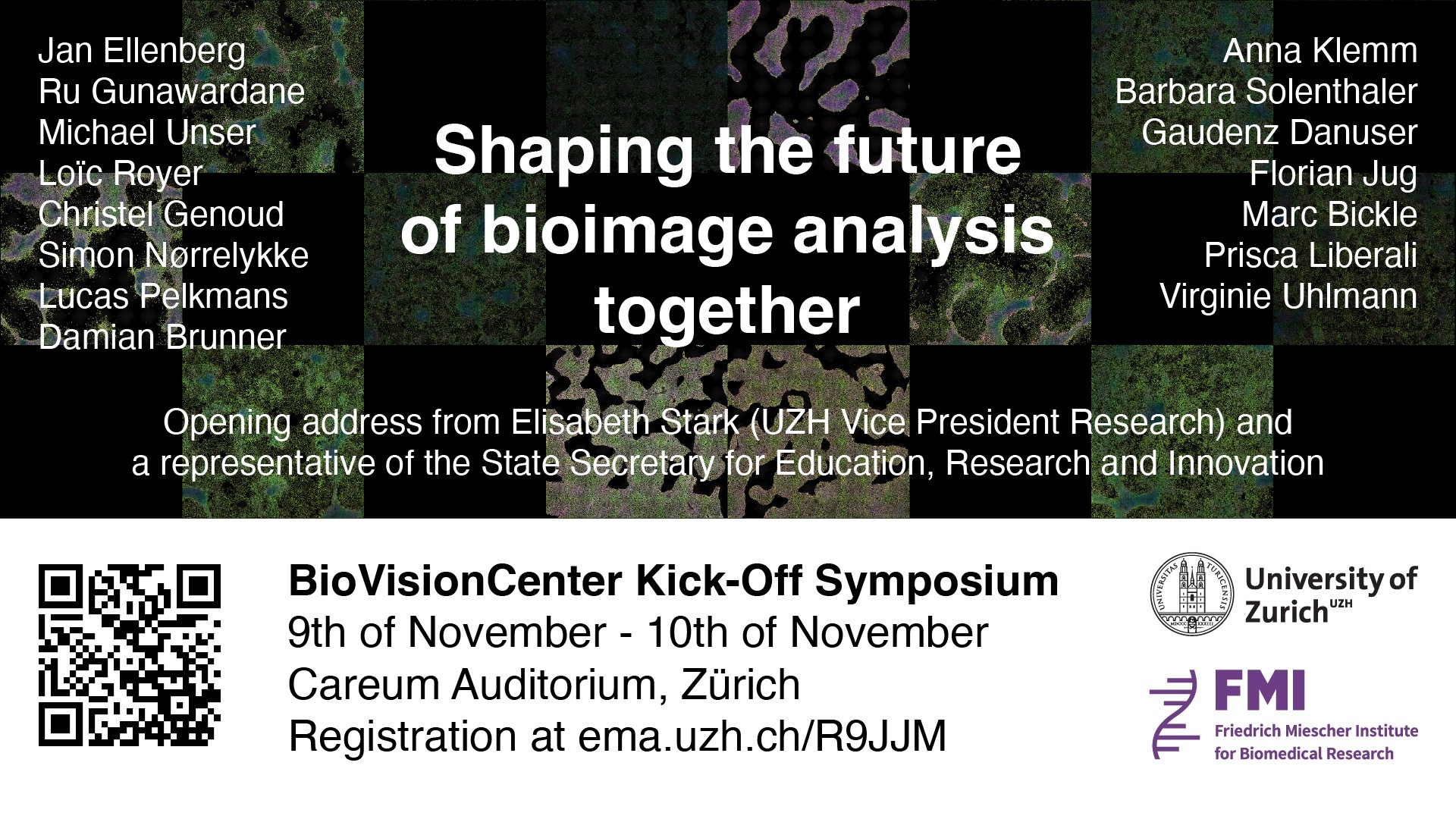 |
| Dear all, |
| valentina.marcelli@mls.uzh.ch |
| Email Author |
| https://www.biovisioncenter.uzh.ch/en.html |
| https://www.mls.uzh.ch/en.html |
| 2023-11-04, Event |
Winning Project for “PORTAL UZH” Selected |
| The planned new building called PORTAL UZH is a key part of the mid- to long-term development of Irchel Campus. The conclusion of the architectural competition marks the first step in making the plans a reality. |
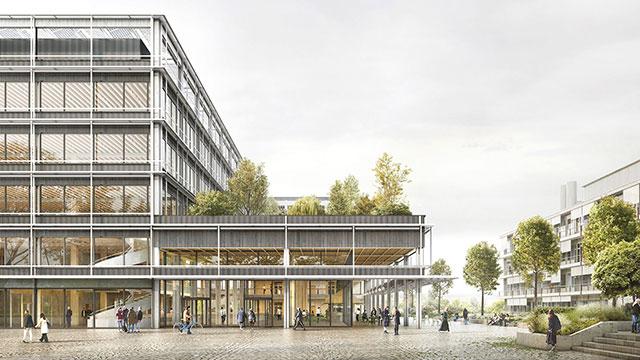 |
| Over the next quarter of a century, Irchel Campus will be fundamentally modernized and expanded, and its building density increased. The planned “PORTAL UZH” will be a linchpin in these developments. The new building will make it possible for the campus’ technical and logistical infrastructure to be modernized, as well as providing additional space needed for teaching and research. |
| Directorate for Real Estate and Facility Management |
| Email Author |
| https://www.news.uzh.ch/en/articles/news/2023/portal-uzh.html |
| 2023-12-12, News |
Nature Communications by Melika Payvand (INI): Neuromorphic Mosaic |
| Despite millions of years of evolution, the fundamental wiring principle of biological brains remains preserved... |
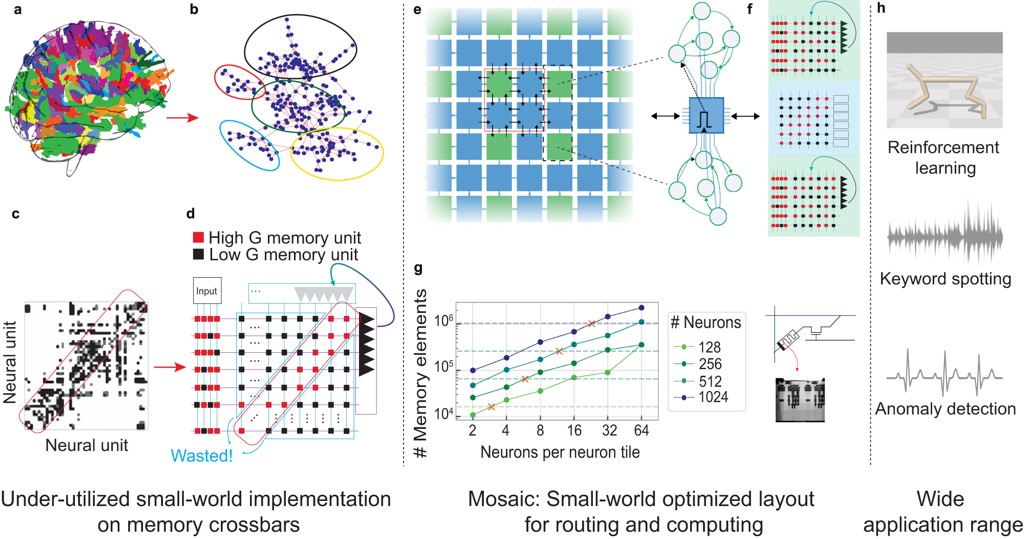 |
| Despite millions of years of evolution, the fundamental wiring principle of biological brains remains preserved: Dense local and sparse global connectivity, aka small-worldness, optimizing both computation and the utilization of the underlying biological substrate. Inspired by these principles, we introduce Mosaic: a 2D analog systolic array comprised of densely connected, small neuron tiles (RNNs), which communicate with proximity neighbour RNNs through tiny distributed routers. Mosaic uses both computing and routing locally on novel memory technologies to achieve orders of magnitude reduction in routing energy compared to current accelerators. https://www.nature.com/articles/s41467-023-44365-x
|
| Melika Payvand |
| Email Author |
| 2024-01-10, Sci. Publication |
MNF Shark Bay Dolphin Research in SRF Einstein |
| The SRF television program Einstein shows the dolphin research of the Evolutionary Genetics Group. |
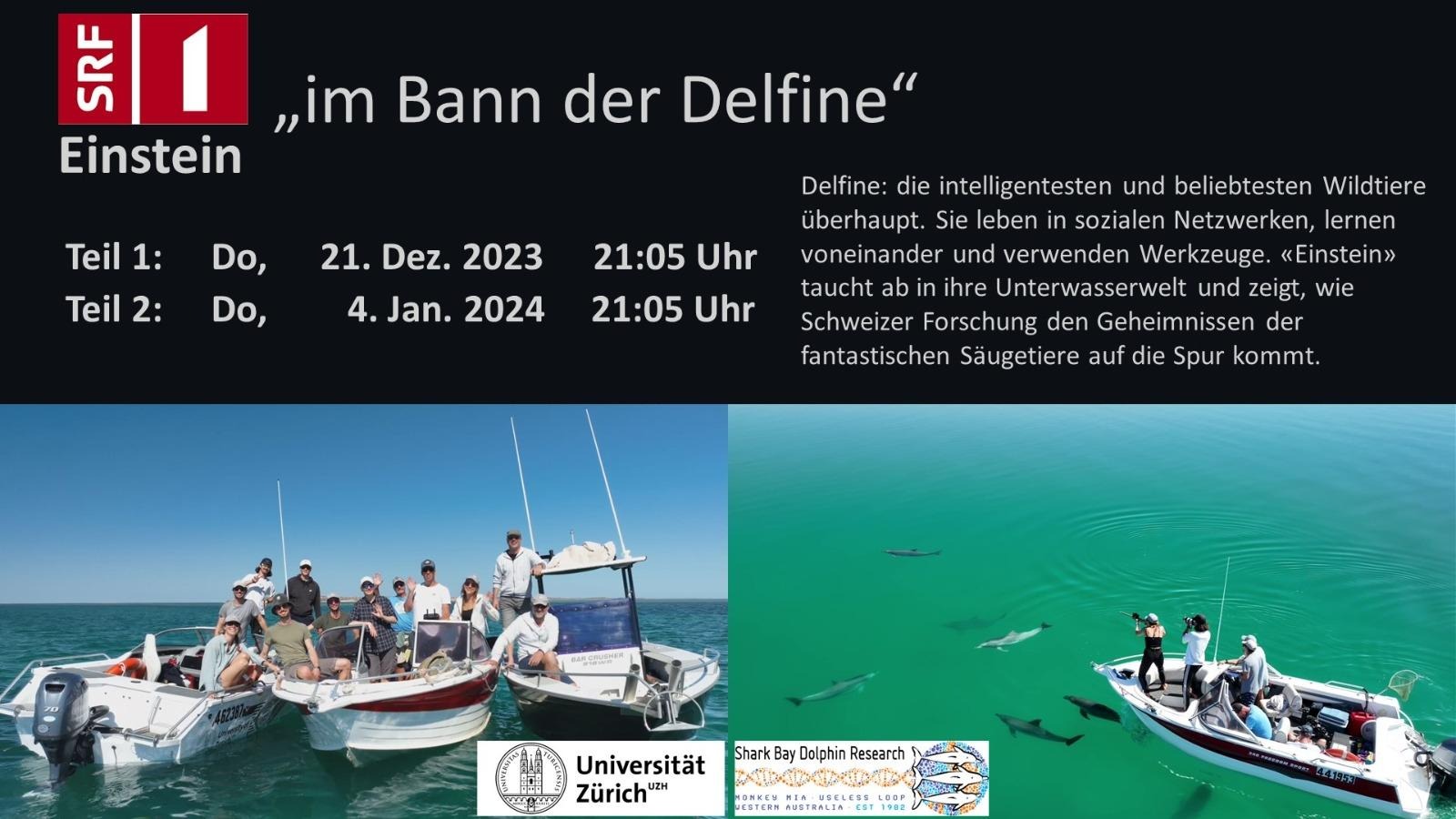 |
| If you have ever wondered what it is the dolphin researchers from our Evolutionary Genetics Group and Shark Bay Dolphin Research are doing in the field, check out SRF Einstein "Im Bann der Delfine", available for streaming. |
| Michael Krützen |
| Email Author |
| 2024-01-10, News |
Swiss scientists win time on top European supercomputer |
| Scientists with the Square Kilometer Array Switzerland (SKACH) consortium will use the largest ever allocation of node hours on Europe’s LUMI-G supercomputer to conduct a simulation looking at the role of turbulence and gravity in the universe. |
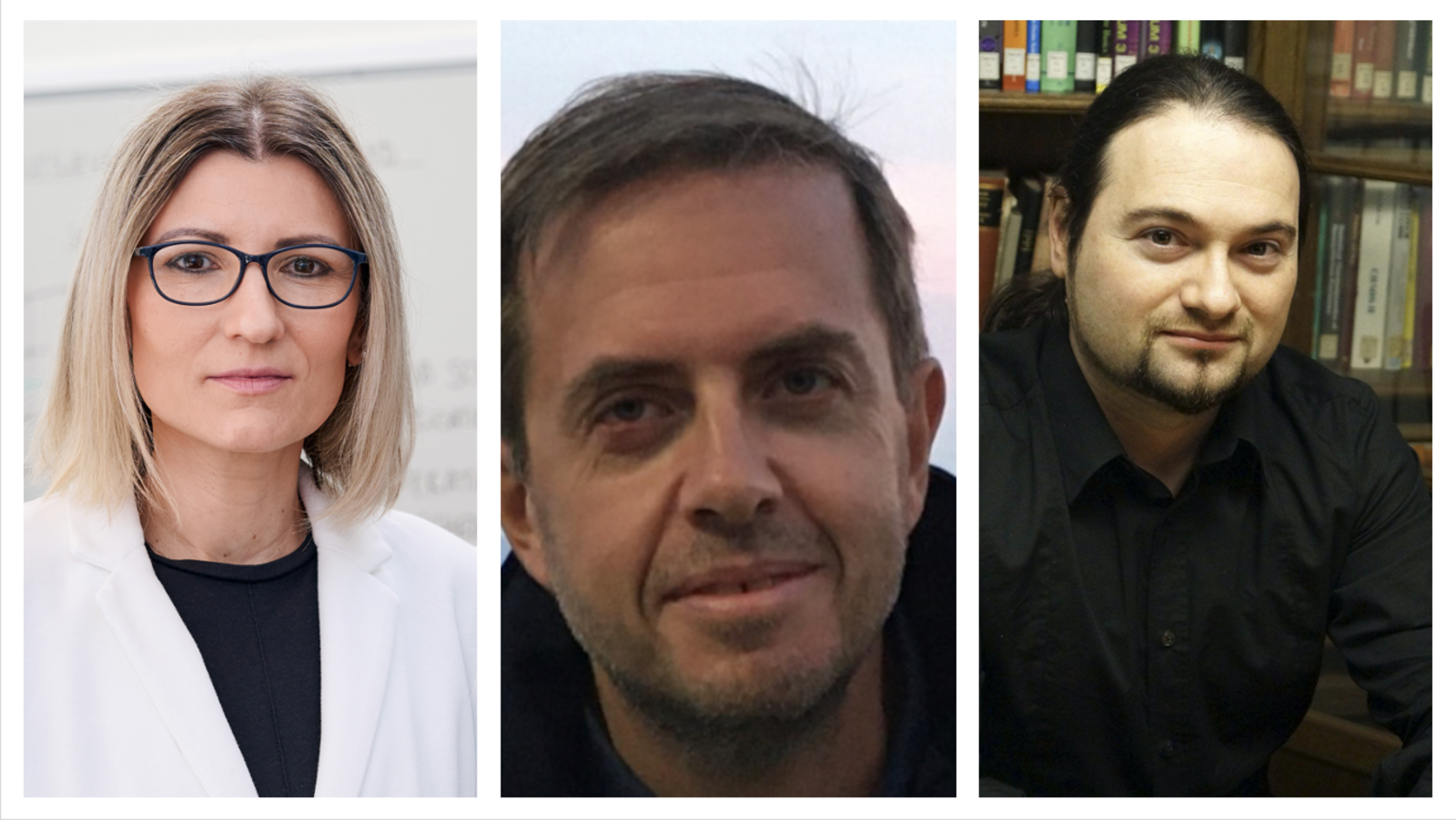 |
| Scientists working with the Swiss arm of the international Square Kilometer Array Observatory (SKAO), the world’s largest and most sensitive radio observatory currently under construction, have been awarded 5.500.000 node hours on the LUMI supercomputer in Finland for 12-months. When they come online, SKAO telescopes will look at the history of the Universe as far back as the Cosmic Dawn, when the very first stars and galaxies formed. With funding from the Platform for Advanced Scientific Computing and SERI as part of the SKACH consortium, the researchers have developed a leading-edge hydrodynamics code called SPH-EXA that is capable of simulating the behavior of fluids and plasmas on supercomputers, important because the universe consists mostly of gases and plasmas. Now, with the node hours awarded on Europe’s largest supercomputer, the code will create a simulation to investigate the formation of protostellar cores, the progenitors of stars like our own Sun. “Understanding this will help us to know the distribution of masses of stars which has important implications for the observable properties of galaxies. The other thing we are hoping to do with this project is study mixing, that tries to uncover why there is an apparent homogeneity in stellar clusters which is not really well understood,” explained Rubén Cabezón, astrophysicist and scientific programmer at the Center for Scientific Computing (sciCORE) at the University of Basel, part of the SKACH team and principal investigator in SPH-EXA. “This is equivalent to the largest turbulence simulation that has been ever done but for the first time we are including self-gravity, which is what we need for the stellar cores to collapse, and which is a major challenge, because it requires a lot of computational power to actually do the calculations with gravity,” he continued. Another important element of the project is testing the code itself. Florina Ciorba is a Professor of High-Performance Computing at the University of Basel, also part of the SKACH team and principal investigator in SPH-EXA. “I’ve dreamt of having access to such a huge machine allocation for an application and my objective is to see how the simulation behaves as a software code on that machine. I'm interested if there are any bottlenecks or inefficiencies in the way the simulation uses the system,” Ciorba explained. “Certain phenomena don't show at small scale but they will appear and be visible at large scale and I want to understand what happens in the time that we predicted the simulation will take.” During its operation, the SKAO will collect unprecedented amounts of data, requiring the world’s fastest supercomputers to process this in near real time. This simulation experiment is helping to drive the development of codes, enhanced by High-Performance Computing and machine learning techniques, to handle these large data streams. “With this code and the resolution that we can achieve thanks to the LUMI-G allocation, we can model interstellar turbulence using particle-based fluid dynamics, which has always been problematic in the past, and this is instrumental to be able to follow the formation of stars,” added Lucio Mayer, Head of the Institute for Computational Science at the University of Zurich also part of the SKACH team and principal investigator in SPH-EXA. Those closely involved with the project, including Ralf Klessen, professor for theoretical astrophysics at Heidelberg University, a pioneer in computational astrophysics, believe its multi-disciplinary nature is a real strength. “Progress at the very forefront of science relies on bringing together expertise in many different research fields. In our case, the envisioned simulations and their adequate interpretation depend on input from computer science, applied mathematics and data analysis, as well as theoretical astrophysics and observational astronomy. This combination opens new pathways towards better understanding how star and star clusters form in the turbulent multi-phase interstellar medium in galaxies such as our Milky Way.” Rubén Cabezón says the entire SPH-EXA team was ecstatic when they learned about the LUMI-G allocation, “There is so much science that can come from this, not only on astrophysics and cosmology, but also in computer science and this is what makes it so interesting. It's going to be a very, very exciting time.” Developed for the EuroHPC Extreme Scale Allocation Call the LUMI-G allocation was awarded for the project: “TGSF: The Role of Turbulence and Gravity in Star Formation, Unveiling the sonic scale with Smoothed Particle Hydrodynamics". The SKACH SPH-EXA team behind the proposal is: Project management: Florina Ciorba – Co-PI, Computer Science, High-Performance Computing, Load Balancing Specialist Software development, Simulations & Data analysis: Visualization & Data analysis: Data management & Transfer, CI/CD & Testing: Partners: Domingo García-Senz – Computational Astrophysics, SPH specialist
|
| E. Rembelska |
| Email Author |
| Department of Astrophysics |
| 2024-01-16, News |
Bring colour into the winter: The Food Hub at Irchel |
| Do you want to purchase sustainably produced fruits, vegetables and much more directly at your place of study or work? The Food Hub at Campus Irchel makes it possible. It is offered by the Sustainability Task Force of the UZH Department of Geography. he MNF supports it with a "Make Irchel More Sustainable!" grant. |
| |
| Read the full article in the GIUZ Blog! (in German only) |
| Sustainability Task Force, Department of Geography |
| Email Author |
| 2024-02-06, News |
Sense of belonging in the working environment |
| Lecture and Panel Discussion "Sense of belonging in the working environment: How diversity research can be transferred into good practice at UZH" (21 March 2024 ) |
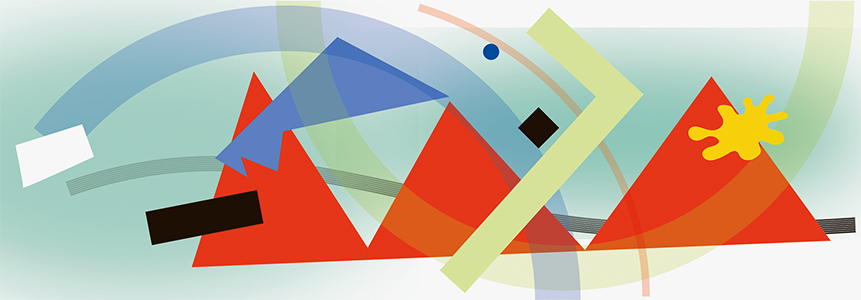 |
| Research of the UZH Center for Leadership in the Future of Work shows how people wish to feel at work. How can this be transferred into good practice in the academic everyday life of a research group? How can people in a leadership role interact with their team members in order to live diversity and to really create an inclusive atmosphere? This network event would like to show significant UZH diversity research expertise on one side – and the successful transfer/implementation in our own organization on the other. On Thursday, 21 March 2024 starting at 16.00 in RAA-G-01 («small aula») |
| Abteilung Gleichstellung und Diversität |
| Email Author |
| https://www.gleichstellung.uzh.ch/de/ueber_uns/grundlagen/diversity/netzwerk/20240321.html |
| 2024-02-09, Event |
Network Evening in the Irchel Bar |
| On the occasion of this year's "International Day of Women and Girls in Science", the Faculty's Gender Equality Committee and the Faculty's 2024 Verena Meyer guest professor Prof. Dr. Leigh Johnson invite all students, PhDs, PostDocs, researchers, lecturers, staff and professors of the Faculty for a networking evening. |
 |
| |
| Sara Petchey |
| Email Author |
| https://www.mnf.uzh.ch/de/fakultaet/gleichstellung/kampagne.html |
| 2024-02-11, Event |
Can Large Language Models Help Us Combat Online Misinformation? |
| As the quantity of misinformation online eclipses the capacity fact-checkers, LLMs may hold the promise of verifying content automatically. The study investigates into the performance of LLMs in fact-checking tasks. |
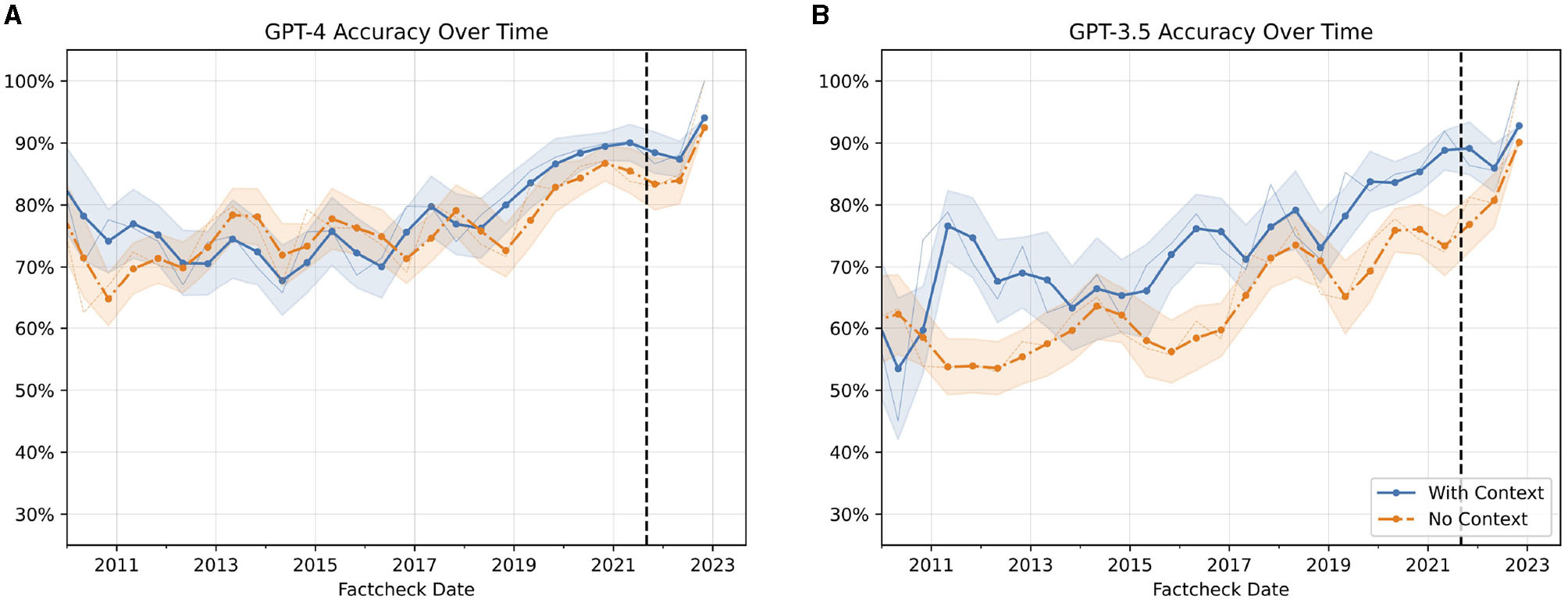 |
| The research paper "The Perils & Promises of Fact-checking with Large Language Models" by Dorian Quelle and Alexandre Bovet evaluates the use of GPT-3.5 and GPT-4 for fact-checking. With the proliferation of misinformation, fact-checking has become a crucial but resource-intensive task. The study investigates whether LLMs can assist in this endeavor by autonomously verifying claims, retrieving relevant context via Google, and explaining their decision-making process. The article compares the performance of GPT-3.5 and GPT-4 across two data-sets, under conditions with and without additional contextual information. Key findings reveal that GPT-4 generally outperforms GPT-3.5 in accuracy, particularly when additional context is provided. However, the accuracy significantly varies based on the language of the claim and the nature of the veracity. The study found that translating non-English claims into English before processing them through the models often resulted in better performance, highlighting language as a critical factor in the effectiveness of LLM-based fact-checking. The inclusion of contextual data notably improves the models' accuracy, suggesting the importance of external evidence in the verification process. Despite these promising results, the research underscores the inconsistency in the models' accuracy and the challenges associated with ambiguous verdicts. It suggests that while LLMs can support fact-checking processes, they are not infallible and should be used with caution. The paper advocates for further research to understand the conditions under which LLMs succeed or fail in fact-checking tasks. Moreover, it emphasizes the potential of LLMs to enhance the efficiency of human fact-checkers by providing preliminary assessments and rationales, thereby facilitating a more informed and quicker verification process. In conclusion, this study offers insights into the capabilities and limitations of Large Language Models in the context of fact-checking. It highlights the importance of contextual information and the challenge of language dependence in improving the accuracy of these models. For those interested in exploring this research further, the full study can be accessed here. |
| Dorian Quelle |
| Email Author |
| 2024-02-23, Sci. Publication |
Eons in a Blink: Processes in proteins unchanged for a billion years |
| For around four billion years, life on Earth has been developing in a fascinating evolutionary process. But how do proteins, the molecular machines in cells, change over this incredibly long period of time? In a groundbreaking study, researchers at the University of Zurich have unraveled the influence of a billion years of evolution on the pace of these molecular machines. |
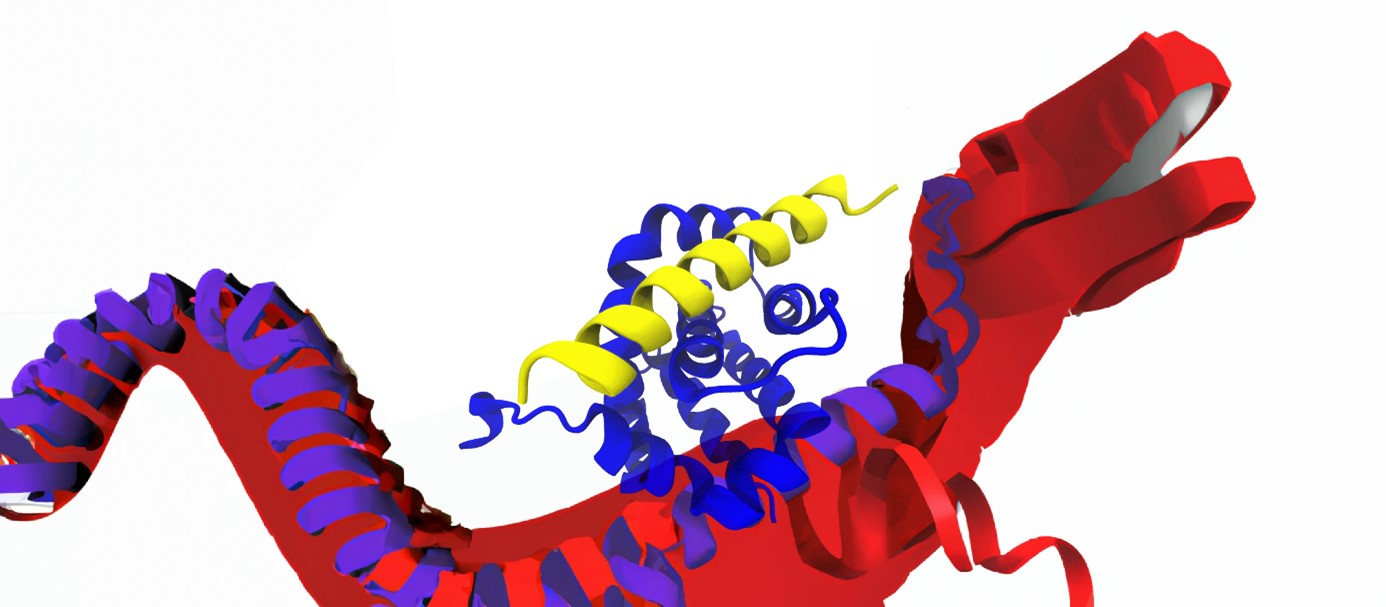 |
| For around four billion years, life on Earth has been developing in a fascinating evolutionary process. But how do proteins, the molecular machines in cells, change over this incredibly long period of time? In a groundbreaking study, researchers at the University of Zurich have unraveled the influence of a billion years of evolution on the pace of these molecular machines. The results, published in the prestigious journal Proceedings of the National Academy of Sciences (PNAS), provide a unique look at the influence of evolution on the most elementary building blocks of life. Over the course of billions of years, life on Earth has thrived and adapted, evolving to occupy every conceivable niche on our planet. The diversity of life that has emerged through evolution goes beyond what the naked eye can observe, such as different skull shapes and bone sizes, and beyond discernible variations in metabolism and sensory organs. Molecular characteristics change, too, notably seen in the structural alterations of proteins, the smallest building blocks of life - molecular machines inside cells. In a recent study, researchers at the University of Zurich (UZH) have gained a fascinating insight into the effects that hundreds of millions of years have on these molecular machines. How much do proteins change over an incomprehensibly long period of time? The results, published in the journal Proceedings of the National Academy of Sciences (PNAS), shed light on the effects of evolution over a period of one billion years. "Proteins are molecular machines that fulfill essential tasks in the cells of all living organisms. Proteins are dynamic, they constantly change their shape," says biochemist Philipp Heckmeier, who initiated and led the project. "Do the dynamics, the pace of the machines in human proteins function just as quickly as in similar mouse, fish or coral proteins, i.e. in life forms whose evolutionary divergence is hundreds of millions of years?"
Whether human, mouse, chicken, fish, mussel or coral - the basic processes in an oncologically relevant protein family are almost identical To find this out, the researchers investigated a protein family that is essential for the survival of cells and is at the center of current cancer research, the BCL-2 family. Using a molecular switch that they were able to turn on with laser light, they "destabilized" ten closely related proteins. This causes the protein to briefly rearrange - a response to "being knocked out of step". The researchers in the laboratory of Professor Peter Hamm (UZH) were able to resolve this response over time using infrared spectroscopy. "For all the proteins studied, the response begins in the nanosecond range. One nanosecond corresponds to one billionth of a second, i.e. 0.000 000 001 seconds - an almost unimaginably short period of time," says Heckmeier. In their experiment with ten proteins from different animal species, the researchers found that they all leave a species-specific but very similar "footprint" when they are brought out of step. "We found the same footprint for all the proteins we examined, regardless of whether the protein came from a human, a mouse, a chicken, a zebrafish, a mussel or a coral. Even though there are hundreds of millions of years of evolution between these species. This is remarkable!", says the researcher.
Artificial intelligence predicts almost identical protein structures Using artificial intelligence (Google's AlphaFold), the scientists were able to predict that not only the dynamics of the proteins are highly conserved, but also their structure. Heckmeier suspects: "The studied protein is particularly conserved because it is a molecule that is essential for the survival of tissue-forming animals. If its structure, timing or function changes just a little, the living organism can no longer maintain tissue and dies." Further insights gained by researchers suggest that the degree of conservation for a process is linked to how strongly it is coupled to the function of the protein. The scientists found that a functionally less important process can drift and slow down over time without affecting the function of the protein. The process was presumably exposed to a lower selective pressure in the past. The research results shed new light on the time scales in which life on Earth changes. "Here we observe the effect of a billion years on processes that take place in a billionth of a second. We are building a bridge between the shortest timescales of life to the longest. Unimaginably many generations of living beings must have passed on the same information over and over again so that protein pace has been conserved in an unchanging form. Over a billion years."
Literature: P.J. Heckmeier et al.: A billion years of evolution manifest in nanosecond protein dynamics. Proceedings of the National Academy of Sciences (PNAS). Feb 2024. DOI: 10.1073/pnas.2318743121 |
| Philipp J. Heckmeier (Postdoctoral Researcher at Hamm Group) |
| Email Author |
| 2024-02-27, Sci. Publication |
Public lecture by Leigh Johnson our Verena Meyer Visiting Professor |
| Public lecture: Digging in the drylands: Valuing labor and landform in nature-based solutions Tuesday, 19 March 2024, 16.00-17.00 Room Y25-H-38 Irchel |
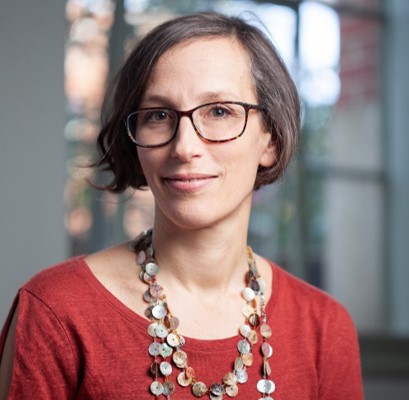 |
| |
| SP |
| Email Author |
| 2024-03-17, Event |
Birds use valleys and passes to cross the Alps |
| A team from GIUZ and the Swiss Ornithological Institute studied how migratory birds cross the Swiss Alps for the first time using year-round radar measurements: migration intensities, flight altitudes, speeds and directions were monitored. It turned out that migratory birds use the Alpine valleys and adjacent passes as passages. |
| |
| Every autumn, more than two billion migratory birds leave their breeding grounds in Europe. On their journey south, the Alps represent a particular barrier. While many birds widely circumvent the Alps, others choose the direct route to reach the wintering grounds south of the Sahara more quickly. Until recently, it was not exactly known how many birds cross the Alps and how they do so. Visual observations suggest that migratory birds fly primarily along Alpine valleys to avoid crosswinds and larger climbs. However, most birds migrate at night, making migration difficult to observe. Traditionally, researchers count the silhouettes of passing birds against the full moon, a method that is both time-consuming and time-limited. Efficient and accurate measurement with modern radar systems Highly specialised radar systems help researchers measure bird migration. They record birds up to 1,500 metres above the ground and provide precise numbers on bird migration. The team led by first author Simon Hirschhofer used two such scanners in the Swiss Inn- and Urseren Valley, and another scanner in the northern foothills of the Alps near Sempach. The results of the study confirm that migratory birds orientate themselves on the local topography of the valleys when crossing the Alps. The birds use valleys and adjacent mountain passes as passages through the Alps. Occasionally, this can locally lead to enormous migration peaks, where more than 20,000 birds pass by a valley section in an hour. The results of the study have important implications for the protection of migratory birds in the Swiss Alps. Valleys and mountain passes are also potential locations for wind power plants. Collisions with wind turbines already pose a danger to migratory birds. "Radar technology should be used to monitor the intensity of migration locally," suggests Simon Hirschhofer. "At times when many birds are travelling, the turbines could be temporarily shut down. Or such locations could generally be avoided for wind energy generation." This would allow thousands of birds to travel safely from their winter quarters to their summer quarters and back. Simon Hirschhofer, Felix Liechti, Peter Ranacher, Robert Weibel, Baptiste Schmid: High-intensity bird migration along Alpine valleys calls for protective measures against anthropogenically induced avian mortality; Remote Sensing in Ecology and Conservation 2024, https://doi.org/10.1002/rse2.377 |
| Simon Hirschhofer |
| Email Author |
| 2024-03-21, Sci. Publication |
Invasive species impacts transcend ecosystem boundaries |
| Invasive species have profound impacts on biodiversity. A study led by UZH researchers reveals the impacts of invasive species commonly transcend major ecosystem boundaries, such as the aquatic-terrestrial interface, influencing biodiversity across larger spatial extents than previously recognized. |
| |
| Invasive species are pervasive worldwide, reaching staggering numbers and having dramatic impacts on the ecosystems they invade. New research from the University of Zurich and Eawag, the Swiss Federal Institute of Aquatic Science and Technology, sheds light on the broader spatial dimension of the ecological influence of invasive species, revealing that their effects often extend beyond the boundaries of invaded ecosystems. Original publication: Peller, T. & Altermatt, F. (2024) Invasive species drive cross-ecosystem effects worldwide, Nature Ecology & Evolution, DOI: 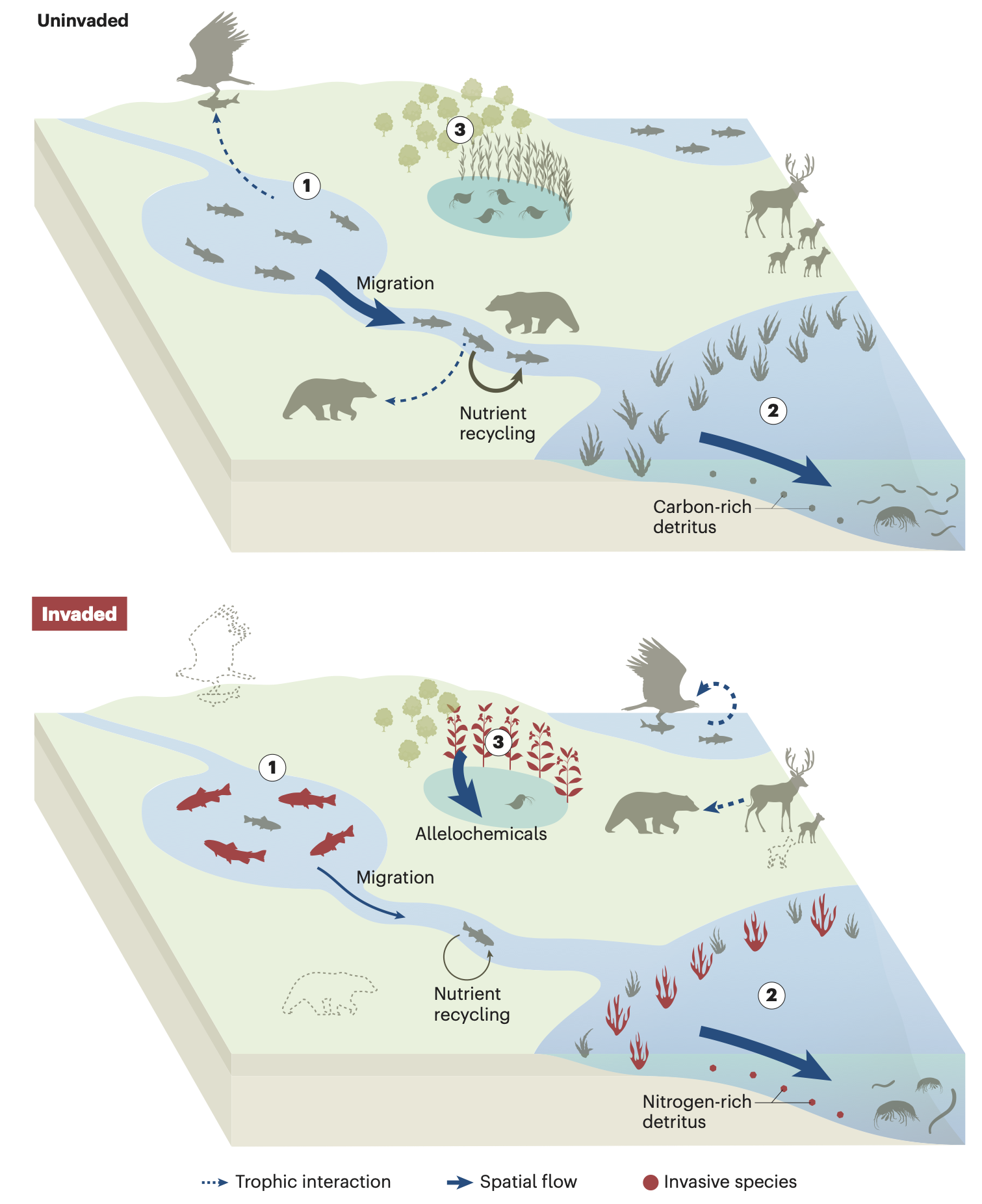 |
| Tianna Peller and Florian Altermatt |
| Email Author |
| Department of Evolutionary Biology and Environmental Studies
|
| 2024-04-04, Sci. Publication |
SHiP experiment approved |
| Just over ten years after its initial proposal, the SHiP experiment has been approved by the CERN management to start data taking in the next decade! The SHiP experiment is designed to search for extremely weakly interacting particles by using an incredibly intense beam of protons available at the LHC. |
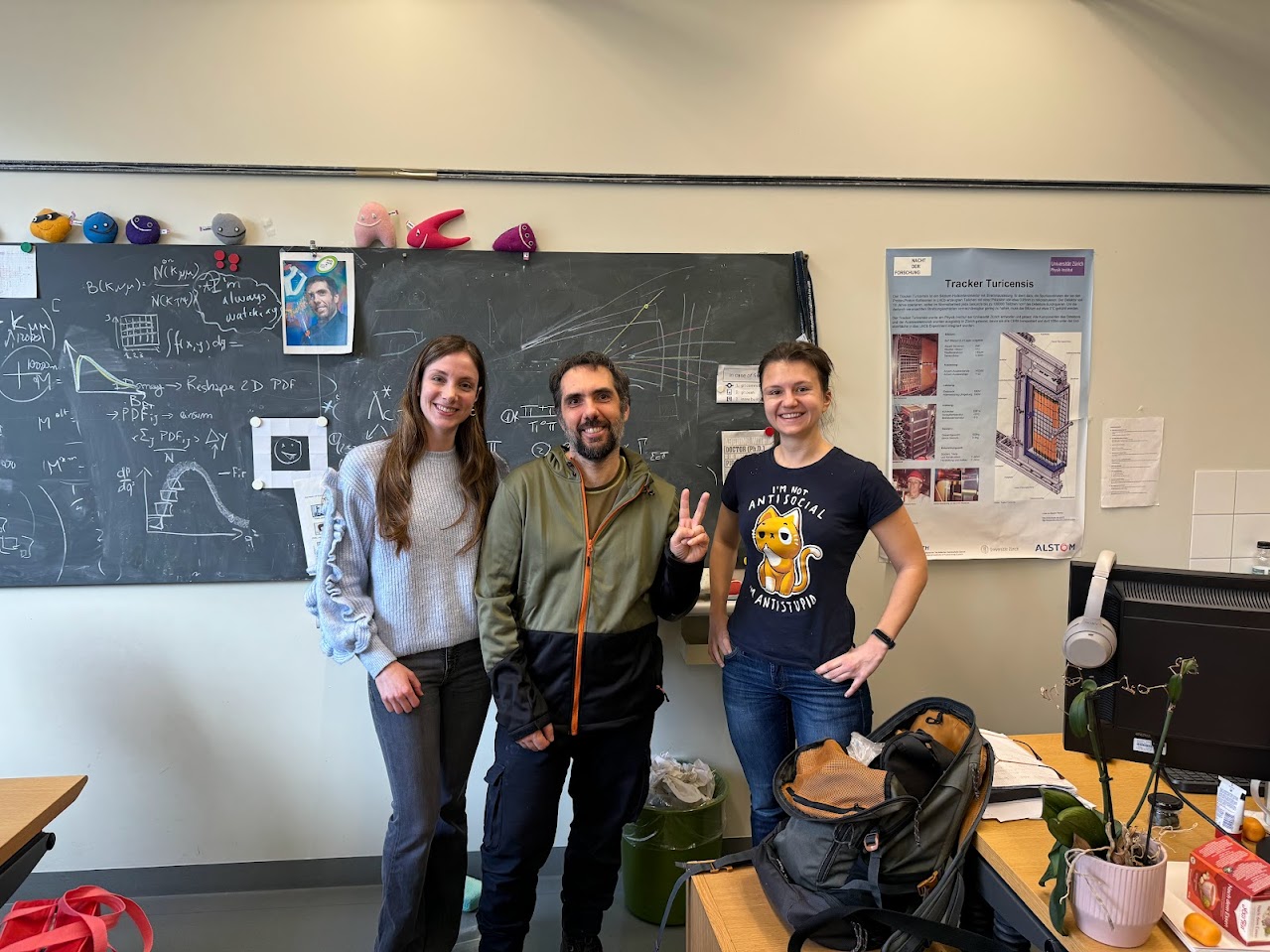 |
| A new experiment SHiP has just been given the green light by CERN to proceed. The experiment is designed to search for so-called "hidden particles", named as such because they barely interact with ordinary matter. An example of this is the search for a heavy neutrino, which is a kind of neutral electron that could solve some of the pressing open questions such as to what is the mysterious material Dark Matter. The search for hidden particles complements the existing experiments at CERN, which instead look for signs of heavy new particles (such as what we do at the LHCb experiment here in UZH). The experiment was co-founded by Prof. Nicola Serra and was supported by an SNF-Starting grant in the design phase, where Martina Ferrillo and Dr. Iaroslava Bezshyiko made vital contributions. The approval of the CERN management moves the experiment into the finalization of the design and construction phase – what an exciting time to be part of the experiment! The group here at UZH has been hugely involved in SHiP since its inception, where the first collaboration meeting took place here in Zurich in 2013. The group also led vital studies for the experiment design that was submitted to CERN for approval. Prof. Serra now has his work cut out as physics coordinator of the experiment - this is where the real work begins!
|
| Katharina Müller |
| Email Author |
| 2024-04-16, News |
Gabriela Schaepman-Strub selected as National Champion for Switzerland of the Frontiers Planet Prize |
| The Frontiers Planet Prize celebrates breakthroughs in sustainability science, rewarding solutions that show measurable potential to help humanity remain within the boundaries of the Earth’s ecosystem. Prof. Gabriela Schaepman-Strub has been selected as National Champion of Switzerland for this prize (Vegetation type is important predictor of Arctic summer land surface energy budget) |
| |
| Through our synthesis study, we identified surface energy flux measurements, formed the Arctic-SEB group, and analysed drivers of fluxes. Running flux towers in the Arctic is extremely challenging, resulting in a very low density of long-term flux measurements over Arctic terrestrial surfaces. Such observational networks however are critical to understand energy and carbon feedbacks between the atmosphere and land surface, under thawing permafrost, increasing tundra fires, and industrial development. Our study shows that changes of Arctic vegetation types due to climate change or land use change through industrial development will feed back to climate and permafrost through summer surface energy fluxes. Link to Nature Communications study Planetary Boundaries addressed: |
| gabriela.schaepman@ieu.uzh.ch |
| Email Author |
| https://www.frontiersplanetprize.org/editions-second-edition |
| 2024-04-22, Awards and Honors |
Honorary Doctorate of the Faculty of Science for Prof. Dr. Beate Heinemann |
| The Faculty of Science of the University of Zurich is awarding an honorary doctorate to Prof. Dr. Beate Heinemann for her outstanding scientific achievements in experimental elementary particle physics, her pioneering role in the search for new particles and her associated contributions to the planning of future particle accelerators. |
| |
| Prof. Dr. Beate Heinemann is a world-leading scientist in experimental particle physics working at the Deutsches Elektronen-Synchrotron (DESY) and at the University of Hamburg and was awarded this honor on the occasion of the 191st Dies Academicus of the University of Zurich. Prof. Heinemann received her PhD from the University of Hamburg in 1999. As a postdoctoral researcher at the University of Liverpool, she worked on the CDF experiment at Fermilab and was soon appointed Physics Coordinator. In 2008, she was appointed to a professorship at the University of California Berkeley, where she played a key role in preparing the data analyses for the ATLAS experiment at CERN, which was being set up at the time. At both CDF and ATLAS, she played a leading role in the search for new elementary particles and led the ATLAS collaboration as co-spokesperson from 2013 to 2017. In 2016, she was appointed to a professorship at the University of Freiburg in conjunction with a position as a senior scientist at DESY. She has been Director of Particle Physics at DESY since 2022 and a full professor at the University of Hamburg since 2023. Video:
|
| KE |
| Email Author |
| https://www.news.uzh.ch/de/articles/news/2024/dies-academicus.html |
| 2024-04-30, News |
Science and Nature Festival |
| On Saturday, June 8, 2024 from 12:00-17:00 we celebrate the Science and Nature Festival on the Irchel campus of the University of Zurich. Under the motto "Discover | Explore | Celebrate Diversity", an afternoon full of inspiration, activities and encounters will take place. |
 |
| On Saturday, June 8, 2024 from 12:00-17:00 we celebrate the Science and Nature Festival on the Irchel campus of the University of Zurich. Under the motto "Discover | Explore | Celebrate Diversity", an afternoon full of inspiration, activities and encounters will take place.
|
| RA |
| Email Author |
| 2024-04-29, Event |
MNF Science Photo Contest |
| As part of the Science and Nature Festival, the Faculty of Science is organizing a photo competition. |
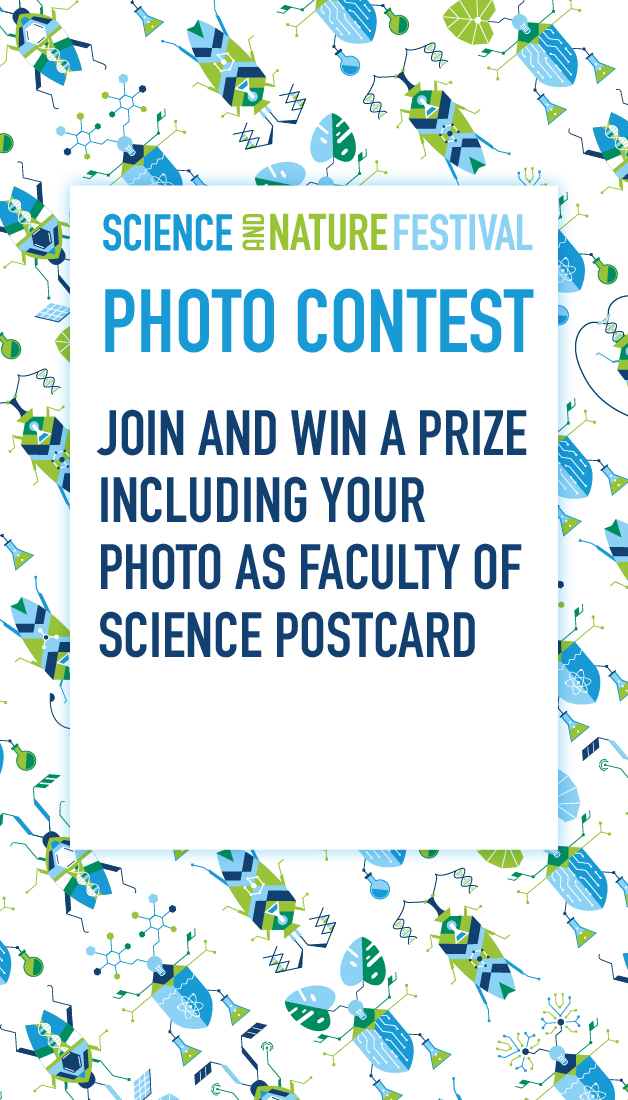 |
| Share your passion for science and photography. Whether amateur or professional, take your camera, seize the moment and take part in the MNF Science and Nature Festival photo contest. What do you do as a scientist? What are you studying? What is your research object? What memorable moments and encounters have you had? Your photo will be exhibited at the MNF Science and Nature Festival 2024, may win a prize and become an MNF postcard! How does it work? All further information can be found here: https://www.mnf.uzh.ch/en/oeffentlichkeit/mnf-festival/photo-contest.html
|
| RA |
| Email Author |
| https://www.mnf.uzh.ch/de/oeffentlichkeit/mnf-festival/fotowettbewerb.html |
| 2024-04-30, Event |
Team Effort Award 2023 |
| At this year's Dies Academicus, the Airmiles Group of the Department of Geography (GIUZ) of the Faculty of Science was awarded the Team Effort Award 2023 for its pioneering role in reducing flight-related emissions at UZH. Our congratulations! |
 |
| With the Team Effort Award, the University of Zurich honours the Air Miles Group of the Department of Geography (GIUZ) for its pioneering role in reducing flight-related emissions at UZH. Air travel accounts for a large proportion of UZH's greenhouse gas emissions. Since 2017, countless hours of voluntary work have been spent at the GIUZ collecting, analysing and publishing the flight data of employees and guests on an annual basis. In 2020, the Air Miles Group used this data to set reduction targets for the GIUZ and developed strategies to achieve them, as well as an advisory service for members of the department. The Air Miles Group thus raised awareness of an issue that is also very important from a university-wide perspective. |
| Kommunikation |
| Email Author |
| https://geo.uzh.ch/en/department/sustainability/air-miles.html |
| 2024-04-30, Awards and Honors |
Navigating Unseen Roads: Exploring the Impact of Bias on Academic Women’s Career Trajectories |
| What does it mean for female founders to build start-ups and spin-offs as opposed to their male peers? Do conscious and unconscious bias play a role? A female founder sharing her story after a decade in entrepreneurship. Registration necessary! |
 |
| What does it mean for female founders to build start-ups and spin-offs as opposed to their male peers? Andreia R. Fernandes thrives in a dynamic portfolio career spanning entrepreneurship, advisory roles, authorship, speaking engagements, coaching, and facilitation. As the founder of SEABRAND International, she adeptly connects the realms of Leadership and Strategy, serving as a business curator passionate about optimizing success at individual, team, and organizational levels. She works with Start-ups as well as multinational companies across industries. This event is co-organized by the Office Gender Equality and Diversity, University of Zurich and ETH Diversity, ETH Zurich, partners in the Femspin project. |
| Christiane Löwe |
| Email Author |
| 2024-05-10, Event |
41st Paul Karrer Lecture and Award Ceremony: Prof. Dr. Katalin Karikó |
| Developing mRNA for Therapy Messenger RNA was discovered in 1961 and it took 60 years until the first mRNA became FDA-approved product in the form of COVID-19 mRNA vaccine. These discoveries led to the development of the COVID-19 mRNA vaccine that has helped to fight the global pandemic and opened the door for developing breakthrough therapeutics for incurable diseases and unmet medical needs. |
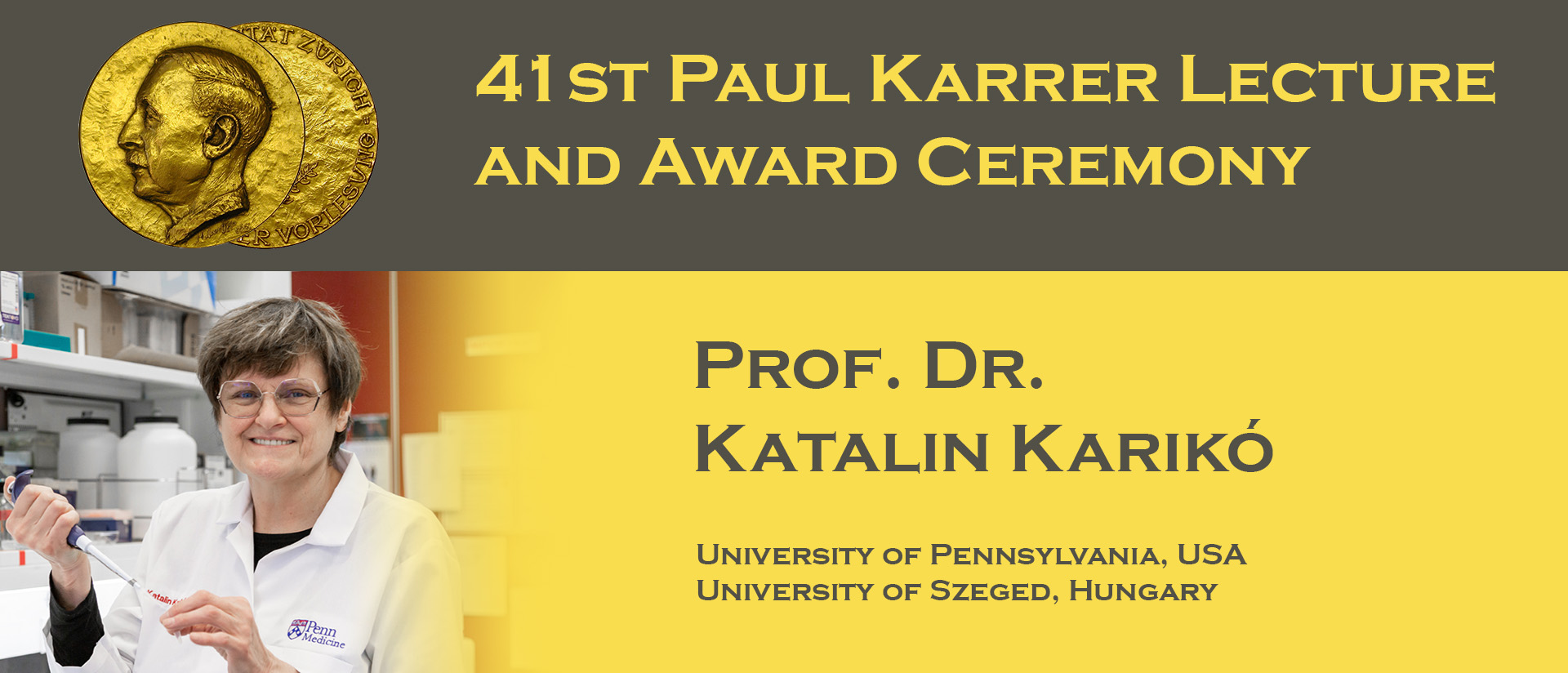 |
| The Laureate Prof. Dr. Katalin Karikó is professor at University of Szeged and adjunct professor of neurosurgery at the Perelman School of Medicine, University of Pennsylvania, where she worked for 24 years. She is former senior vice president at BioNTech SE, Mainz, Germany, where she worked between 2013-2022. She received her Ph.D. in biochemistry from University of Szeged, Hungary, in 1982. For four decades, her research has been focusing on RNA-mediated mechanisms with the ultimate goal of developing in vitro-transcribed mRNA for protein therapy. She investigated RNA-mediated immune activation and co-discovered that nucleoside modifications suppress immunogenicity of RNA, which widened the therapeutic potentials of mRNA. She co-founded and from 2006-2013 served as CEO of RNARx, a company dedicated to develop nucleoside-modified mRNA for therapy. Her patents, co-invented with Drew Weissman on nucleoside-modified uridines in mRNA is used to create the FDA-approved COVID-19 mRNA vaccines by BioNTech/Pfizer and Moderna to fight the pandemic. For her achievement she received many prestigious awards, including the Peter Speiser Award, Jeantet-Collen Prize, Reichstein Medal, Solvay Prize, Paul Ehrlich Prize, the Breakthrough Prize and the Lasker-DeBakey Clinical Medical Research Award. Just after having accepted to be the Paul Karrer Awardee 2024 Katalin Karikó received the Nobel Prize in Medicine 2023 together with Drew Weissman “for their discoveries concerning nucleoside base modifications that enabled the development of effective mRNA vaccines against COVID-19.” |
| Ramona Erni |
| Email Author |
| Prof. Dr. Katalin Karikó |
| 2024-06-10, Event |
What makes us human? New exhibition at Science Pavilion UZH |
| In our new exhibition we explore what makes us human and the similarities between us and other species. Dive into the current research of the Department of Evolutionary Anthropology. |
 |
| What makes us human? What forms and characteristics do communication, cooperation and culture take in the animal kingdom? How do researchers investigate these complex relationships in primates and other animals? For centuries, researchers from all disciplines as well as musicians, artists and poets have been studying the uniqueness of our species. This question has also shaped the research of the Department of Evolutionary Anthropology since its beginnings 125 years ago.  |
| Science Pavilion UZH |
| Email Author |
| 2024-05-16, News |
Mathilde Martin received the prize for the best PhD of the year 2023 from the SFECA |
| Mathilde Martin, IEU, received the prize for the best PhD of the year 2023 from the French Society for the Study of Animal Behaviour (SFECA) at the SFECA annual colloquium, held in Albi, France. She was rewarded for the originality and quality of the work she carried out during her PhD (2019-2023) on the acoustic communication network of the Cape fur seal. |
| |
| Mathilde Martin is a postdoctoral researcher in the Communication and Cognition in Social Mammals research group of the Department of Evolutionary Biology and Environmental Studies at the University of Zurich. She is currently interested in deciphering how close calls produced by meerkats during foraging reinforce group cohesion and what information these vocal signals convey between emitters and receivers. On the 24th of May 2024, Mathilde Martin received the prize for the best PhD of the year 2023 from the French Society for the Study of Animal Behaviour (SFECA) at the 53rd edition of the SFECA annual colloquium, held in Albi, France. She was rewarded for the originality and quality of the work she carried out during her PhD (2019-2023) on the acoustic communication network of the Cape fur seal. Her work involved describing the species’ vocal repertoire, evaluating the degree of individuality in the seals’ vocalisations, and investigating individual vocal recognition at several levels of the communication network. Congratulations and all the best for your current projects at the University of Zurich! |
| mathilde.martin@uzh.ch |
| Email Author |
| 2024-05-30, Awards and Honors |
Remi Abgrall has been selected as the winner of the ECCOMAS Prandtl Medal |
| Rémi Abgrall has been selected as the winner of the ECCOMAS Prandtl Medal for outstanding and sustained contributions to the area of computational fluid dynamics. ECCOMAS is a scientific organization founded in 1992, grouping together European associations with interests in the development and applications of computational methods in applied sciences and technology. |
| |
| Rémi Abgrall is a distinguished mathematician and academic, known for his extensive contributions to the field of numerical analysis, particularly in the numerical discretization of hyperbolic problems. He is an alumnus of the École Normale Supérieure de Saint-Cloud (now part of ENS Lyon) in France, where he studied mathematics. After completing his Ph.D. at the 'Laboratoire de Météorologie Dynamique' of CNRS at École Normale Supérieure in Paris, he worked as a research engineer at ONERA (The French Aerospace Lab) and then as a research scientist at INRIA (French Institute for Research in Computer Science and Automation). In 1996, Abgrall joined the University of Bordeaux as an associate professor. He was promoted to full professor in 2001 and became a distinguished professor in 2008. That same year, he became a research director at INRIA. In 2014, he moved to the University of Zurich, where he continues his research and academic activities. Abgrall's work focuses on the numerical discretization of hyperbolic problems, including the compressible Euler equations, multiphase flow equations, and the Hamilton-Jacobi equation. He has a significant interest in working with general unstructured meshes and high-order schemes, advancing methods used for solving complex mathematical problems in fluid mechanics and related areas. He is or has been the editor of several specialized journals, including the Journal of Computational Physics (as Editor-in-Chief), Journal of Scientific Computing, M2AN (Mathematical Modelling and Numerical Analysis), M3AS (Mathematical Models and Methods in Applied Sciences), Mathematics of Computation, Communications in Computational Physics, and Computers and Fluids. Abgrall has received numerous honors and awards, such as the GAMNI Prize from the French Academy of Sciences and being named a SIAM Fellow in 2022. He was awarded an advanced ERC (European Research Council) grant in 2008. In the current year, he received the Prandtl Medal from ECCOMAS for his "sustained and outstanding contributions in the field of fluid mechanics". ECCOMAS, the European Community on Computational Methods in Applied Sciences, is a scientific organization that brings together European associations with interests in the development and application of computational methods in science and technology. Rémi Abgrall's career is marked by significant academic achievements, influential research, and leadership in the mathematical and computational science communities. His contributions continue to impact the field of numerical analysis and its applications in various scientific domains.
|
| Prof. Dr. Rémi Abgrall |
| Email Author |
|
|
| 2024-06-12, Awards and Honors |
Measure of niches shows great apes experience the least competition; marmosets and tamarins the most |
| A team of researchers at the University of Zurich and the University of Cambridge calculated niches of 191 primate species in a seven-dimensional space. They used this to show how primate niches evolved and calculate which groups of primates experience the highest levels of between-species competition. |
| |
| Niches are a notoriously widely used, but ill-defined, concept in evolutionary biology. There are multiple definitions, spanning from ‘the resources an animal needs to survive’ to ‘what an animal does in its environment’ to ‘the location in which a species can continue to increase in numbers’. Many definitions, paired with difficulties in going from abstract definition to measured variable, has made it historically difficult to ‘measure’ niches for groups of animals. In the study, published in Nature Communications Biology, the UZH and Cambridge researchers have provided a new way to calculate primate niches. They collected data on 11 traits (including average body size, life history, diet, habitat breadth, and climate) for 191 primate species, and calculated where species fit within a seven-dimensional space made up of these variables. This collaborative effort includes Prof Kathelijne Koops from the Department of Evolutionary Anthropology and Prof Catalina Pimiento from the Department of Paleontology at the University of Zurich. Prof Koops is a primatologist working on the evolutionary origins of great ape behaviour, with a focus on tool use and culture; and Prof Pimiento is a computational paleobiologist working on the diversification and extinction mechanisms of marine life, especially sharks and marine megafauna. This unusual cross-disciplinary collaboration led to a novel use of an analytical approach previously applied to marine megafauna and sharks, now applied to non-human primates. “Taking into account different types of variables in a single analysis means we essentially combined all definitions of niches”, Laura van Holstein, joint lead author of the paper, said. “From this, we showed, first of all, that Asian and African monkeys, and great apes, are the most diverse groups when all of these variables are taken together. You might not have expected this, because, for example, if you only look at one variable – body size – great apes aren’t that diverse: they are all fairly large for primates. But when you consider all variables, great apes are much more diverse than, say, South American monkeys”. The team then ran phylogenetic comparative analyses to ask how primate niches change over evolutionary time. They show that, instead of traits evolving independently, primate evolution happened through natural selection for optimal combinations of traits. “This is interesting because many studies focus only on the evolution of a single trait,” said Pimiento, “but this is not necessarily the way evolution works.” The team then used the seven-dimensional space to calculate which species undergo the most between-species competition, and which species the least. “Species cannot live in the same place and occupy the exact same niche,” Pimiento explained. “This between-species competition is an important driver of evolution: if species compete intensely, then the outcome is either than one evolves a different combination of traits to occupy a different niche, or it goes extinct.” Species that are closer to each other in the seven-dimensional niche space, the authors reasoned, therefore likely experience more competition. They found that South American tamarins and marmosets experience high levels of competition. “This is a surprising and intriguing result,” according to Koops, “because we know that these species often associate with each other in big mixed-species groups in the wild. So how are they dealing with the negative evolutionary consequences of competition that great apes have managed to escape?” In contrast, great apes experience low levels of competition from other primates. “Great apes have clearly found a unique niche space compared to other primates: they are the least primate-y primates. This means they avoid the negative evolutionary consequences of between-species competition,” explained Koops. These results have implications beyond evolutionary biology, according to the authors. Van Holstein: “Niches describe what an animal is doing in an environment: its role and what it needs. Ecosystem stability depends on niches being filled. Going forward, we can use our seven-dimensional space to understand which species will represent the biggest losses in terms of niche uniqueness: the species that, if they were to go extinct, would cause an above-average loss of unique ecosystem functions. This may help in conservation prioritization.” |
| Prof. Dr. Catalina Pimiento Hernandez and Prof. Dr. Kathelijne Koops |
| Email Author |
| https://www.pim.uzh.ch/en.html |
| 2024-06-12, News |
A High-throughput procedure with light microscopy and machine learning quantifies virus infections |
| A procedure named ‘detection of virus-induced cytopathic effect (DVICE)’ robustly quantifies virus infection-specific features in a perturbation-low manner allowing for dynamic assessment of chemically fixed and live specimens. DVICE is applicable to clinical samples, and laboratory diagnostics. |
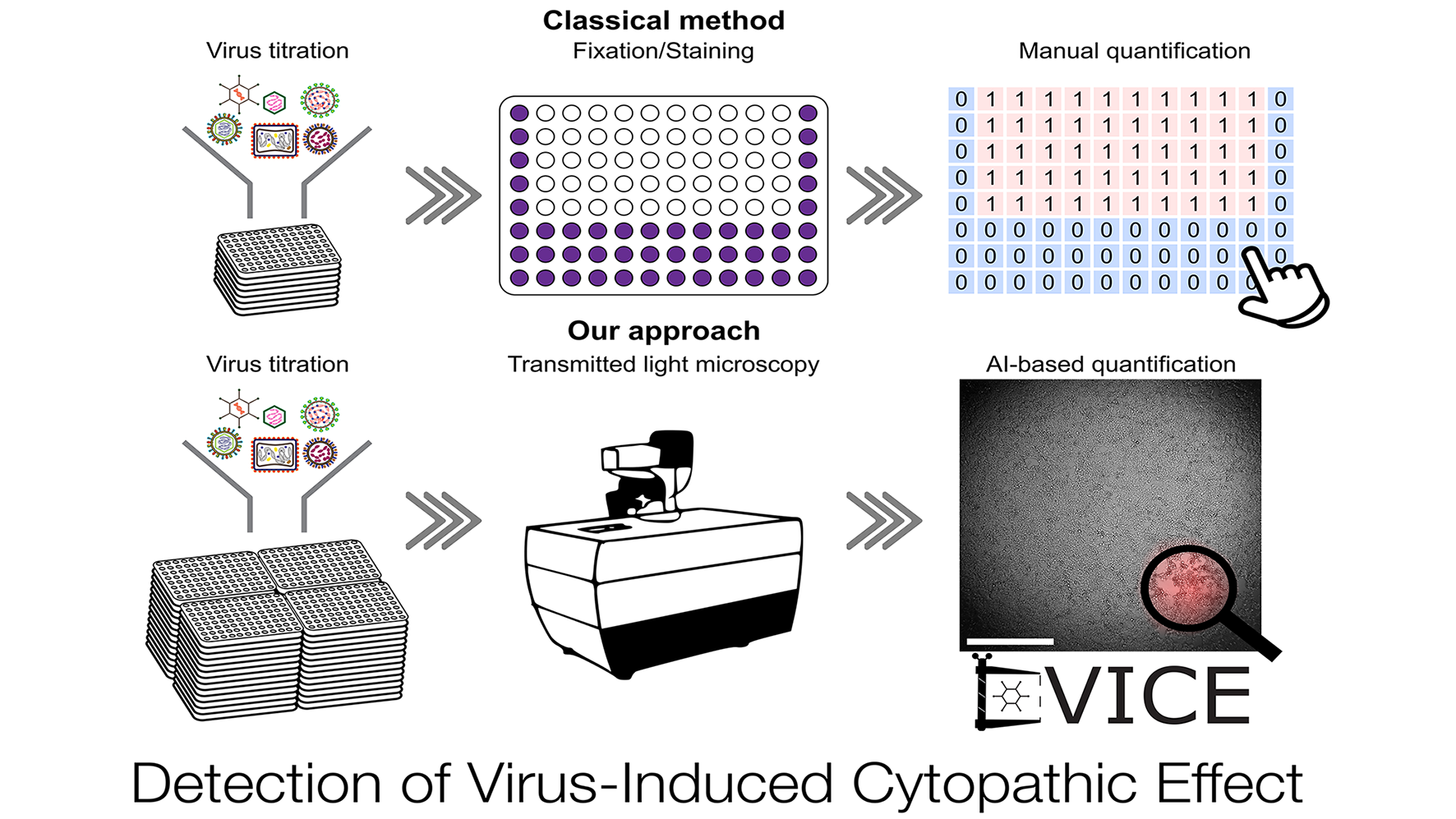 |
| We developed an automated procedure to score virus infectivity in laboratory and clinical samples. The procedure is named ‘detection of virus-induced cytopathic effect (DVICE)’. DVICE is based on label-free transmitted light microscopy and artificial intelligence (AI). It interprets cytopathic phenotypes in an ensemble of cells, as induced by a range of human viruses, including coronaviruses, adenoviruses influenza A virus, rhinovirus, herpes simplex virus, and vaccinia virus. Class activation maps and ‘leave one out’ crossvalidations show that DVICE recognizes infection-specific features with virus class specificity. DVICE also provides a user-friendly graphical interface for readily monitoring live cell infection dynamics in high throughput screening protocols. |
| Professor Urs Greber |
| Email Author |
| 2024-06-17, Sci. Publication |
ARRAKIHS surpasses the Payload Phase A in record time |
| The European Space Agency (ESA) space mission ARRAKIHS (Analysis of Resolved Remnants of Accreted galaxies as a Key Instrument for Halo Surveys) reached an important milestone in March: the Instrument Preliminary Requirements Review (iPRR) was successfully passed. |
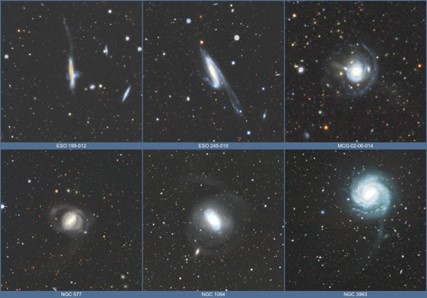 |
| The European Space Agency (ESA) space mission ARRAKIHS (Analysis of Resolved Remnants of Accreted galaxies as a Key Instrument for Halo Surveys) reached an important milestone in March: the Instrument Preliminary Requirements Review (iPRR) was successfully passed. As a result, ESA approved the completion of Payload/Instrument Phase A, announcing that ARRAKIHS Payload is ready to start Phase B this May. The duration of Phase A, only 6 months, is in line with the mission's adherence to the spirit of ESA's fast mission program, advancing rapidly and efficiently. This Payload is the brain of ARRAKIHS, an instrument composed of two visible cameras and two infrared cameras developed by the Spanish company Satlantis to obtain the deep images of the Universe necessary for the scientific objectives of the mission. Successfully passing this iPRR is a very important step that brings the adoption of ARRAKIHS closer as the next fast-class mission in the ESA's Scientific Program (F2). The final decision on its adoption is expected to be made in the first half of 2026. "ARRAKIHS is a very beautiful mission, focused on a very specific objective, which is to try to demonstrate the nature of dark matter by obtaining very deep images in the halos of galaxies like the Milky Way," explains Rafael Guzmán, leader of the ARRAKIHS mission consortium (AMC) and research professor at the Institute of Physics of Cantabria (IFCA, CSIC-UC), the center leading the space mission.
The remnant of dark matter The objective of the ARRAKIHS mission is to explore the Universe to understand the nature of the dark matter that comprises it. "To explain the structure and dynamics of our cosmos, it has been necessary to introduce a type of component that we cannot observe directly, but that gravitationally influences the movement of stars and galaxies," explains Guzmán. This is dark matter, which, according to the research community, constitutes more than 80% of the matter in the universe, and its effects can be revealed by the characteristics of stellar streams, faint traces of stars left by small galaxies orbiting in the halo of large galaxies like our Milky Way as they are destroyed by gravitational interaction.
4 high-precision cameras To analyse these effects, ARRAKIHS will observe a representative sample of Milky Way-like galaxies in the local universe at very low levels of surface brightness, never achieved at visible and infrared wavelengths, using four high-precision cameras aboard a satellite that will orbit the Earth at around 800 km altitude. "The successful completion of the iPRR marks a pivotal moment for ARRAKIHS," said Santiago Serrano, the instrumentation team lead (Satlantis and Institut d’Estudis Espacials de Catalunya, IEEC). "Our team has demonstrated remarkable technical expertise and dedication to advancing the mission at an extraordinary stage. We are excited to move the instrument payload forward to Phase B." The approval of the iPRR concludes a very intense period of work that began last October and ended in early March. Rafael Guzmán thanked the team for "the great effort to overcome this phase in such a short time". And he emphasised "the spectacular work done by the instrumentation team, led by Santiago Serrano, with the support of the AMC Science and Ground Segment team and the effective coordination of the ARRAKIHS instrument project office". “This review is a crucial step for us. It means we’re getting ready for the more detailed and expensive phases of development, boosting our chances of making the entire mission a success”, comments Stefan Kögl, the Instrument Project Manager of ARRAKIHS. “Our emotions changed from focused determination throughout the data pack preparation to relief and pride at the achievement of the data package delivery”, affirm. The Director of IFCA, the leading institution of ARRAKIHS, Patricio Vielva comments that "IFCA is pleased that the ARRAKIHS payload has advanced to the next evaluation phase, a crucial step toward ESA's adoption of the mission. This progress highlights the excellent work of the ARRAKIHS team in proving the feasibility of critical instrumentation for the mission.”
Next steps towards 2030 The ARRAKIHS team will now work for two years to achieve the goal of successfully completing Phase B with the approval of the Instrument Preliminary Design Review (iPDR) in the first half of 2026. This will be the last of different steps in the decision for ARRAKIHS to be adopted as the next fast-class mission in the ESA's Scientific Program (F2), with an estimated launch date of 2030. The ARRAKIHS mission consortium is led by Spain, with important contributions from Switzerland, Belgium, Sweden, Austria, United Kingdom and Portugal with additional contributions to science from Holland, Norway, US, Taiwan and Thailand. The ARRAKIHS consortium also includes companies from the aerospace sector led by the Spanish company Satlantis, which is responsible for the Payload. Currently, the ARRAKIHS consortium includes more than 100 researchers from over 20 research centers and universities from the aforementioned countries.
The University of Zurich’s Role in ARRAKIHS Switzerland, a member and founding member of the European Space Agency, plays a crucial role in the mission. Switzerland manages the project for Spain and is also responsible for the instrument's mechanical structure and the thermal properties of the telescope. "To ensure the camera detectors are as sensitive and noise-free as possible, they need to be cooled to approximately -130°C. This is done entirely passively by radiating heat through radiators into cold space," says Dr. Florian Kehl, Swiss Project Manager for ARRAKIHS from the Department of Astrophysics at the University of Zurich (UZH). "The scientific instrument must also withstand the mechanical stresses of the rocket launch without compromising the delicate optics," adds Kehl, "and this must be done with the lightest possible construction, as every gram counts in spaceflight." The University of Zurich is supported in this endeavor by the University of Applied Sciences and Arts Northwestern Switzerland (FHNW), Lucerne University of Applied Sciences and Arts (HSLU), Zurich University of Applied Sciences (ZHAW), and the company Kögl Space. But the University of Zurich is not only leading in construction; it is also at the forefront of the scientific side of the mission. “A large part of the scientific motivation for ARRAKIHS comes from research that my colleagues and I carried out at UZH,” said Prof. Ben Moore, the Swiss Coordinator of the mission. “Our supercomputer simulations from 20 years ago showed us how we could test the nature of dark matter by looking at the smallest galaxies in the universe.” The mission aims to test a theory published by Prof. Ben Moore in 1999 on the structure of this mysterious matter, thereby shedding light on the darkness. by Sandra Carcedo / IFCA Communication and Florian Kehl / UZH Department of Astrophysics 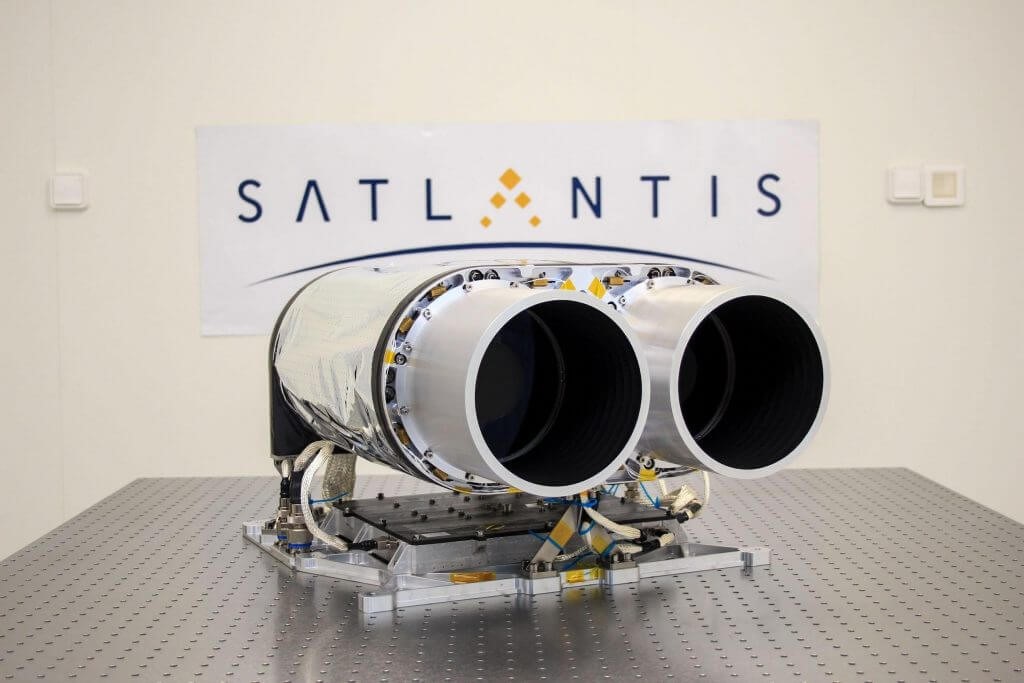 |
| Florian Kehl |
| Email Author |
| 2024-06-20, News |
XENONnT measures signals from solar neutrinos |
| XENONnT collaboration announced the first measurement of low-energy nuclear recoils from neutrinos produced in nuclear reactions inside the sun, particularly those involving the element boron. UZH Professor Laura Baudis and her group are involved in the XENONnT experiment with leading contributions to the detector and the analysis. |
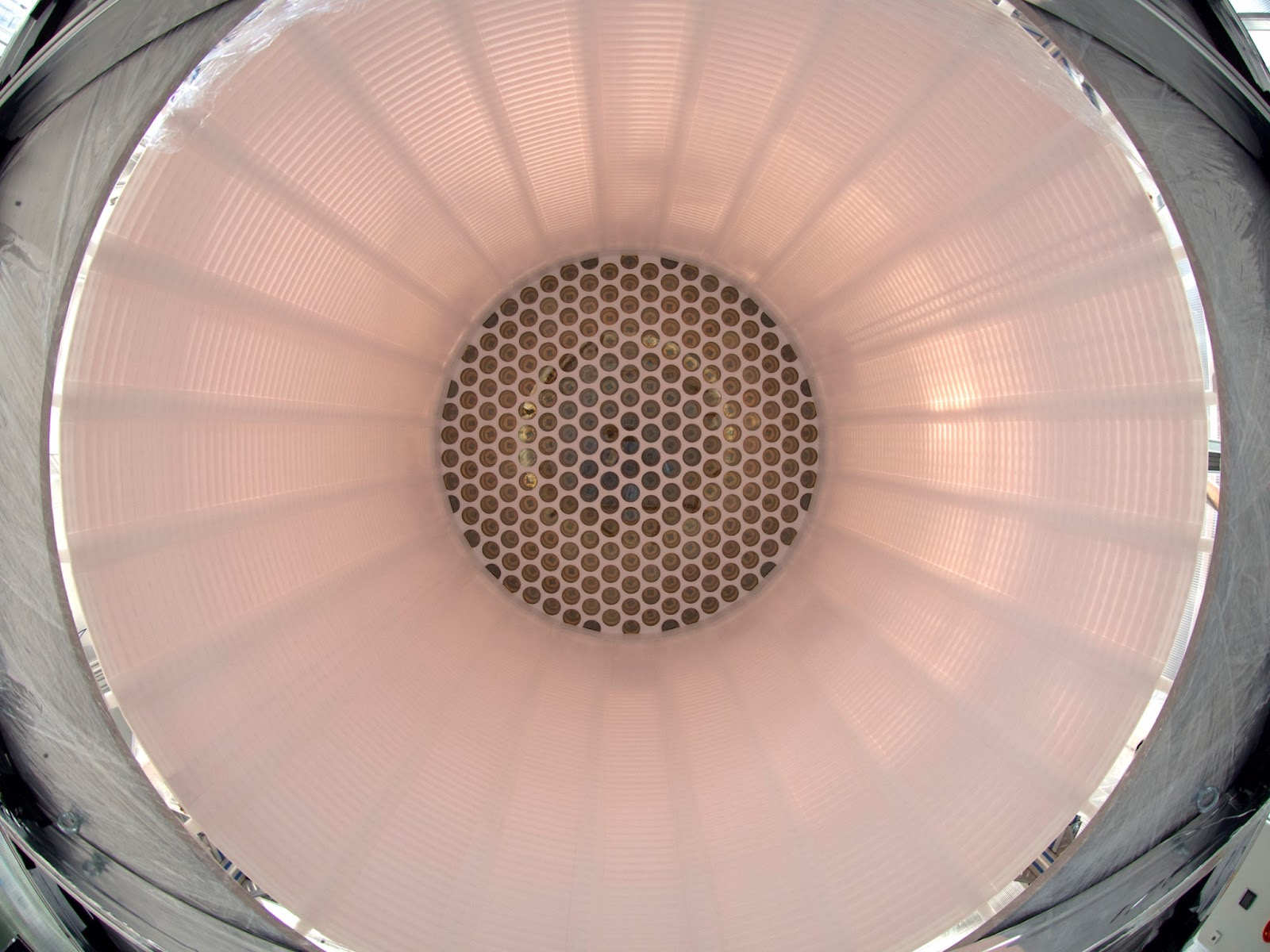 |
| Alongside hypothetical dark matter particles, neutrinos from the sun have long been predicted to be observable in detectors built to search for dark matter nuclear recoil signals when these detectors reach sufficient “exposure” and “sensitivity”. Exposure means how long we waited and how much material we have used to observe particles. Sensitivity is about how good we are at detecting the tiniest particles. Observing this feeble signal, with energies barely detectable in liquid xenon time projection chambers like XENONnT, requires excellent detector performance and sophisticated signal-to-background discrimination methods. The measurement confirms the understanding of the lowest-energy signals in XENONnT. Designed to be sensitive to rare interactions of potential dark matter candidates, XENONnT’s central detector is a dual-phase time projection chamber (TPC) with 5.9 tonnes of ultra-pure liquid xenon as active target. To achieve cutting-edge performance, the XENONnT experiment employs several advanced subsystems, such as cryogenic plants to maintain the liquid xenon at the necessary low temperature, an online cryogenic distillation column for the active removal of radioactive elements diluted in the xenon, and advanced slow control and data acquisition systems. A 700 tonnes water tank featuring active Cherenkov neutron and muon veto systems surrounds the XENONnT TPC to further reduce the background. XENONnT's low-energy detection capabilities and ultra-low background environment have enabled this first measurement. The analysis used data collected over two years, from July 7, 2021, to August 8, 2023, for a total exposure of approximately 3.5 tonne-years. An excess of low-energy nuclear recoil events over the expected background was measured, compatible with a signal from solar boron-8 neutrino interactions, with a statistical significance of 2.7 sigma, meaning that there is about a 0.35% chance that the observed signal is due to background noise. The result was obtained through a blinded analysis, meaning that the signal region remained obscured from the view of the scientists until all analysis steps were fixed to avoid human bias. This marks the first measurement of CEvNS from an astrophysical neutrino source. Moreover, such a significant result opens a new chapter in the direct dark matter detection field: XENONnT started exploring the so-called neutrino fog, where neutrino interactions are becoming a background that can mimic dark matter signals. Local information: The group of Prof. Laura Baudis at the University of Zurich had major responsibilities in the XENONnT TPC design and assembly, in the installation, calibration and readout electronics of the 494 photosensors, and in the measurements of tiny radioactivity traces in detector materials. The group also has leading involvements in the data analysis and in Monte Carlo simulations of the expected TPC signals and backgrounds. |
| Laura Baudis |
| Email Author |
| 2024-07-12, News |
"Almost a universe unto itself" |
| Leigh Johnson is a Verena Meyer Visiting Professor at GIUZ in the academic year of 2023/2024. She talks about her research and teaching, why she chose GIUZ for her sabbatical and what she will miss when she leaves Zurich. |
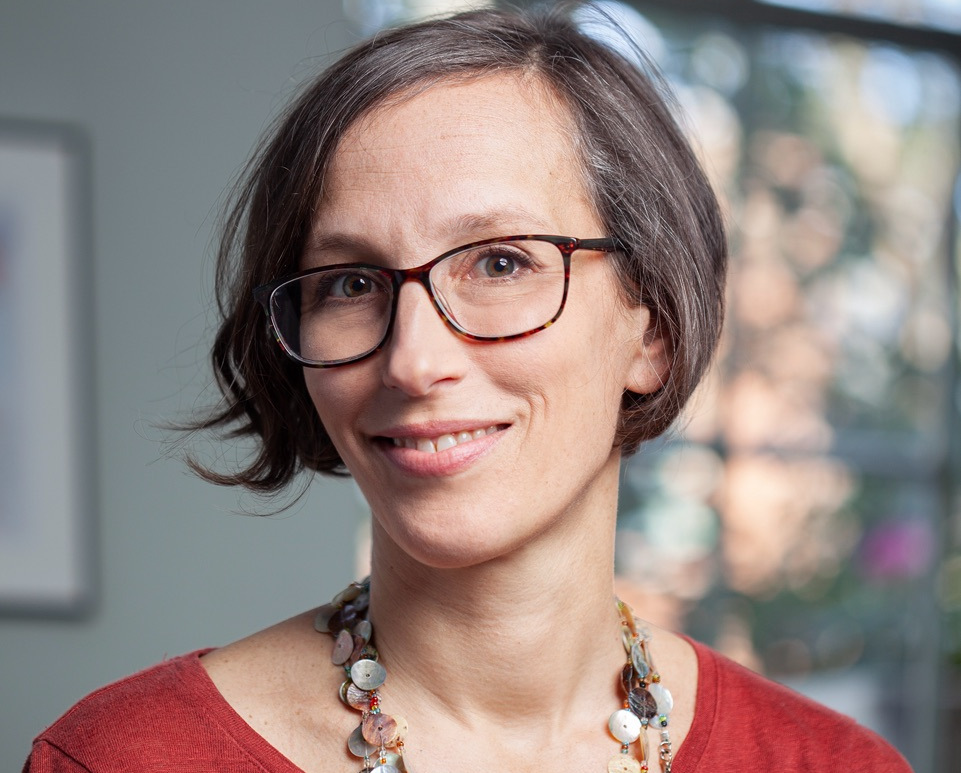 |
| Christian Berndt: What exactly is a visiting professorship? And the Verena Meyer scheme? There you are a Professor of Geography and Environmental Studies. What are you actually doing in research? Another strand of my research focuses on what I call “adaptation labor” - the work that people do to adapt to climate change. This is very often unrecognized, unwaged, and sometimes not considered “work” at all. So my research tries to document these dynamics, but also to build theory about how we can understand it within political economy and political ecology. Within that framework, so far I’ve been examining two very different examples. One is the organization of work on soil and water conservation landscape features in arid East African rangelands, and the other is the fire suppression work done by incarcerated people fighting wildfires in Oregon. And why did you choose GIUZ as the place for your sabbatical? Right. And during your time here at the department, what were the main things that you have been doing? Second, I began research in Kenya on soil and water “bunds”. These are small earthen semicircles that catch water runoff in arid and semi-arid rangeland landscapes, with the goal of regrowing perennial grasses for livestock grazing. I was able to do some field work in Kenya and present some preliminary results in a talk at GIUZ. I also gave numerous other talks in London, Paris and Lausanne. I also very much enjoyed teaching in the geography master’s course “Global Economic Geographies of Food and Agriculture” with you. It was a highlight to get to return to that course and interact with master’s students again. And finally, as part of the Verena Meyer program, I have developed and led different workshops both on being a mentor, and on developing your mentoring network for assistant professors and for postdocs/Oberassistent:innen, respectively. How does GIUZ as a place of work compared to your institution? There are also many more master’s students at GIUZ, and in general, students pursue master’s degrees in geography far more frequently in Switzerland than in the United States. I really enjoy and value that kind of seriousness and deep inquiry by students who may or may not pursue a further academic degree. That is very special, important training, and I think it is only possible given the particular funding conditions here. There is also life beyond work. What did you do in your free time while being in Zurich? I there anything that you missed while in being in Zurich? And what do you think you will miss when you are back in in Eugene? |
| Christian Berndt, Leigh Johnson |
| Email Author |
| 2024-07-31, News |
BBC Podcast "The Conversation" with Prof. Marta Manser as Guest |
| Prof. Marta Manser speaks at the BBC show "The Conversation" about meerkat vocalization, social structures, and group coordination. |
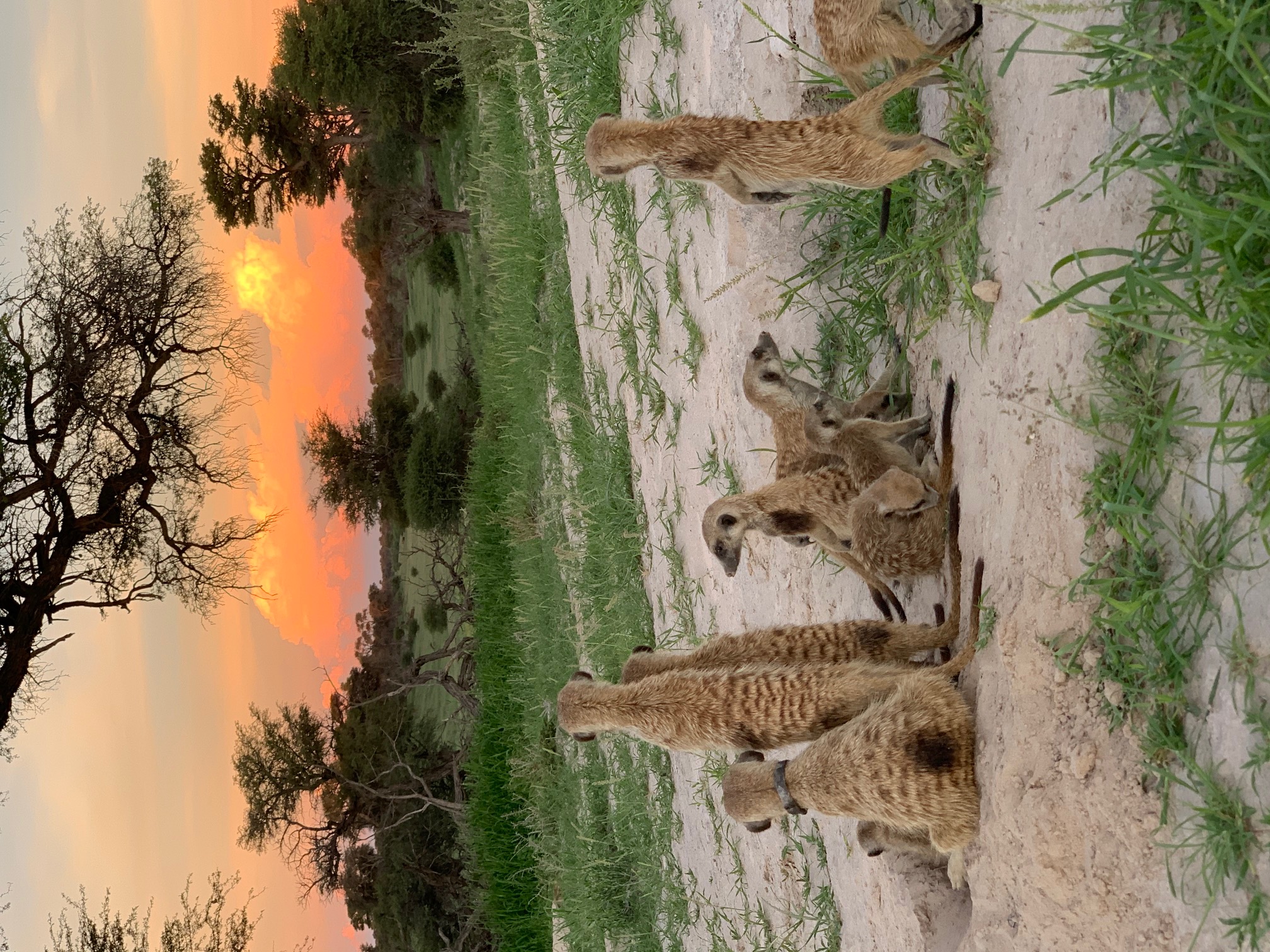 |
| Datshiane Navanayagam speaks with Prof. Marta Manser at the BBC show "The Conversation" about meerkat vocalization, social structures, and group coordination. Along with Marta Manser, the host also spoke with Dr. Gloriana Chaverri, Associate Professor at the University of Costa Rica, who works on the mating systems and social organization of bats. They also discuss some aspects of their life as scientists, challenges within their field work, and the academic environment in general. "The Conversation" focuses on two women from different parts of the world, united by a common passion, experience or expertise, share the stories of their lives. |
| IEU |
| Email Author |
| Department of Evolutionary Biology and Environmental Studies (IEU) |
| 2024-08-05, In the Media |
Art and Science at Science Pavilion UZH |
| The new exhibiton "U(ZH)N/EARTH - Art and Science 1600 meters below ground" at Science Pavilion UZH combines the search for the invisible with the beauty of art. |
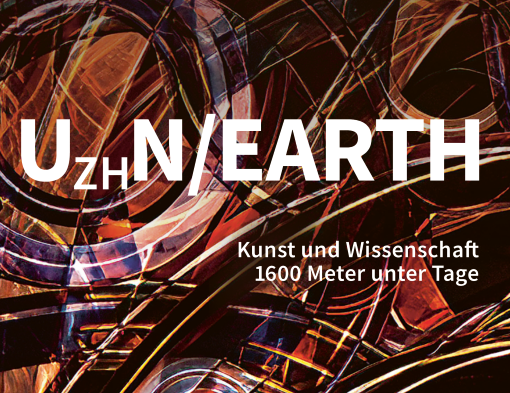 |
| We could find the answers to the universe's biggest questions deep underground. Inspiring art can also be created underground. Deep underground, 1600 meters below , researchers are searching for the answers to the universe's greatest mysteries. Here, at the Sanford Underground Research Facility (SURF) in South Dakota (USA), experiments are protected from the influence of cosmic radiation. The research facility is home to experiments investigating dark matter and neutrinos. As artist in residence at SURF, Prof. Gina Gibson created artworks inspired by the extraordinary environment of the research facility that visualize the search for the invisible. Let yourself be inspired by the fascinating research and the inspiring works and experience the union of art and science. Come and discover the art and science created 1600 meters underground. The exhibition is open daily from 12 - 5 pm. |
| Ilaria Brunetti |
| Email Author |
| 2024-09-04, News |
Plant diversity enhances ecosystem multifunctionality via multitrophic diversity |
| An international research team has shown that, in both forest and grassland ecosystems, the association between multitrophic diversity and multifunctionality was stronger than the relationship between the diversity of individual trophic groups and multifunctionality. Prof. Bernhard Schmid from the University of Zürich is part of the research team and senior author of the study. |
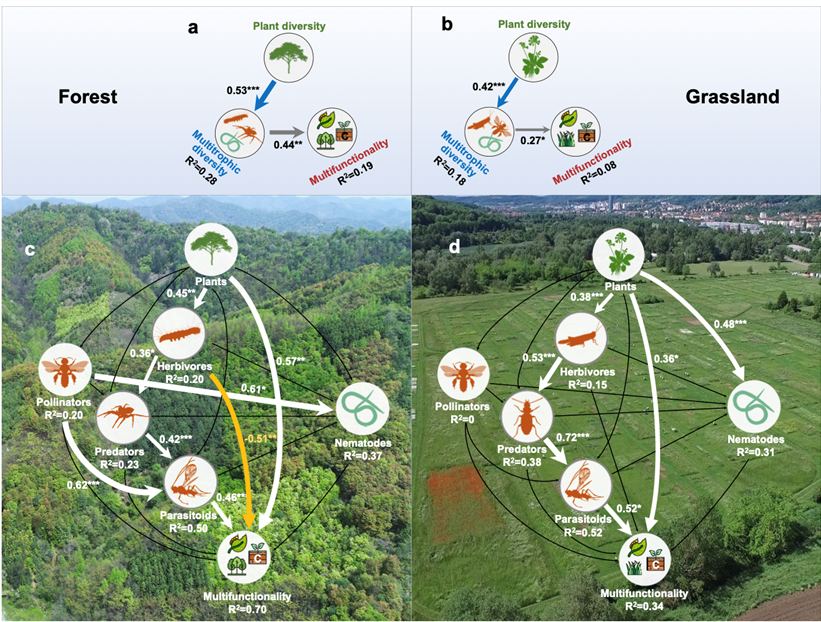 |
| An international research team led by Prof. Xiaojuan Liu from the Institute of Botany at the Chinese Academy of Sciences (IBCAS) has shown that, in both forest and grassland ecosystems, the association between multitrophic diversity and multifunctionality was stronger than the relationship between the diversity of individual trophic groups and multifunctionality. The researchers show that plant diversity increases multifunctionality through elevated multitrophic diversity. The results have recently been published in the journal Nature Ecology & Evolution. The findings imply that, to promote ecosystem multifunctionality, conservation planning must consider the diversity of both plants and higher trophic levels. Using data from two large biodiversity experiments, one representing subtropical forests (BEF-China) and the other temperate grasslands (the Jena Experiment) the results expand previous findings on the relationship between plant diversity and different ecosystem functions, including plant diversity and multifunctionality relationships. The study also reveals that the relationship between multitrophic diversity and multifunctionality is stronger than diversity effects of any individual trophic group, including plants and that the role of multitrophic diversity is greater in forests than in grasslands. Dr. Yi Li, the first author, explains that trees, with their longer life cycles and greater structural complexity compared to herbaceous plants, support higher multitrophic diversity and more complex trophic interactions. As Prof. Xiaojuan Liu, the management group leader of the BEF-China experiment platform and the last author explains, this study provides the first comprehensive experimental evidence that plant diversity enhances ecosystem multifunctionality via multidiversity in different types of ecosystems. Overall, although differences in the food web structure among ecosystems can lead to variability in specific relationships between diversity and functionality, this is leveled out when multidiversity is high. As Prof. Keping Ma, the chair of the BEF-China experiment platform said, this study contributes to strengthening public understanding of multidiversity conservation, including the diversity of both plants and higher trophic levels such as arthropods or soil nematodes. As the study shows, ecosystems can sustain many important functions, but only when diversity is high. Thus, it is important to preserve and manage all ecosystems to the benefit of species and mankind. Article link: https://doi.org/10.1038/s41559-024-02517-2 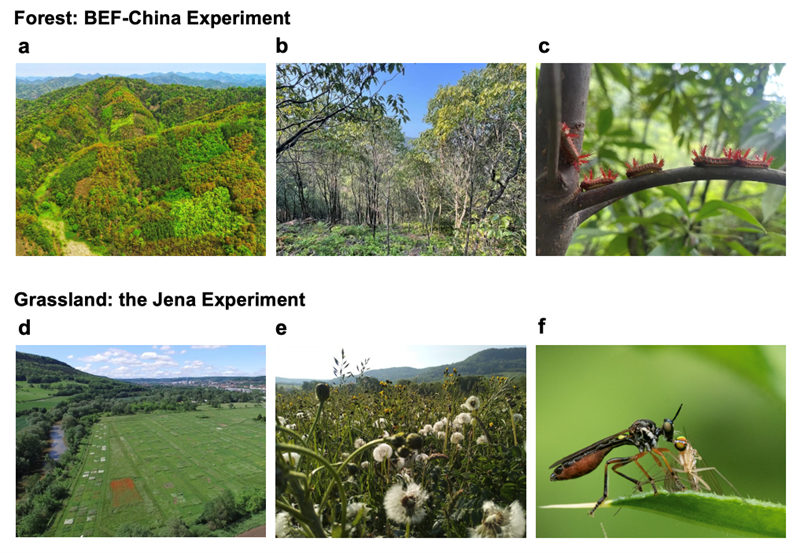 |
| Bernhard Schmid |
| Email Author |
| 2024-09-09, Sci. Publication |
20 Years of Business Chemistry - a success story |
| The course business chemistry is unique in Switzerland and was introduced at UZH in the fall semester of 2004 by Prof. Stefan Seeger. It promotes the training of scientific managers who can solve business-related problems using an analytical mindset. |
| |
| What is business chemistry? This question has been asked by almost all prospective students at the study information days for 20 years. Even after 20 years, the interest in this innovative degree course remains high, as it combines two very important and fundamental subject areas for industry in one degree course and thus offers graduates the best job prospects. The course business chemistry is unique in Switzerland and was introduced at UZH in the fall semester of 2004 by Prof. Stefan Seeger. It promotes the training of scientific managers who can solve business-related problems using an analytical mindset. Find out what Prof. Stefan Seeger, founder and head of the program, has to say on the occasion of the 20th anniversary of the Business Chemistry program and what graduates think about their studies. Link to the videos: https://www.wichem.uzh.ch/de/20-Jahre-Wirtschaftschemie.html |
| Irène Studer-Rohr |
| Email Author |
| 2024-10-17, News |
When virology meets chemistry – Stepwise viral morphogenesis revealed by dual-color click chemistry |
| Viruses carry nucleic acids and proteins between cells and organisms, and give rise to vast amounts of viral proteins and genomes in infected cells. Yet, it is still largely unknown how viral particles are assemble. Gomez-Gonzalez et al. visualize how viral proteins and genomes coalesce and give rise to adenovirus, an abundant human pathogen and important gene therapy and vaccination vector. |
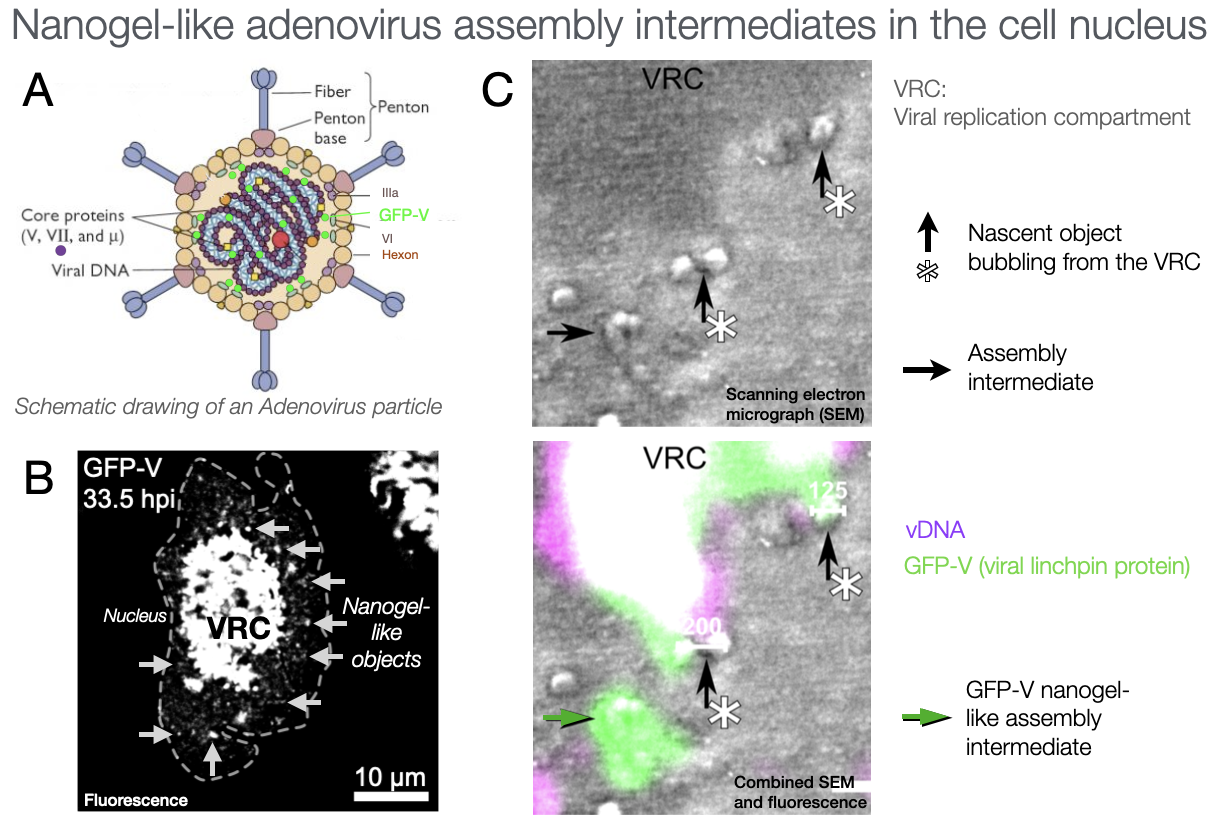 |
| Virus particles enclose an RNA or DNA genome and they transfer this information between cells. Their size ranges from nanometers to micrometers. One of the best studied human DNA viruses is adenovirus (AdV), a causative agent of pneumonia, keratoconjunctivitis, and gastro-intestinal tract infections. AdV persists in lymphoid cells of mucosal tissues, and presents a threat to immunocompromised patients. Despite more than 70 years of molecular cell biology and Nobel Prize winning research with adenoviruses, fundamental questions of the viral life cycle have remained mysterious. |
| Professor Urs Greber |
| Email Author |
| 2024-10-25, Sci. Publication |
The calming side of glutamate: retinal inhibition through a classic excitatory neurotransmitter |
| In textbooks glutamate is described as the quintessential excitatory neurotransmitter of the brain. Now an inhibitory action of glutamate, mediated by a coupled transporter/anion channel protein, has been revealed in the retina with an impact on vision. |
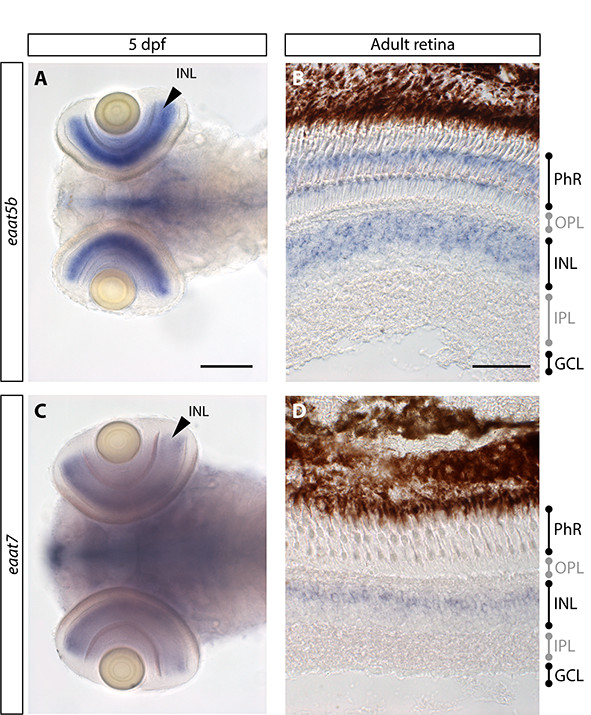 |
| In the vertebrate brain, glutamate is a key chemical messenger that excites nerve cells, helping them communicate. But in the retina, the light-sensitive tissue in the back of the eye, glutamate released from photoreceptors can have a different effect—it calms, or "hyperpolarizes," certain downstream cells called ON-bipolar cells. This is unexpected, since effectively glutamate acts in this context as an inhibitory neurotransmitter. In this publication we report research that shows that this effect is influenced by two glutamate transporters, called EAAT5b and EAAT7 (excitatory amino acid transporters). EAAT Glutamate transporters are known to not only transport glutamate, but at the same time act as anion (usually chloride) channels. Two of these transporters are located in the synapse where ON-bipolar cells connect with all types of cone photoreceptors in the retina. When these transporters are absent, ON-bipolar cells have weaker responses to light signals. This effect is more pronounced in zebrafish missing both transporters, which also show slower signaling responses compared to zebrafish missing only one transporter (EAAT5b). We also report that EAAT7 is an active glutamate transporter with a strong tendency to conduct chloride ions, helping explain how it influences these cells' response to glutamate. This study is the first to show that specific glutamate transporters on the receiving side of a synapse play a role in inhibiting, rather than exciting, signals in the retina—a finding that sheds light on how retinal and other brain circuits process information.
Reference: Niklaus S, Glasauer SMK, Kovermann P, Farshori KF, Cadetti L, Früh S, Rieser NN, Gesemann M, Zang J, Fahlke C, Neuhauss SCF* (2024). Glutamate transporters are involved in direct inhibitory synaptic transmission in the vertebrate retina.Open Biol. 14(7):240140. https://royalsocietypublishing.org/doi/epdf/10.1098/rsob.240140 |
| Prof. Stephan Neuhauss |
| Email Author |
| 2024-11-06, Sci. Publication |
Long Nights of Careers |
| The Long Nights of Careers are just around the corner again! |
 |
| The Long Nights of Careers (LNoC) is our annual career highlight in autumn. Students at all levels as well as doctoral students and postdocs from all faculties have the opportunity to talk to numerous employers on the evenings of 13 November and 14 November. Especially for the Faculty of Mathematics and Natural Sciences, there are exciting career prospects formats (What do you do with it?) for life science, maths/physics/chemistry and geography. For geographers, for example, there is also an event organised by CUREM: Building Your Future - Starting out in the property industry.
|
| Annette Marty |
| Email Author |
| https://uzhcareer.ch/de/events/detail/?id=07315d08-c880-ef11-9b53-a3cd253bd775 |
| https://uzhcareer.ch/ |
| 2024-11-08, Event |
High altitude dilemmas: Is GIUZ ready to reduce its air travel for a more sustainable academia? |
| A master's thesis investigated the willingness of the staff of the Department of Geography to implement measures to reduce air miles and the impact on greenhouse gas emissions. The result: There is no easy way forward to reduce academic air travel. The thesis was awarded the semester prize by the Faculty of Science, UZH. The study has now been published in Environmental Research Communications. |
 |
| “Last call for passengers to Los Angeles International Airport.” That’s your flight. You grab your bags and head to the gate. “I shouldn’t fly; it’s bad for the environment.” You board the plane. “But I need to attend this conference. Everyone in the field is going, and I don’t want to miss out. It’s not my fault they chose LA.” Full thrust. You rush towards the clouds. Your round trip emits more CO2 than the average person in more than 80 countries produces in a year. If that sounds familiar to you, congratulations, you’re likely a researcher! Attending conferences overseas, participating in meetings abroad, teaching classes at other institutions, and conducting fieldwork in remote areas – air travel is a central aspect of academia, and many scientists fly multiple times per year for their work. While academic air travel is often considered crucial for a successful career, it also represents a significant environmental burden. At the University of Zurich, prior to COVID-19, the largest share of greenhouse gas (GHG) emissions was caused by the air travel of its academic staff, mainly due to abroad conference participation. From analyzing data to gathering opinions I designed and conducted a survey to gather opinions and willingness to implement voluntary reduction measures at GIUZ. Furthermore, I analyzed data collected by the GIUZ Airmiles Group to develop reduction scenarios for each proposed measure. A classical attitude-behavior gap The results suggest that GIUZ may not meet its air travel reduction goal by only targeting the low-hanging fruits. Implementing less popular measures may be crucial, as they can significantly reduce GHG emissions. Increasing acceptance, exploring examples of good practice and removing barriers to the implementation of high-impact measures should be the focus. A key fact to consider when booking work-related flights: Between 2017 and 2022, about 50% of GIUZ's air journeys were short and medium haul, while the other 50% were long haul. However, long-haul flights accounted for about 85% of the air travel GHG emissions, with short and medium-haul flights responsible for only 15%. Therefore, even a small reduction in overseas air travel can significantly impact GIUZ’s GHG emissions. Bagutti, Rocco (2023): Academic air travel at UZH's Department of Geography: Assessing the willingness and reduction potential of voluntary reduction measures The results have now been published in Environmental Research Communications.  |
| Rocco Bagutti |
| Email Author |
| 2024-11-25, News |
Roland Tormey workshop - Teaching at the Faculty of Science (MNF) |
| In late November, the MNF Teaching Hub hosted a successful workshop featuring Roland Tormey, head of Teaching Support at EPFL and a leading expert in active learning and engagement in university teaching. |
 |
| In late November, the MNF Teaching Hub hosted a successful workshop featuring Roland Tormey, head of Teaching Support at EPFL and a leading expert in active learning and engagement in university teaching. This was not a typical two-hour course, as Roland used a mere three slides! to present three ideas to participants. Each slide was a graph. For each graph, participants looked at the slide alone for 3 minutes, identifying what they thought it meant and identifying any questions they had. Participants then tried to answer their own questions with neighbors, and finally brought any remaining questions to Roland when necessary. Active learning in an active learning workshop - well done, Roland!
The three graphs showed that active learning increases student performance (Freeman et al., 2014), feedback improves learning (especially peer-to-peer feedback and process-oriented feedback) (Wisniewski et al., 2020), and demonstrating disciplinary thinking matters (Duré et al., 2016).
The MNF Teaching Hub is group dedicated to improving our own teaching practices and spreading good ideas to colleagues. The Hub is open to anyone who wants to come, learn, and contribute. For more information, please contact sara.petchey@mnf.uzh.ch.  |
| Sara Petchey |
| Email Author |
| 2024-12-10, News |
One Health, Many Maps: What Cartography Teaches Us About Antimicrobial Resistance in Humans, Animals |
| The inaugural lecture by Prof. Thom Van Boeckel, One Health Institute (VSF, MeF, MNF), will take place on 17.02.2025 at 17:00 (Aula KOL-G-201) and is entitled “One Health, Many Maps: What Cartography Teaches Us About Antimicrobial Resistance in Humans, Animals, and Food Systems”. Live stream and video at https://www.uzh.ch/en/events/events/av.html |
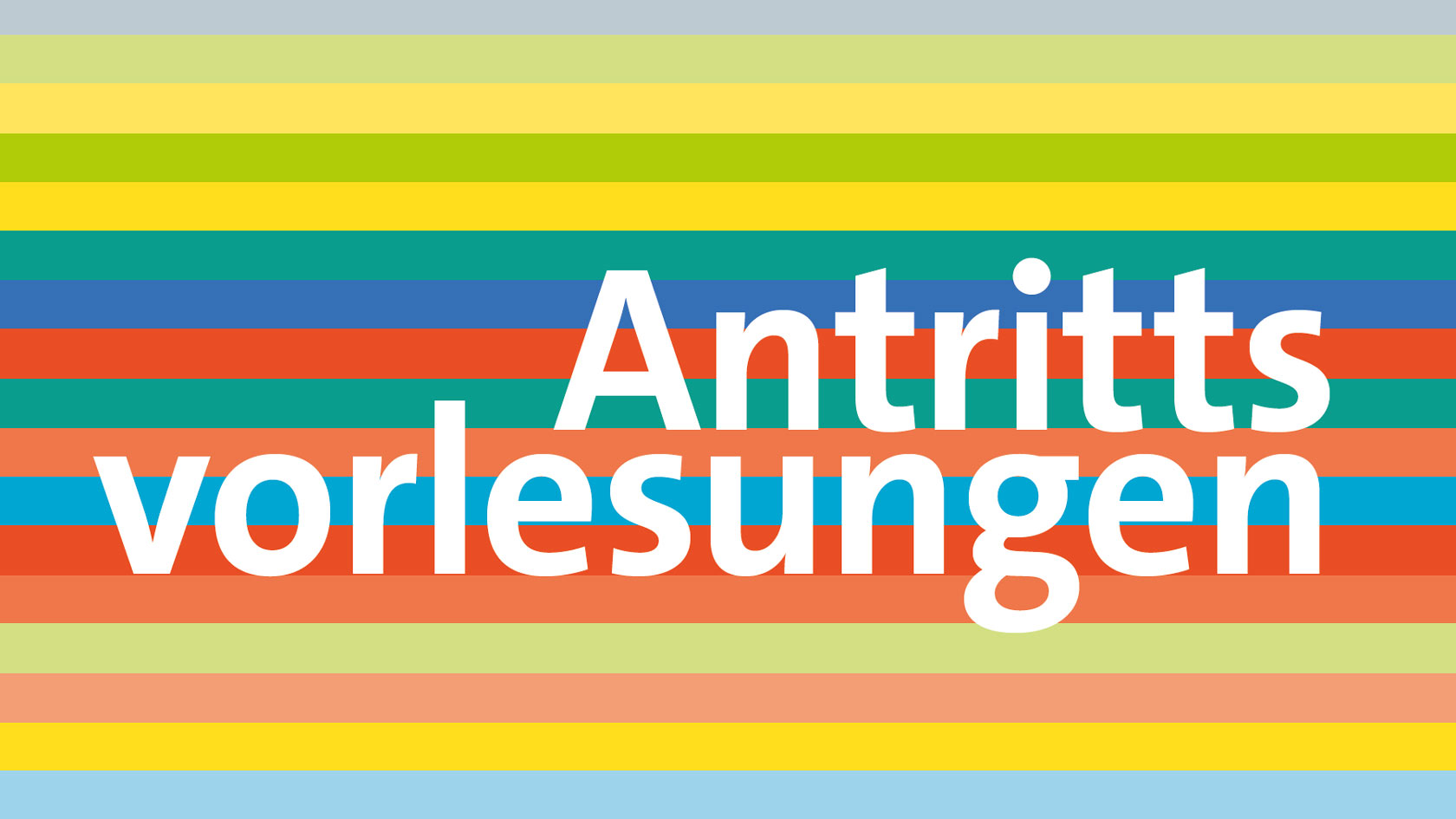 |
| |
| Dr. Laura Tüshaus-Rudin |
| Email Author |
| https://www.onehealth.uzh.ch/en/about/team/management/t%C3%BCshauslaura.html |
| 2025-01-10, Event |
"We might be underestimating biodiversity loss" |
| Researchers have discovered more than 200 new animal and plant species in the Mekong region of Southeast Asia. In an interview with Radio SRF, Sofia van Moorsel, biodiversity expert at the Department of Geography, explains what science can learn from this and whether these species discoveries can put extinction into perspective. |
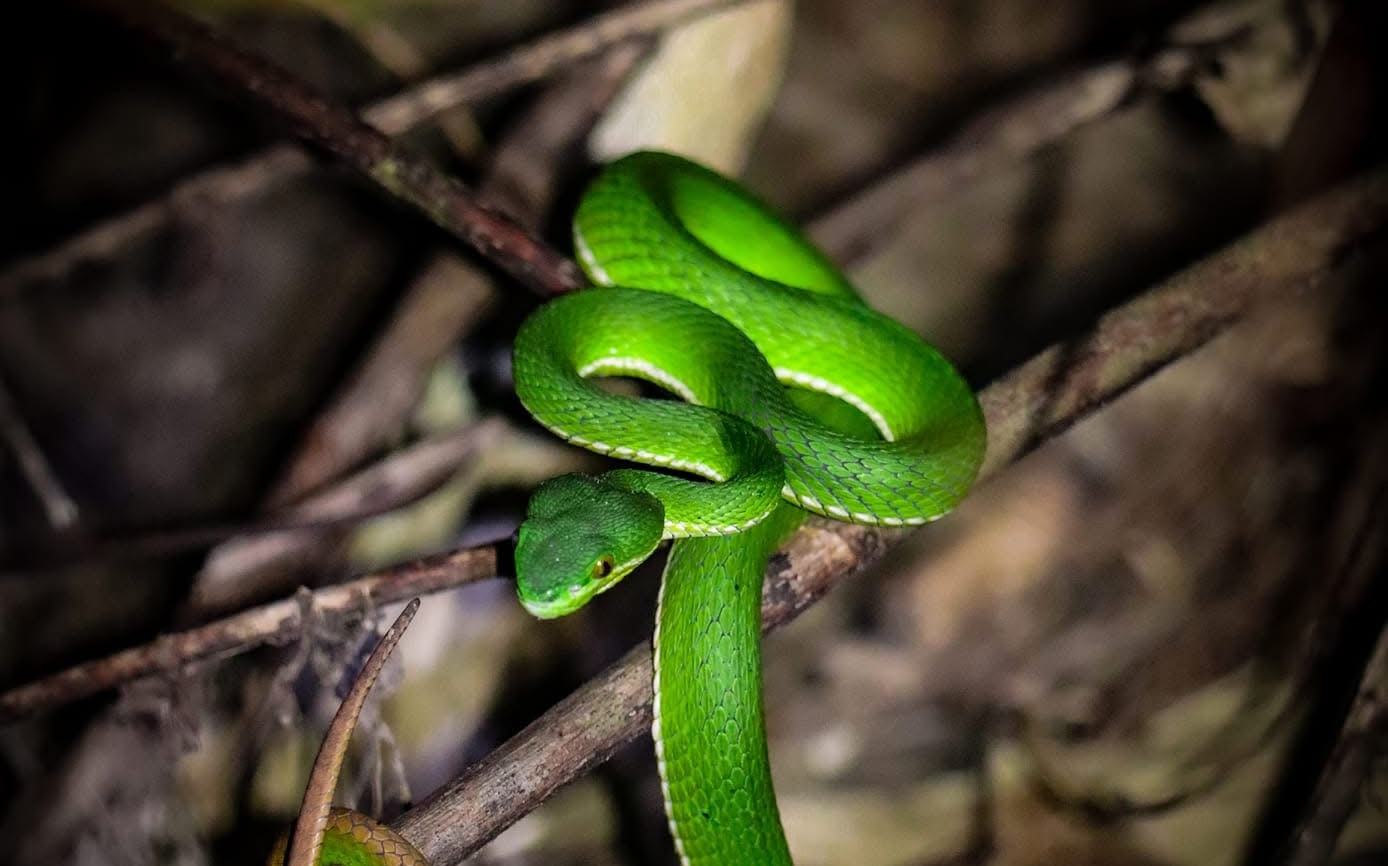 |
| "'Newly discovered' does not mean that nobody knew about these species before. The locals were probably already aware of them," says Sofia van Moorsel. But this is the first time that these animal and plant species have been systematically and scientifically described. These findings cannot prevent or slow down species extinctions, as the newly discovered species are often already endangered and more species are being lost than new ones being found. "In some cases, the last individuals of the species had already been identified at the time of discovery," says van Moorsel. Nevertheless, the findings provide valuable information about the balance of an ecosystem. "But with the loss of habitats, it is likely that even more species are going extinct than we previously thought." To the radio interview (in German) WWF report highlights 234 new species discovered in the Greater Mekong region New Species Discoveries in the Greater Mekong 2023 |
| Sofia van Moorsel |
| Email Author |
| 2025-01-22, News |
Science Info Day for highschool students |
| On Saturday, March 8, 2025, the Science Info Day, the information day for prospective students, will take place on the Irchel Campus. Are you unsure which mathematics and science degree program is right for you? Get a taste of university life, meet students and gain insights into studying! |
| |
| Am 08. März 2025 von 12:00-16:30 Uhr findet der traditionelle Science Info Day der Mathematisch-naturwissenschaftlichen Fakultät (MNF) der Universität Zürich, also der Faculty of Science, statt! Uniluft schnuppern, einen Blick in Vorlesungssäle und Labore werfen, in die Zukunft schauen, Antworten bekommen, Studierende ausfragen - all das ist möglich. Den Auftakt machen unsere drei Studierenden: Lars Weidinger studiert im Bachelor Geographie, Claudia Lourenço Rodrigues macht ihren Master in Biostatistik und Flavia Kradolfer ist bald Doktorin der Chemie. Weitere Highlights sind die Führungen durch die "heiligen Hallen". Unsere Labore können bei einer Führung erlebt werden und spannende Fakten zum Studium werden so ganz nebenbei vermittelt. In Vorträgen erfährt man mehr über die Studienfächer, was genau zu einem passt und kann auch schon einmal eine Vorlesung miterleben. Das vollständige Programm kann hier abgerufen werden: |
| Korinna Esfeld |
| Email Author |
| https://www.mnf.uzh.ch/de/oeffentlichkeit/veranstaltungen/science-info-day.html |
| 2025-02-09, Event |
“Geography has shed its old-fashioned image” |
| Robert Weibel was Professor of Geographical Information Science at GIUZ until the end of January 2025. In this interview, he explains how a US president's executive order changed not only the subject, but the world, what was most important to him in teaching and what his plans are for the future. |
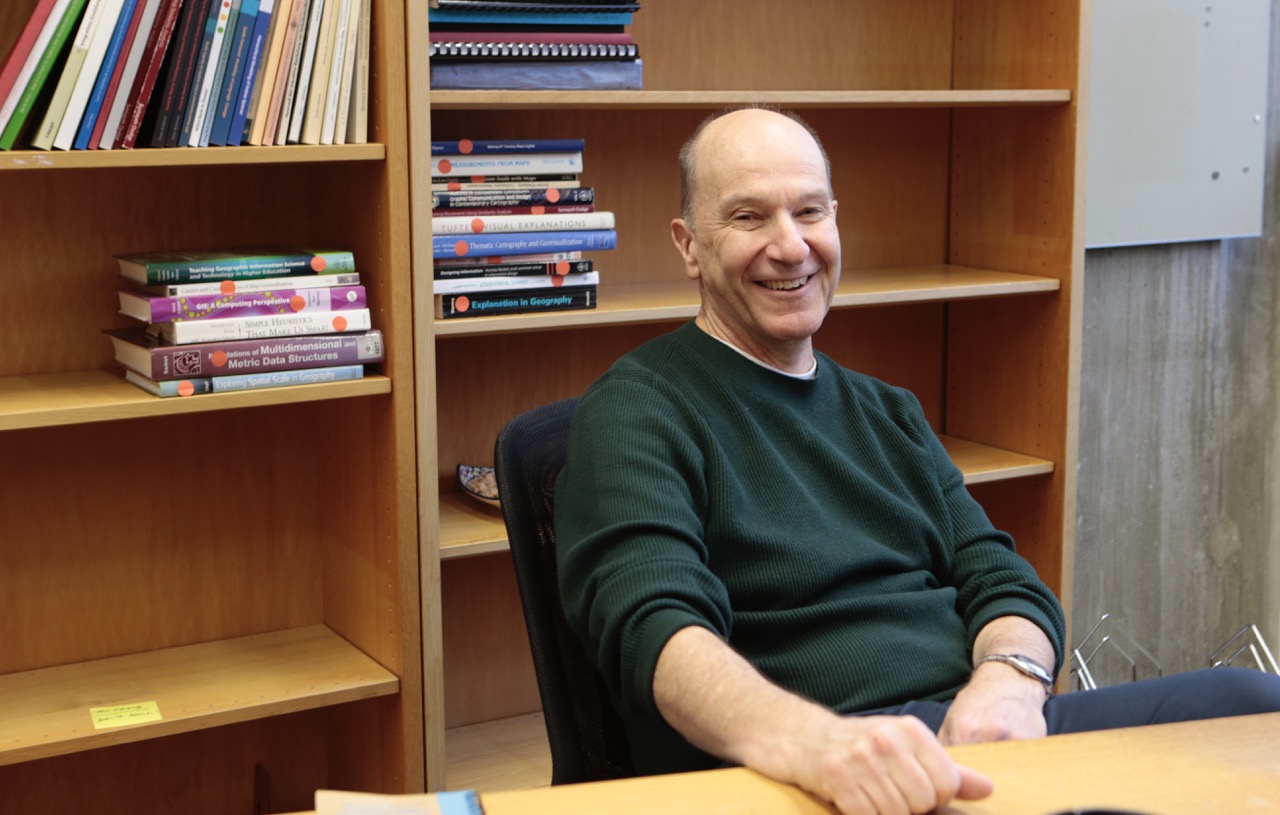 |
| Magdalena Seebauer The bookshelves are already pretty empty when I meet Robert Weibel in his office at the end of January. His time as Professor of Geographical Information Science is coming to an end. "My wife is a librarian, she taught me how to screen out things efficiently", he says with a laugh. He points to the recycling container, which is once again full to the brim. "The fact that we can now store so much in digital form is a blessing", says someone in whose professional and academic life digitalisation has fundamentally changed the subject of geography. An incredible amount has happened since the 1980s, when you were a student and geographic information science still in its infancy. Back then, you were initially processing data on punch cards - now AI is shaping our everyday lives. When you look back: Is there a single event that has particularly influenced or driven this development? Just think about how many applications now use GPS! I can't imagine the smartphone being developed just as a mere phone. Crucially for geography: If you use Google Maps, Uber or Strava today, you also have to deal with geographic space. As a result, geography has entered everyone's life through the back door and has been able to shed its old-fashioned image. In addition to all the commercial applications, the boost to research was immense. It was suddenly possible to equip study participants, vehicles or even wild animals with a location sensor relatively easily and cheaply. This opened up many new possibilities that had previously been unthinkable. But it also had other consequences. Which ones? In addition, GIS began to gain a foothold in research and teaching in geography departments worldwide in the 1990s. GIUZ was the first department in continental Europe to establish a chair specifically for GIS in 1981, taking a leading role. When some expand, others feel squeezed. In the years that followed, there was an intense debate within geography about how technology affects society – and vice versa. One result was that GIS ceased to stand for Geographic Information Systems and became Geographic Information Science. This put science, not just technology, at the centre. This critical debate, but also issues such as access to information and inequality, have led to new links with the social sciences. Disciplines such as history, sociology and linguistics have discovered the importance of space for their research. And previously under-represented groups have been included in surveys. Many citizen science projects have also become possible. It became clear that technology should not be used for its own sake, but to add value to society. This led to a fruitful, interdisciplinary interaction. And what happened with the advent of big data in the 2000s? This carries the risk of unreflected research. And it raises a lot of ethical questions. Can we use all these data? Who is allowed to – and under what conditions? Simply anonymising tracking data is not enough. It is relatively easy to deduce where a person lives and works. If that person also posts geo-referenced images on social media, it is easy to reconstruct their daily routine. Ultimately, there is always a trade-off as to how far the data must be degraded to protect privacy, yet still be able to answer certain research questions. Where do we stand today? And executive orders from a US president are also changing the framework massively today, as we are seeing almost every minute. And they could have an even more dramatic impact on our daily lives and our research. This is a worrying development. You mentioned teaching – you have guided many students over the years. What has been most important to you? The interest was always mutual. The companies wanted to present their internships, and the students got a first-hand impression of what awaits them in professional life – and that they are welcome in the industry. I like to see where our GIS graduates are today. It gives me the feeling that I have made a significant impact. What’s next for you? Much of my work will be that of a postdoc: I'll be analysing data, programming and much more – I'm really looking forward to it! In our MOASIS project, we are investigating how mobility, activity and social interactions affect well-being and mental performance. We now have longitudinal data from a fairly large sample of test subjects over six years. I am curious to see what comes out of this! I will also continue to supervise three PhD candidates and work on other, smaller projects, for example with the Department of Sport, Exercise and Health at the University of Basel. You have rowed in the UZH professors’ boat for many years. How will your sporting career continue? Current research projects One of the rowing races of the UZH professors’ boat - with Robert Weibel on stroke position - can be experienced live here. |
| Prof. em. Robert Weibel |
| Email Author |
| 2025-03-05, News |
Minor Days |
| Want more? Many programs, many possibilities - that's what the minor programs at MNF and UZH stand for. In the week from 31.03.-04.04.2025, the minor subjects will present themselves on posters in the atrium on the Irchel campus and on Wednesday, 02.04.2025 with lightning talks at Speed Dating. |
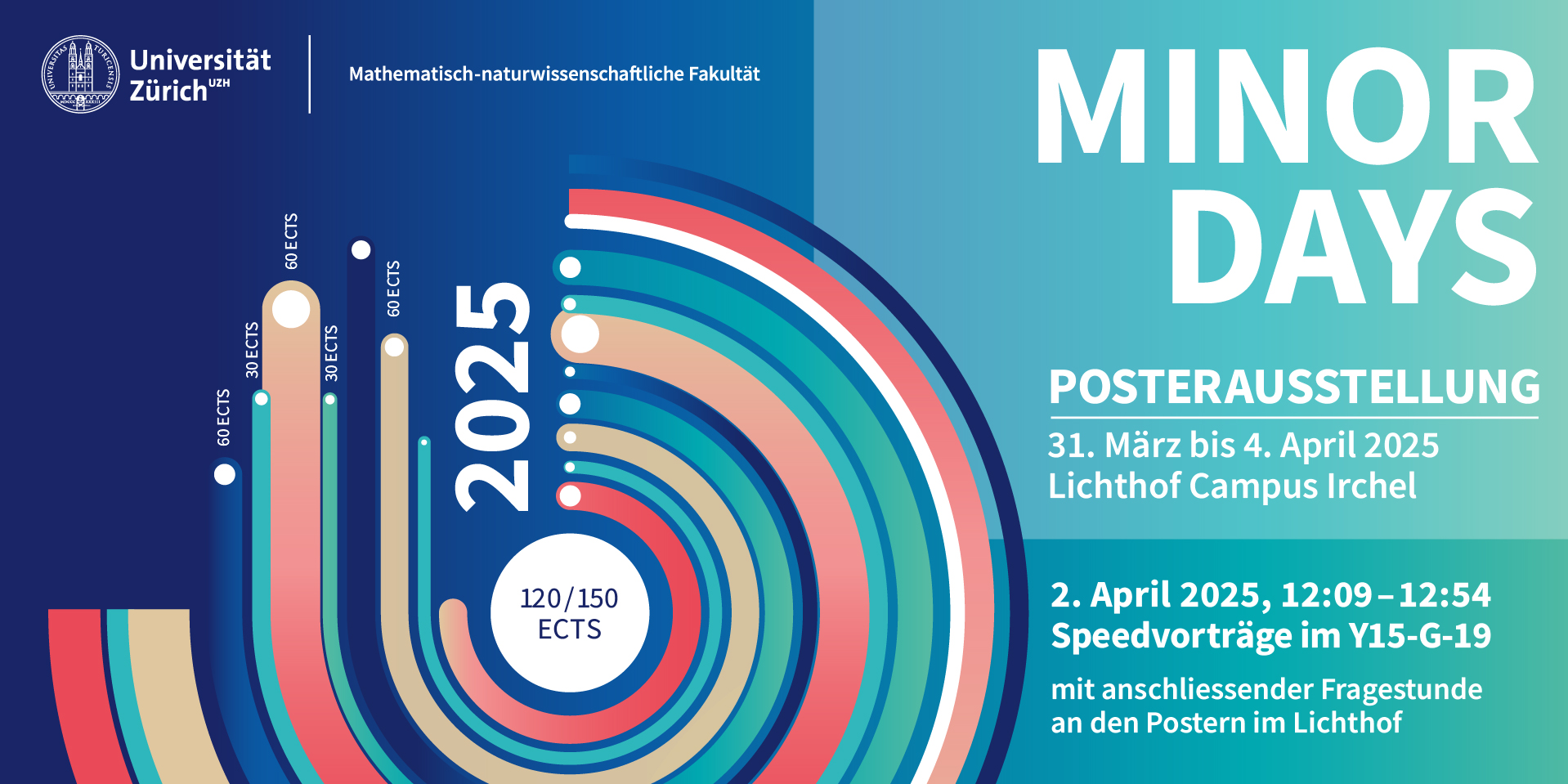 |
| The minor study programs are one of the many advantages of studying at UZH. The minor program is chosen in the 2nd semester and usually started in the 3rd semester. More than 20 minor programs can be studied and combined with a major. Whether you choose your major/minor combination strategically or based entirely on your interests is up to you. Need help deciding? In the week from 31.03.-04.04.2025, the minor subjects will be presented on posters in the atrium on the Irchel campus. The Speed Dating on Wednesday, 02.04.2025 from approx. 12:00-13:00 in Y15-G-19, shows the whole minor world in flash presentations of 2 minutes each. Translated with DeepL.com (free version) |
| Korinna Esfeld |
| Email Author |
| https://www.mnf.uzh.ch/de/studium/veranstaltungen/minor-days.html |
| 2025-03-17, Event |
Ig Nobel EuroTour |
| The Ig Nobel Prize celebrates scientific research that first make people laugh, and then make them think. |
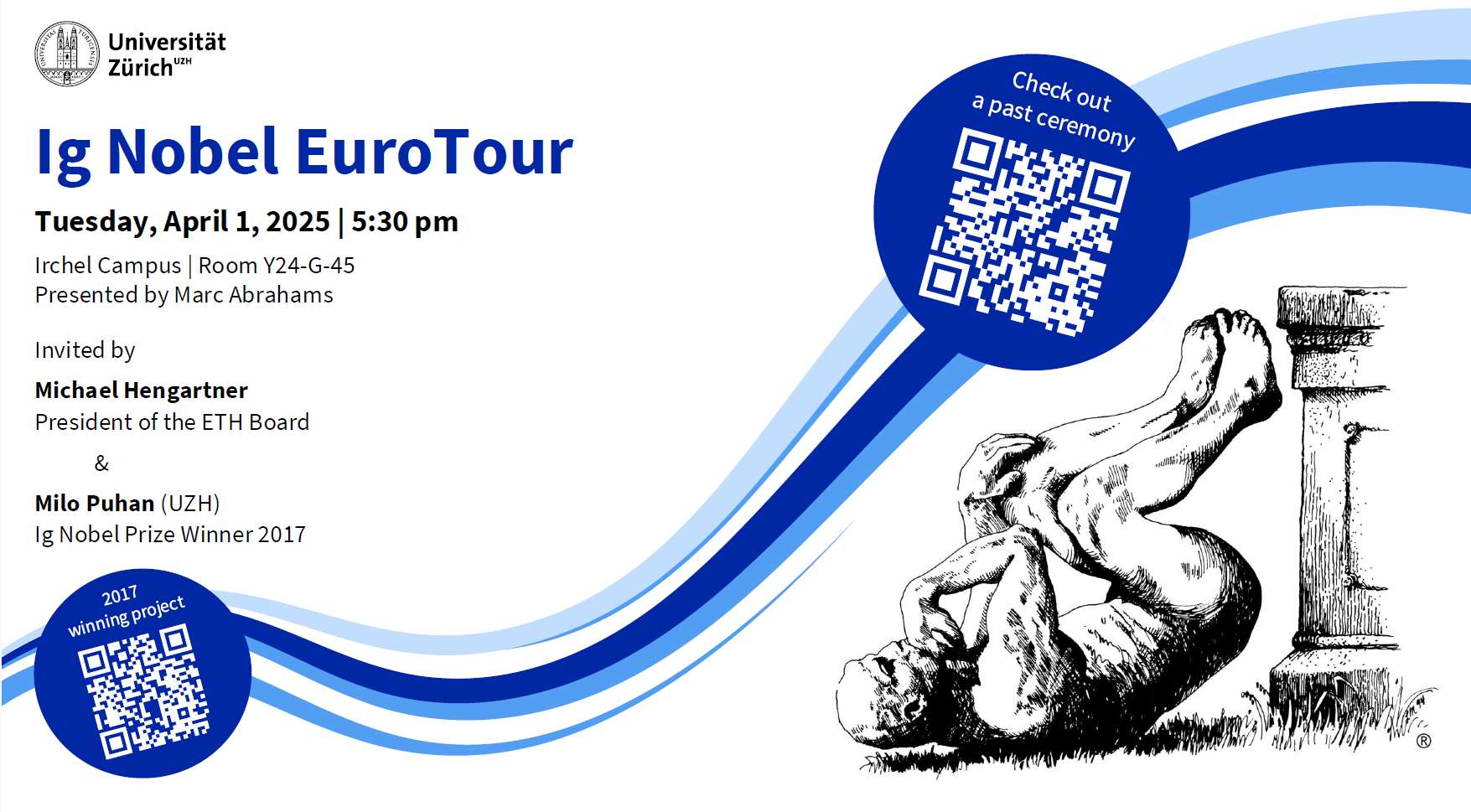 |
| The Ig Nobel Prize celebrates ten unusual or trivial achievements in scientific research. Its aim is to "honor achievements that first make people laugh, and then make them think.". The Ig Nobel Euro Tour will stop at UZH on Tuesday, April 1, 2025 at 15:30 in Y24-G-45. And no, it is not an April Fool`s. |
| KE |
| Email Author |
| 2025-03-21, Event |
Sex and evolution: lessons from the plant kingdom |
| Researchers have uncovered new insights into the evolution of cosexuality in plants by studying the genome of the liverwort Marchantia quadrata. Their findings reveal how sex chromosomes are reshaped when plants transition from separate sexes to cosexuality, providing a window into the broader mechanisms of sex chromosome evolution in plants. |
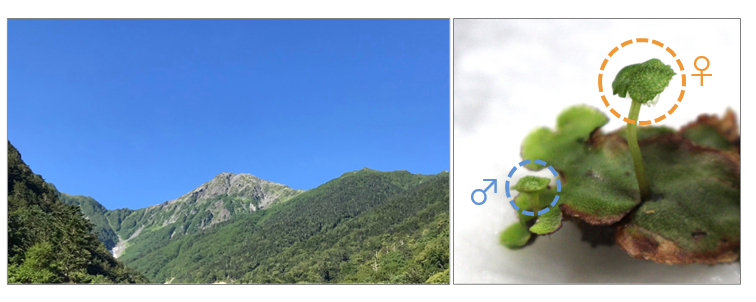 |
| The mystery of sex chromosomes in plants Liverworts, a group of ancient land plants that thrive in damp environments, are an exception: most species have separate sexes, controlled by two sex chromosomes known as U and V, which determine femaleness and maleness, respectively. A recent study led by Péter Szövényi’s group at UZH, in collaboration with Yukiko Yasui from Kyoto University, focused on Marchantia quadrata, one of the few liverworts that evolved cosexuality. The study aimed to answer a key question: what happens to the sex chromosomes when a species transitions to cosexuality?
How did cosexuality evolve in Marchantia quadrata? With both the V chromosome and the Feminizer gene present, M. quadrata has the genetic potential to develop both male and female reproductive organs. However, this also poses a challenge: without proper regulation, the plant could end up with reproductive structures that are an uncoordinated mix of male and female traits. To prevent this, M. quadrata has evolved a mechanism that activates male and female genetic pathways at different times, ensuring that reproductive structures develop in a controlled and functional manner. Remarkably, similar genetic changes were observed in another liverwort species, Ricciocarpos natans, which independently transitioned to cosexuality. This suggests that certain genetic pathways may be more predictable than previously thought, leading different species to evolve cosexuality in similar ways.
Why is this important? Understanding these transitions is not just an academic exercise. It could help scientists predict how other plants might evolve their reproductive systems, with implications for agriculture and plant breeding.
|
| Peter Szovenyi |
| Email Author |
| 2025-04-04, Sci. Publication |